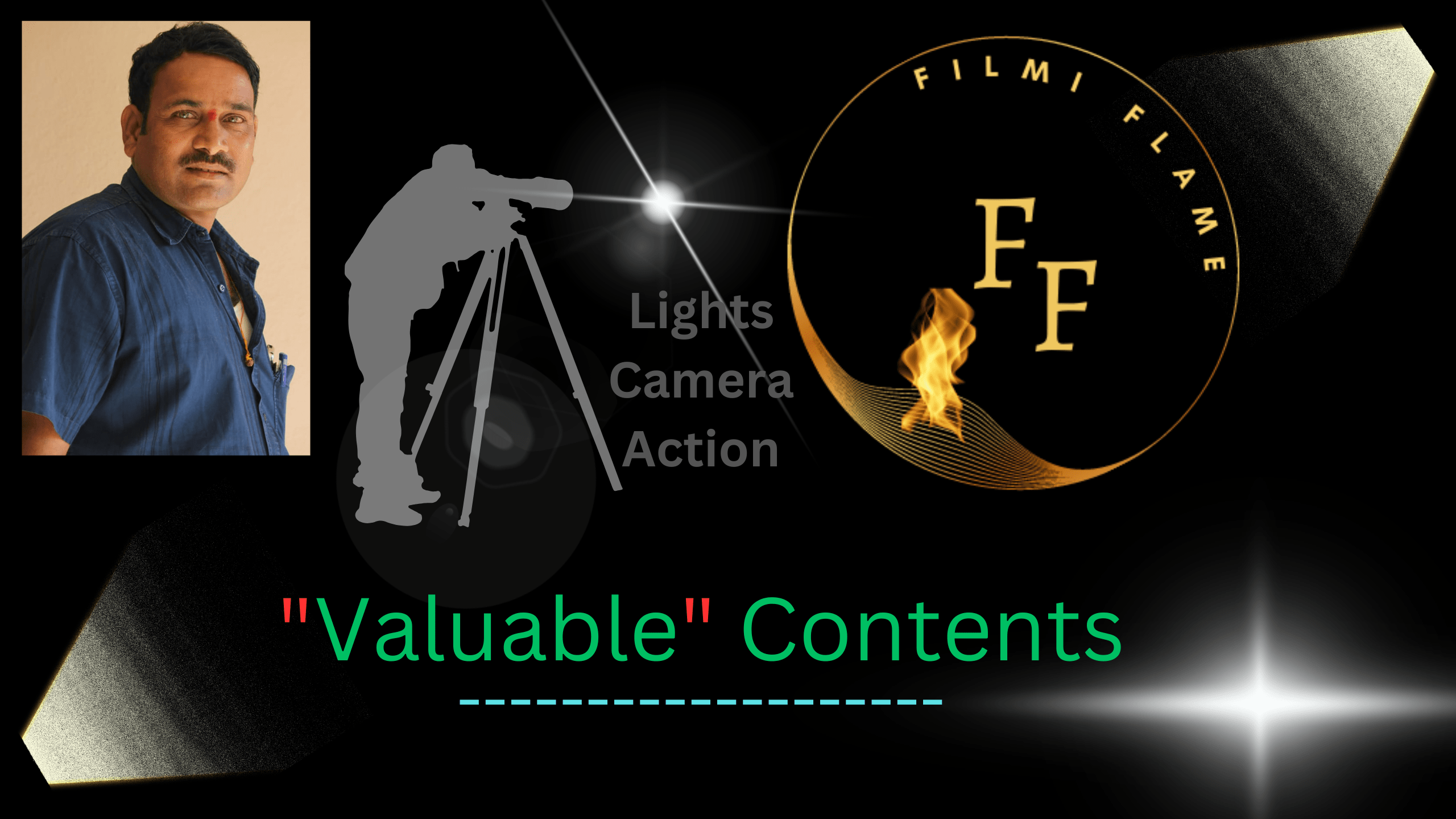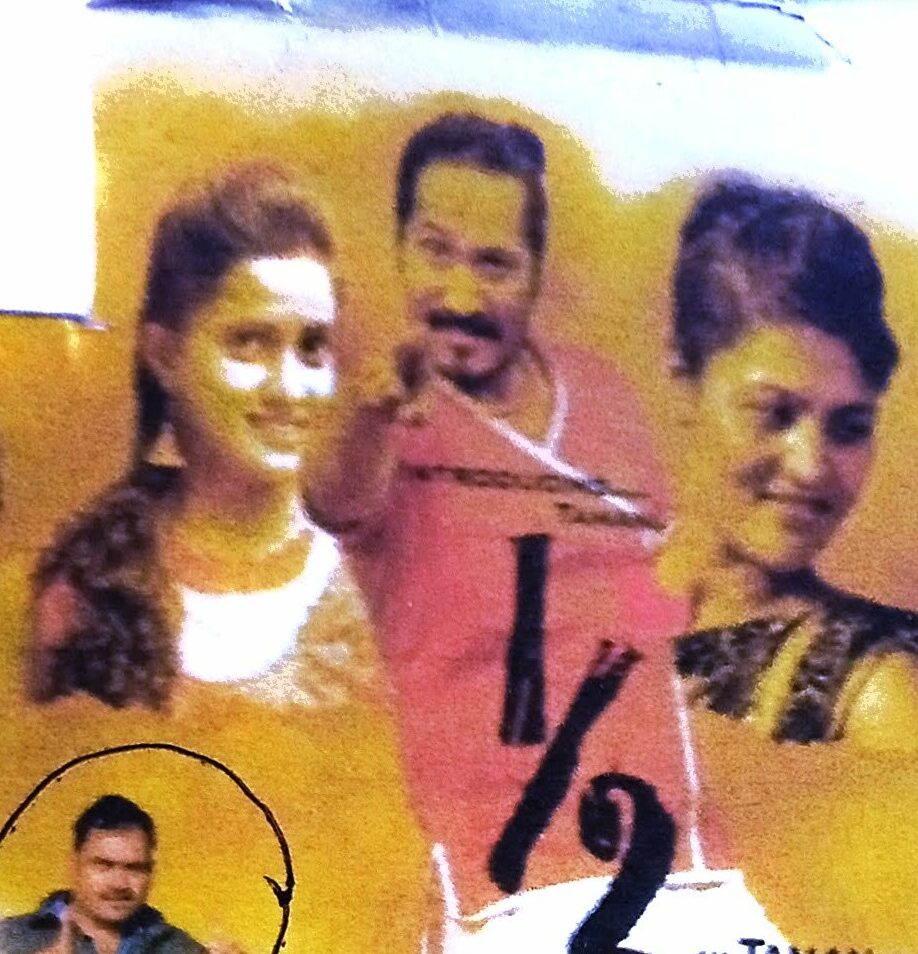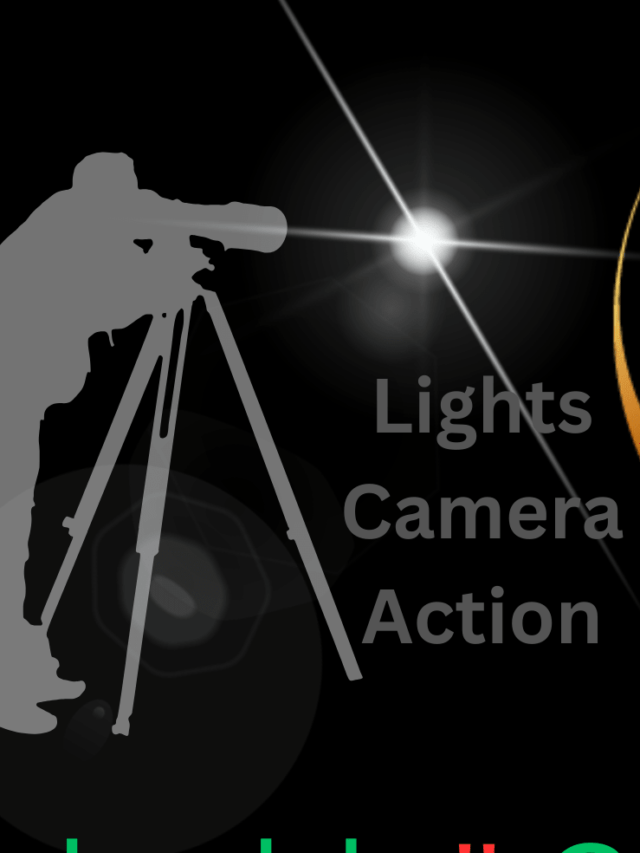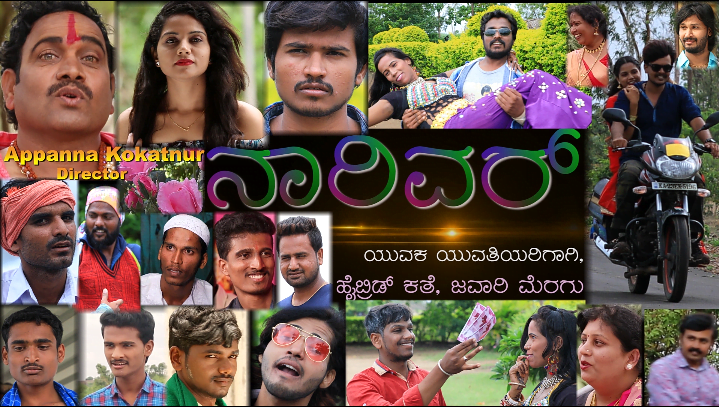This Article is very important to those who are interested in ACTING / VOICE ACTING / Beginner ACTOR and also useful for DIRECTORS and ONLINE ACTING CLASSES / COURSES Students / MOVIE ACTING / ACTING FILMS / ACTING VIDEOS.
pus8819174725983377"cript async src="https://pagead2.googlesyndication.com/pagead/js/adsbygoogle.js?client=ca-b-
pus8819174725983377"cript async src="https://pagead2.googlesyndication.com/pagead/js/adsbygoogle.js?client=ca-b-
pus8819174725983377"cript async src="https://pagead2.googlesyndication.com/pagead/js/adsbygoogle.js?client=ca-b-
pus8819174725983377"cript async src="https://pagead2.googlesyndication.com/pagead/js/adsbygoogle.js?client=ca-b-
pus8819174725983377"cript async src="https://pagead2.googlesyndication.com/pagead/js/adsbygoogle.js?client=ca-b-
pus8819174725983377"cript async src="https://pagead2.googlesyndication.com/pagead/js/adsbygoogle.js?client=ca-b-
pus8819174725983377"cript async src="https://pagead2.googlesyndication.com/pagead/js/adsbygoogle.js?client=ca-b-
pus8819174725983377"cript async src="https://pagead2.googlesyndication.com/pagead/js/adsbygoogle.js?client=ca-b-
pus8819174725983377"cript async src="https://pagead2.googlesyndication.com/pagead/js/adsbygoogle.js?client=ca-b-
pus8819174725983377"cript async src="https://pagead2.googlesyndication.com/pagead/js/adsbygoogle.js?client=ca-b-
pus8819174725983377"cript async src="https://pagead2.googlesyndication.com/pagead/js/adsbygoogle.js?client=ca-b-
pus8819174725983377"cript async src="https://pagead2.googlesyndication.com/pagead/js/adsbygoogle.js?client=ca-b-
pus8819174725983377"cript async src="https://pagead2.googlesyndication.com/pagead/js/adsbygoogle.js?client=ca-b-
pus8819174725983377"cript async src="https://pagead2.googlesyndication.com/pagead/js/adsbygoogle.js?client=ca-b-
pus8819174725983377"cript async src="https://pagead2.googlesyndication.com/pagead/js/adsbygoogle.js?client=ca-b-
pus8819174725983377"cript async src="https://pagead2.googlesyndication.com/pagead/js/adsbygoogle.js?client=ca-b-
In The Article You May Study And Know About 12 Top Contents, They Are As : Table of Contents
pus8819174725983377"cript async src="https://pagead2.googlesyndication.com/pagead/js/adsbygoogle.js?client=ca-b-
pus8819174725983377"cript async src="https://pagead2.googlesyndication.com/pagead/js/adsbygoogle.js?client=ca-b-
pus8819174725983377"cript async src="https://pagead2.googlesyndication.com/pagead/js/adsbygoogle.js?client=ca-b-
pus8819174725983377"cript async src="https://pagead2.googlesyndication.com/pagead/js/adsbygoogle.js?client=ca-b-
pus8819174725983377"cript async src="https://pagead2.googlesyndication.com/pagead/js/adsbygoogle.js?client=ca-b-
pus8819174725983377"cript async src="https://pagead2.googlesyndication.com/pagead/js/adsbygoogle.js?client=ca-b-
pus8819174725983377"cript async src="https://pagead2.googlesyndication.com/pagead/js/adsbygoogle.js?client=ca-b-
pus8819174725983377"cript async src="https://pagead2.googlesyndication.com/pagead/js/adsbygoogle.js?client=ca-b-
pus8819174725983377"cript async src="https://pagead2.googlesyndication.com/pagead/js/adsbygoogle.js?client=ca-b-
pus8819174725983377"cript async src="https://pagead2.googlesyndication.com/pagead/js/adsbygoogle.js?client=ca-b-
pus8819174725983377"cript async src="https://pagead2.googlesyndication.com/pagead/js/adsbygoogle.js?client=ca-b-
Toggle 1 ) ACTING TYPES / ACTING METHODS
pus8819174725983377"cript async src="https://pagead2.googlesyndication.com/pagead/js/adsbygoogle.js?client=ca-b-
pus8819174725983377"cript async src="https://pagead2.googlesyndication.com/pagead/js/adsbygoogle.js?client=ca-b-
pus8819174725983377"cript async src="https://pagead2.googlesyndication.com/pagead/js/adsbygoogle.js?client=ca-b-
pus8819174725983377"cript async src="https://pagead2.googlesyndication.com/pagead/js/adsbygoogle.js?client=ca-b-
pus8819174725983377"cript async src="https://pagead2.googlesyndication.com/pagead/js/adsbygoogle.js?client=ca-b-
pus8819174725983377"cript async src="https://pagead2.googlesyndication.com/pagead/js/adsbygoogle.js?client=ca-b-
pus8819174725983377"cript async src="https://pagead2.googlesyndication.com/pagead/js/adsbygoogle.js?client=ca-b-
pus8819174725983377"cript async src="https://pagead2.googlesyndication.com/pagead/js/adsbygoogle.js?client=ca-b-
pus8819174725983377"cript async src="https://pagead2.googlesyndication.com/pagead/js/adsbygoogle.js?client=ca-b-
pus8819174725983377"cript async src="https://pagead2.googlesyndication.com/pagead/js/adsbygoogle.js?client=ca-b-
pus8819174725983377"cript async src="https://pagead2.googlesyndication.com/pagead/js/adsbygoogle.js?client=ca-b-
2 ) BEST VOICE ACTING / VOCAL ACTING.
pus8819174725983377"cript async src="https://pagead2.googlesyndication.com/pagead/js/adsbygoogle.js?client=ca-b-
pus8819174725983377"cript async src="https://pagead2.googlesyndication.com/pagead/js/adsbygoogle.js?client=ca-b-
pus8819174725983377"cript async src="https://pagead2.googlesyndication.com/pagead/js/adsbygoogle.js?client=ca-b-
pus8819174725983377"cript async src="https://pagead2.googlesyndication.com/pagead/js/adsbygoogle.js?client=ca-b-
pus8819174725983377"cript async src="https://pagead2.googlesyndication.com/pagead/js/adsbygoogle.js?client=ca-b-
pus8819174725983377"cript async src="https://pagead2.googlesyndication.com/pagead/js/adsbygoogle.js?client=ca-b-
pus8819174725983377"cript async src="https://pagead2.googlesyndication.com/pagead/js/adsbygoogle.js?client=ca-b-
pus8819174725983377"cript async src="https://pagead2.googlesyndication.com/pagead/js/adsbygoogle.js?client=ca-b-
pus8819174725983377"cript async src="https://pagead2.googlesyndication.com/pagead/js/adsbygoogle.js?client=ca-b-
pus8819174725983377"cript async src="https://pagead2.googlesyndication.com/pagead/js/adsbygoogle.js?client=ca-b-
pus8819174725983377"cript async src="https://pagead2.googlesyndication.com/pagead/js/adsbygoogle.js?client=ca-b-
3 ) ACTING AND FILM / ACTING MOVIES.
pus8819174725983377"cript async src="https://pagead2.googlesyndication.com/pagead/js/adsbygoogle.js?client=ca-b-
pus8819174725983377"cript async src="https://pagead2.googlesyndication.com/pagead/js/adsbygoogle.js?client=ca-b-
pus8819174725983377"cript async src="https://pagead2.googlesyndication.com/pagead/js/adsbygoogle.js?client=ca-b-
pus8819174725983377"cript async src="https://pagead2.googlesyndication.com/pagead/js/adsbygoogle.js?client=ca-b-
pus8819174725983377"cript async src="https://pagead2.googlesyndication.com/pagead/js/adsbygoogle.js?client=ca-b-
pus8819174725983377"cript async src="https://pagead2.googlesyndication.com/pagead/js/adsbygoogle.js?client=ca-b-
pus8819174725983377"cript async src="https://pagead2.googlesyndication.com/pagead/js/adsbygoogle.js?client=ca-b-
pus8819174725983377"cript async src="https://pagead2.googlesyndication.com/pagead/js/adsbygoogle.js?client=ca-b-
pus8819174725983377"cript async src="https://pagead2.googlesyndication.com/pagead/js/adsbygoogle.js?client=ca-b-
pus8819174725983377"cript async src="https://pagead2.googlesyndication.com/pagead/js/adsbygoogle.js?client=ca-b-
pus8819174725983377"cript async src="https://pagead2.googlesyndication.com/pagead/js/adsbygoogle.js?client=ca-b-
4 ) Nine ( 9 ) IMPORTANT EXPRESSIONS IN ACTING / 9 ( Nine) RASAS ( Bhava ) IN ACTING./ INDIAN NAVARASAS IN ACTING.
pus8819174725983377"cript async src="https://pagead2.googlesyndication.com/pagead/js/adsbygoogle.js?client=ca-b-
pus8819174725983377"cript async src="https://pagead2.googlesyndication.com/pagead/js/adsbygoogle.js?client=ca-b-
pus8819174725983377"cript async src="https://pagead2.googlesyndication.com/pagead/js/adsbygoogle.js?client=ca-b-
pus8819174725983377"cript async src="https://pagead2.googlesyndication.com/pagead/js/adsbygoogle.js?client=ca-b-
pus8819174725983377"cript async src="https://pagead2.googlesyndication.com/pagead/js/adsbygoogle.js?client=ca-b-
pus8819174725983377"cript async src="https://pagead2.googlesyndication.com/pagead/js/adsbygoogle.js?client=ca-b-
pus8819174725983377"cript async src="https://pagead2.googlesyndication.com/pagead/js/adsbygoogle.js?client=ca-b-
pus8819174725983377"cript async src="https://pagead2.googlesyndication.com/pagead/js/adsbygoogle.js?client=ca-b-
pus8819174725983377"cript async src="https://pagead2.googlesyndication.com/pagead/js/adsbygoogle.js?client=ca-b-
pus8819174725983377"cript async src="https://pagead2.googlesyndication.com/pagead/js/adsbygoogle.js?client=ca-b-
pus8819174725983377"cript async src="https://pagead2.googlesyndication.com/pagead/js/adsbygoogle.js?client=ca-b-
5 ) VOICE DELIVERY PITCHES IN DIALOGUES.
pus8819174725983377"cript async src="https://pagead2.googlesyndication.com/pagead/js/adsbygoogle.js?client=ca-b-
pus8819174725983377"cript async src="https://pagead2.googlesyndication.com/pagead/js/adsbygoogle.js?client=ca-b-
pus8819174725983377"cript async src="https://pagead2.googlesyndication.com/pagead/js/adsbygoogle.js?client=ca-b-
pus8819174725983377"cript async src="https://pagead2.googlesyndication.com/pagead/js/adsbygoogle.js?client=ca-b-
pus8819174725983377"cript async src="https://pagead2.googlesyndication.com/pagead/js/adsbygoogle.js?client=ca-b-
pus8819174725983377"cript async src="https://pagead2.googlesyndication.com/pagead/js/adsbygoogle.js?client=ca-b-
pus8819174725983377"cript async src="https://pagead2.googlesyndication.com/pagead/js/adsbygoogle.js?client=ca-b-
pus8819174725983377"cript async src="https://pagead2.googlesyndication.com/pagead/js/adsbygoogle.js?client=ca-b-
pus8819174725983377"cript async src="https://pagead2.googlesyndication.com/pagead/js/adsbygoogle.js?client=ca-b-
pus8819174725983377"cript async src="https://pagead2.googlesyndication.com/pagead/js/adsbygoogle.js?client=ca-b-
pus8819174725983377"cript async src="https://pagead2.googlesyndication.com/pagead/js/adsbygoogle.js?client=ca-b-
6 ) DRAMA ACTING
pus8819174725983377"cript async src="https://pagead2.googlesyndication.com/pagead/js/adsbygoogle.js?client=ca-b-
pus8819174725983377"cript async src="https://pagead2.googlesyndication.com/pagead/js/adsbygoogle.js?client=ca-b-
pus8819174725983377"cript async src="https://pagead2.googlesyndication.com/pagead/js/adsbygoogle.js?client=ca-b-
pus8819174725983377"cript async src="https://pagead2.googlesyndication.com/pagead/js/adsbygoogle.js?client=ca-b-
pus8819174725983377"cript async src="https://pagead2.googlesyndication.com/pagead/js/adsbygoogle.js?client=ca-b-
pus8819174725983377"cript async src="https://pagead2.googlesyndication.com/pagead/js/adsbygoogle.js?client=ca-b-
pus8819174725983377"cript async src="https://pagead2.googlesyndication.com/pagead/js/adsbygoogle.js?client=ca-b-
pus8819174725983377"cript async src="https://pagead2.googlesyndication.com/pagead/js/adsbygoogle.js?client=ca-b-
pus8819174725983377"cript async src="https://pagead2.googlesyndication.com/pagead/js/adsbygoogle.js?client=ca-b-
pus8819174725983377"cript async src="https://pagead2.googlesyndication.com/pagead/js/adsbygoogle.js?client=ca-b-
pus8819174725983377"cript async src="https://pagead2.googlesyndication.com/pagead/js/adsbygoogle.js?client=ca-b-
7 ) MELODRAMA ACTING.
pus8819174725983377"cript async src="https://pagead2.googlesyndication.com/pagead/js/adsbygoogle.js?client=ca-b-
pus8819174725983377"cript async src="https://pagead2.googlesyndication.com/pagead/js/adsbygoogle.js?client=ca-b-
pus8819174725983377"cript async src="https://pagead2.googlesyndication.com/pagead/js/adsbygoogle.js?client=ca-b-
pus8819174725983377"cript async src="https://pagead2.googlesyndication.com/pagead/js/adsbygoogle.js?client=ca-b-
pus8819174725983377"cript async src="https://pagead2.googlesyndication.com/pagead/js/adsbygoogle.js?client=ca-b-
pus8819174725983377"cript async src="https://pagead2.googlesyndication.com/pagead/js/adsbygoogle.js?client=ca-b-
pus8819174725983377"cript async src="https://pagead2.googlesyndication.com/pagead/js/adsbygoogle.js?client=ca-b-
pus8819174725983377"cript async src="https://pagead2.googlesyndication.com/pagead/js/adsbygoogle.js?client=ca-b-
pus8819174725983377"cript async src="https://pagead2.googlesyndication.com/pagead/js/adsbygoogle.js?client=ca-b-
pus8819174725983377"cript async src="https://pagead2.googlesyndication.com/pagead/js/adsbygoogle.js?client=ca-b-
pus8819174725983377"cript async src="https://pagead2.googlesyndication.com/pagead/js/adsbygoogle.js?client=ca-b-
8 ) MONO ACTING
pus8819174725983377"cript async src="https://pagead2.googlesyndication.com/pagead/js/adsbygoogle.js?client=ca-b-
pus8819174725983377"cript async src="https://pagead2.googlesyndication.com/pagead/js/adsbygoogle.js?client=ca-b-
pus8819174725983377"cript async src="https://pagead2.googlesyndication.com/pagead/js/adsbygoogle.js?client=ca-b-
pus8819174725983377"cript async src="https://pagead2.googlesyndication.com/pagead/js/adsbygoogle.js?client=ca-b-
pus8819174725983377"cript async src="https://pagead2.googlesyndication.com/pagead/js/adsbygoogle.js?client=ca-b-
pus8819174725983377"cript async src="https://pagead2.googlesyndication.com/pagead/js/adsbygoogle.js?client=ca-b-
pus8819174725983377"cript async src="https://pagead2.googlesyndication.com/pagead/js/adsbygoogle.js?client=ca-b-
pus8819174725983377"cript async src="https://pagead2.googlesyndication.com/pagead/js/adsbygoogle.js?client=ca-b-
pus8819174725983377"cript async src="https://pagead2.googlesyndication.com/pagead/js/adsbygoogle.js?client=ca-b-
pus8819174725983377"cript async src="https://pagead2.googlesyndication.com/pagead/js/adsbygoogle.js?client=ca-b-
pus8819174725983377"cript async src="https://pagead2.googlesyndication.com/pagead/js/adsbygoogle.js?client=ca-b-
9 ) MIME ACTING.
pus8819174725983377"cript async src="https://pagead2.googlesyndication.com/pagead/js/adsbygoogle.js?client=ca-b-
pus8819174725983377"cript async src="https://pagead2.googlesyndication.com/pagead/js/adsbygoogle.js?client=ca-b-
pus8819174725983377"cript async src="https://pagead2.googlesyndication.com/pagead/js/adsbygoogle.js?client=ca-b-
pus8819174725983377"cript async src="https://pagead2.googlesyndication.com/pagead/js/adsbygoogle.js?client=ca-b-
pus8819174725983377"cript async src="https://pagead2.googlesyndication.com/pagead/js/adsbygoogle.js?client=ca-b-
pus8819174725983377"cript async src="https://pagead2.googlesyndication.com/pagead/js/adsbygoogle.js?client=ca-b-
pus8819174725983377"cript async src="https://pagead2.googlesyndication.com/pagead/js/adsbygoogle.js?client=ca-b-
pus8819174725983377"cript async src="https://pagead2.googlesyndication.com/pagead/js/adsbygoogle.js?client=ca-b-
pus8819174725983377"cript async src="https://pagead2.googlesyndication.com/pagead/js/adsbygoogle.js?client=ca-b-
pus8819174725983377"cript async src="https://pagead2.googlesyndication.com/pagead/js/adsbygoogle.js?client=ca-b-
pus8819174725983377"cript async src="https://pagead2.googlesyndication.com/pagead/js/adsbygoogle.js?client=ca-b-
10 ) ACTORS MUST KNOW THE CAMERA SHOTS AND CAMERA ANGLES.
pus8819174725983377"cript async src="https://pagead2.googlesyndication.com/pagead/js/adsbygoogle.js?client=ca-b-
pus8819174725983377"cript async src="https://pagead2.googlesyndication.com/pagead/js/adsbygoogle.js?client=ca-b-
pus8819174725983377"cript async src="https://pagead2.googlesyndication.com/pagead/js/adsbygoogle.js?client=ca-b-
pus8819174725983377"cript async src="https://pagead2.googlesyndication.com/pagead/js/adsbygoogle.js?client=ca-b-
pus8819174725983377"cript async src="https://pagead2.googlesyndication.com/pagead/js/adsbygoogle.js?client=ca-b-
pus8819174725983377"cript async src="https://pagead2.googlesyndication.com/pagead/js/adsbygoogle.js?client=ca-b-
pus8819174725983377"cript async src="https://pagead2.googlesyndication.com/pagead/js/adsbygoogle.js?client=ca-b-
pus8819174725983377"cript async src="https://pagead2.googlesyndication.com/pagead/js/adsbygoogle.js?client=ca-b-
pus8819174725983377"cript async src="https://pagead2.googlesyndication.com/pagead/js/adsbygoogle.js?client=ca-b-
pus8819174725983377"cript async src="https://pagead2.googlesyndication.com/pagead/js/adsbygoogle.js?client=ca-b-
pus8819174725983377"cript async src="https://pagead2.googlesyndication.com/pagead/js/adsbygoogle.js?client=ca-b-
11 ) DIFFERENCE BETWEEN FILM / MOVIE / CINEMA ACTING / TELEVISION SERIAL ACTING / SCREEN ACTING, AND DRAMA ACTING.
pus8819174725983377"cript async src="https://pagead2.googlesyndication.com/pagead/js/adsbygoogle.js?client=ca-b-
pus8819174725983377"cript async src="https://pagead2.googlesyndication.com/pagead/js/adsbygoogle.js?client=ca-b-
pus8819174725983377"cript async src="https://pagead2.googlesyndication.com/pagead/js/adsbygoogle.js?client=ca-b-
pus8819174725983377"cript async src="https://pagead2.googlesyndication.com/pagead/js/adsbygoogle.js?client=ca-b-
pus8819174725983377"cript async src="https://pagead2.googlesyndication.com/pagead/js/adsbygoogle.js?client=ca-b-
pus8819174725983377"cript async src="https://pagead2.googlesyndication.com/pagead/js/adsbygoogle.js?client=ca-b-
pus8819174725983377"cript async src="https://pagead2.googlesyndication.com/pagead/js/adsbygoogle.js?client=ca-b-
pus8819174725983377"cript async src="https://pagead2.googlesyndication.com/pagead/js/adsbygoogle.js?client=ca-b-
pus8819174725983377"cript async src="https://pagead2.googlesyndication.com/pagead/js/adsbygoogle.js?client=ca-b-
pus8819174725983377"cript async src="https://pagead2.googlesyndication.com/pagead/js/adsbygoogle.js?client=ca-b-
pus8819174725983377"cript async src="https://pagead2.googlesyndication.com/pagead/js/adsbygoogle.js?client=ca-b-
12 ) ACTORS PREPARATIONS BEFORE ACTING.
pus8819174725983377"cript async src="https://pagead2.googlesyndication.com/pagead/js/adsbygoogle.js?client=ca-b-
pus8819174725983377"cript async src="https://pagead2.googlesyndication.com/pagead/js/adsbygoogle.js?client=ca-b-
pus8819174725983377"cript async src="https://pagead2.googlesyndication.com/pagead/js/adsbygoogle.js?client=ca-b-
pus8819174725983377"cript async src="https://pagead2.googlesyndication.com/pagead/js/adsbygoogle.js?client=ca-b-
pus8819174725983377"cript async src="https://pagead2.googlesyndication.com/pagead/js/adsbygoogle.js?client=ca-b-
pus8819174725983377"cript async src="https://pagead2.googlesyndication.com/pagead/js/adsbygoogle.js?client=ca-b-
pus8819174725983377"cript async src="https://pagead2.googlesyndication.com/pagead/js/adsbygoogle.js?client=ca-b-
pus8819174725983377"cript async src="https://pagead2.googlesyndication.com/pagead/js/adsbygoogle.js?client=ca-b-
pus8819174725983377"cript async src="https://pagead2.googlesyndication.com/pagead/js/adsbygoogle.js?client=ca-b-
pus8819174725983377"cript async src="https://pagead2.googlesyndication.com/pagead/js/adsbygoogle.js?client=ca-b-
pus8819174725983377"cript async src="https://pagead2.googlesyndication.com/pagead/js/adsbygoogle.js?client=ca-b-
Before Briefing these above contents. First of all. we know about ” What is Acting ? “ . The Answer is here.
pus8819174725983377"cript async src="https://pagead2.googlesyndication.com/pagead/js/adsbygoogle.js?client=ca-b-
pus8819174725983377"cript async src="https://pagead2.googlesyndication.com/pagead/js/adsbygoogle.js?client=ca-b-
pus8819174725983377"cript async src="https://pagead2.googlesyndication.com/pagead/js/adsbygoogle.js?client=ca-b-
pus8819174725983377"cript async src="https://pagead2.googlesyndication.com/pagead/js/adsbygoogle.js?client=ca-b-
pus8819174725983377"cript async src="https://pagead2.googlesyndication.com/pagead/js/adsbygoogle.js?client=ca-b-
pus8819174725983377"cript async src="https://pagead2.googlesyndication.com/pagead/js/adsbygoogle.js?client=ca-b-
pus8819174725983377"cript async src="https://pagead2.googlesyndication.com/pagead/js/adsbygoogle.js?client=ca-b-
pus8819174725983377"cript async src="https://pagead2.googlesyndication.com/pagead/js/adsbygoogle.js?client=ca-b-
pus8819174725983377"cript async src="https://pagead2.googlesyndication.com/pagead/js/adsbygoogle.js?client=ca-b-
pus8819174725983377"cript async src="https://pagead2.googlesyndication.com/pagead/js/adsbygoogle.js?client=ca-b-
pus8819174725983377"cript async src="https://pagead2.googlesyndication.com/pagead/js/adsbygoogle.js?client=ca-b-
Acting is a form of Art that has been around for Centuries. It is a form of Storytelling that can entertain, provoke thought and inspire Audiences to see the world from different perspectives. Now a days acting can be a highly demanding and rewarding profession requiring a combination of talent, skill, and dedication. in other words.
pus8819174725983377"cript async src="https://pagead2.googlesyndication.com/pagead/js/adsbygoogle.js?client=ca-b-
pus8819174725983377"cript async src="https://pagead2.googlesyndication.com/pagead/js/adsbygoogle.js?client=ca-b-
pus8819174725983377"cript async src="https://pagead2.googlesyndication.com/pagead/js/adsbygoogle.js?client=ca-b-
pus8819174725983377"cript async src="https://pagead2.googlesyndication.com/pagead/js/adsbygoogle.js?client=ca-b-
pus8819174725983377"cript async src="https://pagead2.googlesyndication.com/pagead/js/adsbygoogle.js?client=ca-b-
pus8819174725983377"cript async src="https://pagead2.googlesyndication.com/pagead/js/adsbygoogle.js?client=ca-b-
pus8819174725983377"cript async src="https://pagead2.googlesyndication.com/pagead/js/adsbygoogle.js?client=ca-b-
pus8819174725983377"cript async src="https://pagead2.googlesyndication.com/pagead/js/adsbygoogle.js?client=ca-b-
pus8819174725983377"cript async src="https://pagead2.googlesyndication.com/pagead/js/adsbygoogle.js?client=ca-b-
pus8819174725983377"cript async src="https://pagead2.googlesyndication.com/pagead/js/adsbygoogle.js?client=ca-b-
pus8819174725983377"cript async src="https://pagead2.googlesyndication.com/pagead/js/adsbygoogle.js?client=ca-b-
Acting is the practice of representing a character on stage, television, in film/movie/cinema or any other platforms, where audience watch the act. and it involves the portray of a characters emotions, actions through speech, body language, facial expressions, movements. Actors study the scripts and know about the time period and content of the story and characters in depth of messages. Actor practice it again and again with voice, body language, emotions, experiences, skills, creative technics. Actors improves their performances to give life to the character. lastly best given performances are appreciated by the audiences.
pus8819174725983377"cript async src="https://pagead2.googlesyndication.com/pagead/js/adsbygoogle.js?client=ca-b-
pus8819174725983377"cript async src="https://pagead2.googlesyndication.com/pagead/js/adsbygoogle.js?client=ca-b-
pus8819174725983377"cript async src="https://pagead2.googlesyndication.com/pagead/js/adsbygoogle.js?client=ca-b-
pus8819174725983377"cript async src="https://pagead2.googlesyndication.com/pagead/js/adsbygoogle.js?client=ca-b-
pus8819174725983377"cript async src="https://pagead2.googlesyndication.com/pagead/js/adsbygoogle.js?client=ca-b-
pus8819174725983377"cript async src="https://pagead2.googlesyndication.com/pagead/js/adsbygoogle.js?client=ca-b-
pus8819174725983377"cript async src="https://pagead2.googlesyndication.com/pagead/js/adsbygoogle.js?client=ca-b-
pus8819174725983377"cript async src="https://pagead2.googlesyndication.com/pagead/js/adsbygoogle.js?client=ca-b-
pus8819174725983377"cript async src="https://pagead2.googlesyndication.com/pagead/js/adsbygoogle.js?client=ca-b-
pus8819174725983377"cript async src="https://pagead2.googlesyndication.com/pagead/js/adsbygoogle.js?client=ca-b-
pus8819174725983377"cript async src="https://pagead2.googlesyndication.com/pagead/js/adsbygoogle.js?client=ca-b-
1) ACTING TYPES / METHODS : In the Acting Field. There are Many Types and Methods in that 6 are mains. Actors / Actresses utilize to bring characters to Life on Screen or Stage. These include Technic, Styles, and Imagination. Here are Some Important Acting Types and Methods.
pus8819174725983377"cript async src="https://pagead2.googlesyndication.com/pagead/js/adsbygoogle.js?client=ca-b-
pus8819174725983377"cript async src="https://pagead2.googlesyndication.com/pagead/js/adsbygoogle.js?client=ca-b-
pus8819174725983377"cript async src="https://pagead2.googlesyndication.com/pagead/js/adsbygoogle.js?client=ca-b-
pus8819174725983377"cript async src="https://pagead2.googlesyndication.com/pagead/js/adsbygoogle.js?client=ca-b-
pus8819174725983377"cript async src="https://pagead2.googlesyndication.com/pagead/js/adsbygoogle.js?client=ca-b-
pus8819174725983377"cript async src="https://pagead2.googlesyndication.com/pagead/js/adsbygoogle.js?client=ca-b-
pus8819174725983377"cript async src="https://pagead2.googlesyndication.com/pagead/js/adsbygoogle.js?client=ca-b-
pus8819174725983377"cript async src="https://pagead2.googlesyndication.com/pagead/js/adsbygoogle.js?client=ca-b-
pus8819174725983377"cript async src="https://pagead2.googlesyndication.com/pagead/js/adsbygoogle.js?client=ca-b-
pus8819174725983377"cript async src="https://pagead2.googlesyndication.com/pagead/js/adsbygoogle.js?client=ca-b-
pus8819174725983377"cript async src="https://pagead2.googlesyndication.com/pagead/js/adsbygoogle.js?client=ca-b-
( a ) PHYSICAL ACTING : Means utilizing the entire Body, Voice, Skills, and Techniques to express emotions and convey a character’s story. for example include Acting, mime, dance, and mask work. this kind allows actors to use the full range of body to convey emotions and authentically portray character the audience. such type of acting employs body language, movements, postures, and facial expressions to shape characters to convey their emotions effectively. Physical acting’s other form of verbal expression, as tone of voicesa to bring characters to life and deliver a compelling performance.
pus8819174725983377"cript async src="https://pagead2.googlesyndication.com/pagead/js/adsbygoogle.js?client=ca-b-
pus8819174725983377"cript async src="https://pagead2.googlesyndication.com/pagead/js/adsbygoogle.js?client=ca-b-
pus8819174725983377"cript async src="https://pagead2.googlesyndication.com/pagead/js/adsbygoogle.js?client=ca-b-
pus8819174725983377"cript async src="https://pagead2.googlesyndication.com/pagead/js/adsbygoogle.js?client=ca-b-
pus8819174725983377"cript async src="https://pagead2.googlesyndication.com/pagead/js/adsbygoogle.js?client=ca-b-
pus8819174725983377"cript async src="https://pagead2.googlesyndication.com/pagead/js/adsbygoogle.js?client=ca-b-
pus8819174725983377"cript async src="https://pagead2.googlesyndication.com/pagead/js/adsbygoogle.js?client=ca-b-
pus8819174725983377"cript async src="https://pagead2.googlesyndication.com/pagead/js/adsbygoogle.js?client=ca-b-
pus8819174725983377"cript async src="https://pagead2.googlesyndication.com/pagead/js/adsbygoogle.js?client=ca-b-
pus8819174725983377"cript async src="https://pagead2.googlesyndication.com/pagead/js/adsbygoogle.js?client=ca-b-
pus8819174725983377"cript async src="https://pagead2.googlesyndication.com/pagead/js/adsbygoogle.js?client=ca-b-
( b ) CLASSICAL ACTING: This type of Acting is mainly used in Art Films / Movies / Cinemas and Stage performances / Theatre performances of Classic works. such as SHAKESPEARE , GREEKANC PLAY WRIGHTS and they explore traditional performances they keep in mind, often that times environments, languages, verse, and Expressions with situations imaginations with voices, and songs. and they played the role with traditional performance style to bring characters to life on Screen or Stage .
pus8819174725983377"cript async src="https://pagead2.googlesyndication.com/pagead/js/adsbygoogle.js?client=ca-b-
pus8819174725983377"cript async src="https://pagead2.googlesyndication.com/pagead/js/adsbygoogle.js?client=ca-b-
pus8819174725983377"cript async src="https://pagead2.googlesyndication.com/pagead/js/adsbygoogle.js?client=ca-b-
pus8819174725983377"cript async src="https://pagead2.googlesyndication.com/pagead/js/adsbygoogle.js?client=ca-b-
pus8819174725983377"cript async src="https://pagead2.googlesyndication.com/pagead/js/adsbygoogle.js?client=ca-b-
pus8819174725983377"cript async src="https://pagead2.googlesyndication.com/pagead/js/adsbygoogle.js?client=ca-b-
pus8819174725983377"cript async src="https://pagead2.googlesyndication.com/pagead/js/adsbygoogle.js?client=ca-b-
pus8819174725983377"cript async src="https://pagead2.googlesyndication.com/pagead/js/adsbygoogle.js?client=ca-b-
pus8819174725983377"cript async src="https://pagead2.googlesyndication.com/pagead/js/adsbygoogle.js?client=ca-b-
pus8819174725983377"cript async src="https://pagead2.googlesyndication.com/pagead/js/adsbygoogle.js?client=ca-b-
pus8819174725983377"cript async src="https://pagead2.googlesyndication.com/pagead/js/adsbygoogle.js?client=ca-b-
( c ) STAGE ACTING : Actors / Actress must project their Body (Language) Activities as Dialogues: delivery in Loudly Voiced, narrate pitches clearly, Hand and Leg movements because they perform in front of a live Audience His performance and voice to be reached to long last seated audience. It is a highly narrated performance.
pus8819174725983377"cript async src="https://pagead2.googlesyndication.com/pagead/js/adsbygoogle.js?client=ca-b-
pus8819174725983377"cript async src="https://pagead2.googlesyndication.com/pagead/js/adsbygoogle.js?client=ca-b-
pus8819174725983377"cript async src="https://pagead2.googlesyndication.com/pagead/js/adsbygoogle.js?client=ca-b-
pus8819174725983377"cript async src="https://pagead2.googlesyndication.com/pagead/js/adsbygoogle.js?client=ca-b-
pus8819174725983377"cript async src="https://pagead2.googlesyndication.com/pagead/js/adsbygoogle.js?client=ca-b-
pus8819174725983377"cript async src="https://pagead2.googlesyndication.com/pagead/js/adsbygoogle.js?client=ca-b-
pus8819174725983377"cript async src="https://pagead2.googlesyndication.com/pagead/js/adsbygoogle.js?client=ca-b-
pus8819174725983377"cript async src="https://pagead2.googlesyndication.com/pagead/js/adsbygoogle.js?client=ca-b-
pus8819174725983377"cript async src="https://pagead2.googlesyndication.com/pagead/js/adsbygoogle.js?client=ca-b-
pus8819174725983377"cript async src="https://pagead2.googlesyndication.com/pagead/js/adsbygoogle.js?client=ca-b-
pus8819174725983377"cript async src="https://pagead2.googlesyndication.com/pagead/js/adsbygoogle.js?client=ca-b-
( d ) SCREEN ACTING: Means Acting in Films / Movies / Cinemas, Television Shows, Serials, Web Series, Advertisement films and ,other visual media. Here actor / Actress Acts According to Camera Shots. say as.
pus8819174725983377"cript async src="https://pagead2.googlesyndication.com/pagead/js/adsbygoogle.js?client=ca-b-
pus8819174725983377"cript async src="https://pagead2.googlesyndication.com/pagead/js/adsbygoogle.js?client=ca-b-
pus8819174725983377"cript async src="https://pagead2.googlesyndication.com/pagead/js/adsbygoogle.js?client=ca-b-
pus8819174725983377"cript async src="https://pagead2.googlesyndication.com/pagead/js/adsbygoogle.js?client=ca-b-
pus8819174725983377"cript async src="https://pagead2.googlesyndication.com/pagead/js/adsbygoogle.js?client=ca-b-
pus8819174725983377"cript async src="https://pagead2.googlesyndication.com/pagead/js/adsbygoogle.js?client=ca-b-
pus8819174725983377"cript async src="https://pagead2.googlesyndication.com/pagead/js/adsbygoogle.js?client=ca-b-
pus8819174725983377"cript async src="https://pagead2.googlesyndication.com/pagead/js/adsbygoogle.js?client=ca-b-
pus8819174725983377"cript async src="https://pagead2.googlesyndication.com/pagead/js/adsbygoogle.js?client=ca-b-
pus8819174725983377"cript async src="https://pagead2.googlesyndication.com/pagead/js/adsbygoogle.js?client=ca-b-
pus8819174725983377"cript async src="https://pagead2.googlesyndication.com/pagead/js/adsbygoogle.js?client=ca-b-
1 ) In a Close up Shot Camera covers only face in this Face Expressions are Main points with Dialogue Delivery. There is no Acting for Rest of the Body.
pus8819174725983377"cript async src="https://pagead2.googlesyndication.com/pagead/js/adsbygoogle.js?client=ca-b-
pus8819174725983377"cript async src="https://pagead2.googlesyndication.com/pagead/js/adsbygoogle.js?client=ca-b-
pus8819174725983377"cript async src="https://pagead2.googlesyndication.com/pagead/js/adsbygoogle.js?client=ca-b-
pus8819174725983377"cript async src="https://pagead2.googlesyndication.com/pagead/js/adsbygoogle.js?client=ca-b-
pus8819174725983377"cript async src="https://pagead2.googlesyndication.com/pagead/js/adsbygoogle.js?client=ca-b-
pus8819174725983377"cript async src="https://pagead2.googlesyndication.com/pagead/js/adsbygoogle.js?client=ca-b-
pus8819174725983377"cript async src="https://pagead2.googlesyndication.com/pagead/js/adsbygoogle.js?client=ca-b-
pus8819174725983377"cript async src="https://pagead2.googlesyndication.com/pagead/js/adsbygoogle.js?client=ca-b-
pus8819174725983377"cript async src="https://pagead2.googlesyndication.com/pagead/js/adsbygoogle.js?client=ca-b-
pus8819174725983377"cript async src="https://pagead2.googlesyndication.com/pagead/js/adsbygoogle.js?client=ca-b-
pus8819174725983377"cript async src="https://pagead2.googlesyndication.com/pagead/js/adsbygoogle.js?client=ca-b-
2 ) In Extreme Close up Shot Camera may be Cover only one Eye or Both Eyes, Nose or Lips or Ear, Here only that parts Acting there. here Accurate Expression Counts.
pus8819174725983377"cript async src="https://pagead2.googlesyndication.com/pagead/js/adsbygoogle.js?client=ca-b-
pus8819174725983377"cript async src="https://pagead2.googlesyndication.com/pagead/js/adsbygoogle.js?client=ca-b-
pus8819174725983377"cript async src="https://pagead2.googlesyndication.com/pagead/js/adsbygoogle.js?client=ca-b-
pus8819174725983377"cript async src="https://pagead2.googlesyndication.com/pagead/js/adsbygoogle.js?client=ca-b-
pus8819174725983377"cript async src="https://pagead2.googlesyndication.com/pagead/js/adsbygoogle.js?client=ca-b-
pus8819174725983377"cript async src="https://pagead2.googlesyndication.com/pagead/js/adsbygoogle.js?client=ca-b-
pus8819174725983377"cript async src="https://pagead2.googlesyndication.com/pagead/js/adsbygoogle.js?client=ca-b-
pus8819174725983377"cript async src="https://pagead2.googlesyndication.com/pagead/js/adsbygoogle.js?client=ca-b-
pus8819174725983377"cript async src="https://pagead2.googlesyndication.com/pagead/js/adsbygoogle.js?client=ca-b-
pus8819174725983377"cript async src="https://pagead2.googlesyndication.com/pagead/js/adsbygoogle.js?client=ca-b-
pus8819174725983377"cript async src="https://pagead2.googlesyndication.com/pagead/js/adsbygoogle.js?client=ca-b-
3 ) In Mid Shot ( From Head to Stomach level ) Here Acting takes place from Head to Stomach level here Hands also comes . we use Face and hands to act.
pus8819174725983377"cript async src="https://pagead2.googlesyndication.com/pagead/js/adsbygoogle.js?client=ca-b-
pus8819174725983377"cript async src="https://pagead2.googlesyndication.com/pagead/js/adsbygoogle.js?client=ca-b-
pus8819174725983377"cript async src="https://pagead2.googlesyndication.com/pagead/js/adsbygoogle.js?client=ca-b-
pus8819174725983377"cript async src="https://pagead2.googlesyndication.com/pagead/js/adsbygoogle.js?client=ca-b-
pus8819174725983377"cript async src="https://pagead2.googlesyndication.com/pagead/js/adsbygoogle.js?client=ca-b-
pus8819174725983377"cript async src="https://pagead2.googlesyndication.com/pagead/js/adsbygoogle.js?client=ca-b-
pus8819174725983377"cript async src="https://pagead2.googlesyndication.com/pagead/js/adsbygoogle.js?client=ca-b-
pus8819174725983377"cript async src="https://pagead2.googlesyndication.com/pagead/js/adsbygoogle.js?client=ca-b-
pus8819174725983377"cript async src="https://pagead2.googlesyndication.com/pagead/js/adsbygoogle.js?client=ca-b-
pus8819174725983377"cript async src="https://pagead2.googlesyndication.com/pagead/js/adsbygoogle.js?client=ca-b-
pus8819174725983377"cript async src="https://pagead2.googlesyndication.com/pagead/js/adsbygoogle.js?client=ca-b-
4 ) In Long Shot Whole body comes to Act say as face, both hands , both legs. if movements are there in Script then Whole body acts with walking or running etc.
pus8819174725983377"cript async src="https://pagead2.googlesyndication.com/pagead/js/adsbygoogle.js?client=ca-b-
pus8819174725983377"cript async src="https://pagead2.googlesyndication.com/pagead/js/adsbygoogle.js?client=ca-b-
pus8819174725983377"cript async src="https://pagead2.googlesyndication.com/pagead/js/adsbygoogle.js?client=ca-b-
pus8819174725983377"cript async src="https://pagead2.googlesyndication.com/pagead/js/adsbygoogle.js?client=ca-b-
pus8819174725983377"cript async src="https://pagead2.googlesyndication.com/pagead/js/adsbygoogle.js?client=ca-b-
pus8819174725983377"cript async src="https://pagead2.googlesyndication.com/pagead/js/adsbygoogle.js?client=ca-b-
pus8819174725983377"cript async src="https://pagead2.googlesyndication.com/pagead/js/adsbygoogle.js?client=ca-b-
pus8819174725983377"cript async src="https://pagead2.googlesyndication.com/pagead/js/adsbygoogle.js?client=ca-b-
pus8819174725983377"cript async src="https://pagead2.googlesyndication.com/pagead/js/adsbygoogle.js?client=ca-b-
pus8819174725983377"cript async src="https://pagead2.googlesyndication.com/pagead/js/adsbygoogle.js?client=ca-b-
pus8819174725983377"cript async src="https://pagead2.googlesyndication.com/pagead/js/adsbygoogle.js?client=ca-b-
In this Acting skills, camera techniques, camera movements, actors movements all together taken in one action. So here clear and quiet Facial Expressions, modulation of voices, Actions and styles, all are important ones, Because Camera comes too much closer to you so here a minute facial expression also reaches to audience so the audience is too much closer to watching the character. that’s why this Screen ( Films / Movies / Cinemas, Television ), visual Industry Becomes Demanded, Rewarded and Highly Growing one.
pus8819174725983377"cript async src="https://pagead2.googlesyndication.com/pagead/js/adsbygoogle.js?client=ca-b-
pus8819174725983377"cript async src="https://pagead2.googlesyndication.com/pagead/js/adsbygoogle.js?client=ca-b-
pus8819174725983377"cript async src="https://pagead2.googlesyndication.com/pagead/js/adsbygoogle.js?client=ca-b-
pus8819174725983377"cript async src="https://pagead2.googlesyndication.com/pagead/js/adsbygoogle.js?client=ca-b-
pus8819174725983377"cript async src="https://pagead2.googlesyndication.com/pagead/js/adsbygoogle.js?client=ca-b-
pus8819174725983377"cript async src="https://pagead2.googlesyndication.com/pagead/js/adsbygoogle.js?client=ca-b-
pus8819174725983377"cript async src="https://pagead2.googlesyndication.com/pagead/js/adsbygoogle.js?client=ca-b-
pus8819174725983377"cript async src="https://pagead2.googlesyndication.com/pagead/js/adsbygoogle.js?client=ca-b-
pus8819174725983377"cript async src="https://pagead2.googlesyndication.com/pagead/js/adsbygoogle.js?client=ca-b-
pus8819174725983377"cript async src="https://pagead2.googlesyndication.com/pagead/js/adsbygoogle.js?client=ca-b-
pus8819174725983377"cript async src="https://pagead2.googlesyndication.com/pagead/js/adsbygoogle.js?client=ca-b-
( e ) VOICE ACTING : This type of Acting is used in to portray characters in film Dubbing, Animated,/ Cartoon Films / Movies / Advertisement Films and Video Games, Radio Dramas, FM Radios, Audio Books, and Commercials. Here Actors / Actresses are mainly focus on vocal expressions / voice expressions, Characters acting and conveying emotions through their voice alone.
pus8819174725983377"cript async src="https://pagead2.googlesyndication.com/pagead/js/adsbygoogle.js?client=ca-b-
pus8819174725983377"cript async src="https://pagead2.googlesyndication.com/pagead/js/adsbygoogle.js?client=ca-b-
pus8819174725983377"cript async src="https://pagead2.googlesyndication.com/pagead/js/adsbygoogle.js?client=ca-b-
pus8819174725983377"cript async src="https://pagead2.googlesyndication.com/pagead/js/adsbygoogle.js?client=ca-b-
pus8819174725983377"cript async src="https://pagead2.googlesyndication.com/pagead/js/adsbygoogle.js?client=ca-b-
pus8819174725983377"cript async src="https://pagead2.googlesyndication.com/pagead/js/adsbygoogle.js?client=ca-b-
pus8819174725983377"cript async src="https://pagead2.googlesyndication.com/pagead/js/adsbygoogle.js?client=ca-b-
pus8819174725983377"cript async src="https://pagead2.googlesyndication.com/pagead/js/adsbygoogle.js?client=ca-b-
pus8819174725983377"cript async src="https://pagead2.googlesyndication.com/pagead/js/adsbygoogle.js?client=ca-b-
pus8819174725983377"cript async src="https://pagead2.googlesyndication.com/pagead/js/adsbygoogle.js?client=ca-b-
pus8819174725983377"cript async src="https://pagead2.googlesyndication.com/pagead/js/adsbygoogle.js?client=ca-b-
So, for This purpose Actors maintain vocal health, vocal warm-ups, Articulation, voice developments, narration, and Dialogues. In this way using their voices to bring characters to life.
pus8819174725983377"cript async src="https://pagead2.googlesyndication.com/pagead/js/adsbygoogle.js?client=ca-b-
pus8819174725983377"cript async src="https://pagead2.googlesyndication.com/pagead/js/adsbygoogle.js?client=ca-b-
pus8819174725983377"cript async src="https://pagead2.googlesyndication.com/pagead/js/adsbygoogle.js?client=ca-b-
pus8819174725983377"cript async src="https://pagead2.googlesyndication.com/pagead/js/adsbygoogle.js?client=ca-b-
pus8819174725983377"cript async src="https://pagead2.googlesyndication.com/pagead/js/adsbygoogle.js?client=ca-b-
pus8819174725983377"cript async src="https://pagead2.googlesyndication.com/pagead/js/adsbygoogle.js?client=ca-b-
pus8819174725983377"cript async src="https://pagead2.googlesyndication.com/pagead/js/adsbygoogle.js?client=ca-b-
pus8819174725983377"cript async src="https://pagead2.googlesyndication.com/pagead/js/adsbygoogle.js?client=ca-b-
pus8819174725983377"cript async src="https://pagead2.googlesyndication.com/pagead/js/adsbygoogle.js?client=ca-b-
pus8819174725983377"cript async src="https://pagead2.googlesyndication.com/pagead/js/adsbygoogle.js?client=ca-b-
pus8819174725983377"cript async src="https://pagead2.googlesyndication.com/pagead/js/adsbygoogle.js?client=ca-b-
Voiceovers for Educational and Training Materials and character voices for theme park Attractions
pus8819174725983377"cript async src="https://pagead2.googlesyndication.com/pagead/js/adsbygoogle.js?client=ca-b-
pus8819174725983377"cript async src="https://pagead2.googlesyndication.com/pagead/js/adsbygoogle.js?client=ca-b-
pus8819174725983377"cript async src="https://pagead2.googlesyndication.com/pagead/js/adsbygoogle.js?client=ca-b-
pus8819174725983377"cript async src="https://pagead2.googlesyndication.com/pagead/js/adsbygoogle.js?client=ca-b-
pus8819174725983377"cript async src="https://pagead2.googlesyndication.com/pagead/js/adsbygoogle.js?client=ca-b-
pus8819174725983377"cript async src="https://pagead2.googlesyndication.com/pagead/js/adsbygoogle.js?client=ca-b-
pus8819174725983377"cript async src="https://pagead2.googlesyndication.com/pagead/js/adsbygoogle.js?client=ca-b-
pus8819174725983377"cript async src="https://pagead2.googlesyndication.com/pagead/js/adsbygoogle.js?client=ca-b-
pus8819174725983377"cript async src="https://pagead2.googlesyndication.com/pagead/js/adsbygoogle.js?client=ca-b-
pus8819174725983377"cript async src="https://pagead2.googlesyndication.com/pagead/js/adsbygoogle.js?client=ca-b-
pus8819174725983377"cript async src="https://pagead2.googlesyndication.com/pagead/js/adsbygoogle.js?client=ca-b-
Voice Acting (Dubbing Actor / Actress ) means Dubbing of voices to films / cartoons and audio books.
pus8819174725983377"cript async src="https://pagead2.googlesyndication.com/pagead/js/adsbygoogle.js?client=ca-b-
pus8819174725983377"cript async src="https://pagead2.googlesyndication.com/pagead/js/adsbygoogle.js?client=ca-b-
pus8819174725983377"cript async src="https://pagead2.googlesyndication.com/pagead/js/adsbygoogle.js?client=ca-b-
pus8819174725983377"cript async src="https://pagead2.googlesyndication.com/pagead/js/adsbygoogle.js?client=ca-b-
pus8819174725983377"cript async src="https://pagead2.googlesyndication.com/pagead/js/adsbygoogle.js?client=ca-b-
pus8819174725983377"cript async src="https://pagead2.googlesyndication.com/pagead/js/adsbygoogle.js?client=ca-b-
pus8819174725983377"cript async src="https://pagead2.googlesyndication.com/pagead/js/adsbygoogle.js?client=ca-b-
pus8819174725983377"cript async src="https://pagead2.googlesyndication.com/pagead/js/adsbygoogle.js?client=ca-b-
pus8819174725983377"cript async src="https://pagead2.googlesyndication.com/pagead/js/adsbygoogle.js?client=ca-b-
pus8819174725983377"cript async src="https://pagead2.googlesyndication.com/pagead/js/adsbygoogle.js?client=ca-b-
pus8819174725983377"cript async src="https://pagead2.googlesyndication.com/pagead/js/adsbygoogle.js?client=ca-b-
( f ) METHOD ACTING: Developed by Russian Actor and Director CONSTANTIN STANISLAVSKI STELLA ADLER, SANFORD MEISNER, LEE STRASBERG, MICHAEL CHEKHOV, JERZY GROTOWSKI, ANNE BOGART and TINA LANDAU .
pus8819174725983377"cript async src="https://pagead2.googlesyndication.com/pagead/js/adsbygoogle.js?client=ca-b-
pus8819174725983377"cript async src="https://pagead2.googlesyndication.com/pagead/js/adsbygoogle.js?client=ca-b-
pus8819174725983377"cript async src="https://pagead2.googlesyndication.com/pagead/js/adsbygoogle.js?client=ca-b-
pus8819174725983377"cript async src="https://pagead2.googlesyndication.com/pagead/js/adsbygoogle.js?client=ca-b-
pus8819174725983377"cript async src="https://pagead2.googlesyndication.com/pagead/js/adsbygoogle.js?client=ca-b-
pus8819174725983377"cript async src="https://pagead2.googlesyndication.com/pagead/js/adsbygoogle.js?client=ca-b-
pus8819174725983377"cript async src="https://pagead2.googlesyndication.com/pagead/js/adsbygoogle.js?client=ca-b-
pus8819174725983377"cript async src="https://pagead2.googlesyndication.com/pagead/js/adsbygoogle.js?client=ca-b-
pus8819174725983377"cript async src="https://pagead2.googlesyndication.com/pagead/js/adsbygoogle.js?client=ca-b-
pus8819174725983377"cript async src="https://pagead2.googlesyndication.com/pagead/js/adsbygoogle.js?client=ca-b-
pus8819174725983377"cript async src="https://pagead2.googlesyndication.com/pagead/js/adsbygoogle.js?client=ca-b-
These are the some methods of Acting. Each Actor may develop their Unique Approach by combining elements from various techniques to suit their individual style and requirements of a particular role or project. Ultimately the goal of Acting is to create compelling and truthful performances that resonate with Audiences.
pus8819174725983377"cript async src="https://pagead2.googlesyndication.com/pagead/js/adsbygoogle.js?client=ca-b-
pus8819174725983377"cript async src="https://pagead2.googlesyndication.com/pagead/js/adsbygoogle.js?client=ca-b-
pus8819174725983377"cript async src="https://pagead2.googlesyndication.com/pagead/js/adsbygoogle.js?client=ca-b-
pus8819174725983377"cript async src="https://pagead2.googlesyndication.com/pagead/js/adsbygoogle.js?client=ca-b-
pus8819174725983377"cript async src="https://pagead2.googlesyndication.com/pagead/js/adsbygoogle.js?client=ca-b-
pus8819174725983377"cript async src="https://pagead2.googlesyndication.com/pagead/js/adsbygoogle.js?client=ca-b-
pus8819174725983377"cript async src="https://pagead2.googlesyndication.com/pagead/js/adsbygoogle.js?client=ca-b-
pus8819174725983377"cript async src="https://pagead2.googlesyndication.com/pagead/js/adsbygoogle.js?client=ca-b-
pus8819174725983377"cript async src="https://pagead2.googlesyndication.com/pagead/js/adsbygoogle.js?client=ca-b-
pus8819174725983377"cript async src="https://pagead2.googlesyndication.com/pagead/js/adsbygoogle.js?client=ca-b-
pus8819174725983377"cript async src="https://pagead2.googlesyndication.com/pagead/js/adsbygoogle.js?client=ca-b-
2 ) BEST VOICE ACTING / VOCAL ACTING : The Delivery of Dialogues or speech using only the voice / Vocal, without any facial expressions or physical gestures is called voice / vocal acting. it is used in animated character’s voice purpose and in video games, radio dramas, audiobooks, voice-over works in films/movies/cinemas, and commercials. etc.
pus8819174725983377"cript async src="https://pagead2.googlesyndication.com/pagead/js/adsbygoogle.js?client=ca-b-
pus8819174725983377"cript async src="https://pagead2.googlesyndication.com/pagead/js/adsbygoogle.js?client=ca-b-
pus8819174725983377"cript async src="https://pagead2.googlesyndication.com/pagead/js/adsbygoogle.js?client=ca-b-
pus8819174725983377"cript async src="https://pagead2.googlesyndication.com/pagead/js/adsbygoogle.js?client=ca-b-
pus8819174725983377"cript async src="https://pagead2.googlesyndication.com/pagead/js/adsbygoogle.js?client=ca-b-
pus8819174725983377"cript async src="https://pagead2.googlesyndication.com/pagead/js/adsbygoogle.js?client=ca-b-
pus8819174725983377"cript async src="https://pagead2.googlesyndication.com/pagead/js/adsbygoogle.js?client=ca-b-
pus8819174725983377"cript async src="https://pagead2.googlesyndication.com/pagead/js/adsbygoogle.js?client=ca-b-
pus8819174725983377"cript async src="https://pagead2.googlesyndication.com/pagead/js/adsbygoogle.js?client=ca-b-
pus8819174725983377"cript async src="https://pagead2.googlesyndication.com/pagead/js/adsbygoogle.js?client=ca-b-
pus8819174725983377"cript async src="https://pagead2.googlesyndication.com/pagead/js/adsbygoogle.js?client=ca-b-
Best voice acting means Highest quality performance in delivering dialogues or portraying characters through the use of One’s voice/vocal. It includes Best vocal expressions, Dialogues tones, suits the Best for that characters mood, the best voice process in story telling, mastery in vocal techniques, speech patterns, mannerisms, and voice modulations. time and rhythm, Artistic vision and vocals good health, best voice exercises, voice and diction, practice of more and more different voices, etc. All these work’s perfectness wins the appreciation of the audience. then the Actor or Actress did the best of one’s voice acting.
pus8819174725983377"cript async src="https://pagead2.googlesyndication.com/pagead/js/adsbygoogle.js?client=ca-b-
pus8819174725983377"cript async src="https://pagead2.googlesyndication.com/pagead/js/adsbygoogle.js?client=ca-b-
pus8819174725983377"cript async src="https://pagead2.googlesyndication.com/pagead/js/adsbygoogle.js?client=ca-b-
pus8819174725983377"cript async src="https://pagead2.googlesyndication.com/pagead/js/adsbygoogle.js?client=ca-b-
pus8819174725983377"cript async src="https://pagead2.googlesyndication.com/pagead/js/adsbygoogle.js?client=ca-b-
pus8819174725983377"cript async src="https://pagead2.googlesyndication.com/pagead/js/adsbygoogle.js?client=ca-b-
pus8819174725983377"cript async src="https://pagead2.googlesyndication.com/pagead/js/adsbygoogle.js?client=ca-b-
pus8819174725983377"cript async src="https://pagead2.googlesyndication.com/pagead/js/adsbygoogle.js?client=ca-b-
pus8819174725983377"cript async src="https://pagead2.googlesyndication.com/pagead/js/adsbygoogle.js?client=ca-b-
pus8819174725983377"cript async src="https://pagead2.googlesyndication.com/pagead/js/adsbygoogle.js?client=ca-b-
pus8819174725983377"cript async src="https://pagead2.googlesyndication.com/pagead/js/adsbygoogle.js?client=ca-b-
ACTING AND FILM / ACTING MOVIES : The meaning of Acting and films means Acting in films for this first of all we know about films /movies. Audio-Visual Storytelling mediums are created through recordings and projection of moving Images with voice. They are Feature Films/movies /Cinemas, Documentaries, Advertisement films, Short Films, Animated Films, Experimental Films, Genre Films ( Comedy, Horror, Romance, Love, Science Fiction, Thriller, Fantasy Films ).
pus8819174725983377"cript async src="https://pagead2.googlesyndication.com/pagead/js/adsbygoogle.js?client=ca-b-
pus8819174725983377"cript async src="https://pagead2.googlesyndication.com/pagead/js/adsbygoogle.js?client=ca-b-
pus8819174725983377"cript async src="https://pagead2.googlesyndication.com/pagead/js/adsbygoogle.js?client=ca-b-
pus8819174725983377"cript async src="https://pagead2.googlesyndication.com/pagead/js/adsbygoogle.js?client=ca-b-
pus8819174725983377"cript async src="https://pagead2.googlesyndication.com/pagead/js/adsbygoogle.js?client=ca-b-
pus8819174725983377"cript async src="https://pagead2.googlesyndication.com/pagead/js/adsbygoogle.js?client=ca-b-
pus8819174725983377"cript async src="https://pagead2.googlesyndication.com/pagead/js/adsbygoogle.js?client=ca-b-
pus8819174725983377"cript async src="https://pagead2.googlesyndication.com/pagead/js/adsbygoogle.js?client=ca-b-
pus8819174725983377"cript async src="https://pagead2.googlesyndication.com/pagead/js/adsbygoogle.js?client=ca-b-
pus8819174725983377"cript async src="https://pagead2.googlesyndication.com/pagead/js/adsbygoogle.js?client=ca-b-
pus8819174725983377"cript async src="https://pagead2.googlesyndication.com/pagead/js/adsbygoogle.js?client=ca-b-
Making of films Is a Team work. In this Producers, Directors, Artists, Cameraman, Makeup man, Choreographer, Stunts Director, Writer, Editor and many other talented Individuals are there, each one contributing their skills and creativity to bring stories to life on Screen.
pus8819174725983377"cript async src="https://pagead2.googlesyndication.com/pagead/js/adsbygoogle.js?client=ca-b-
pus8819174725983377"cript async src="https://pagead2.googlesyndication.com/pagead/js/adsbygoogle.js?client=ca-b-
pus8819174725983377"cript async src="https://pagead2.googlesyndication.com/pagead/js/adsbygoogle.js?client=ca-b-
pus8819174725983377"cript async src="https://pagead2.googlesyndication.com/pagead/js/adsbygoogle.js?client=ca-b-
pus8819174725983377"cript async src="https://pagead2.googlesyndication.com/pagead/js/adsbygoogle.js?client=ca-b-
pus8819174725983377"cript async src="https://pagead2.googlesyndication.com/pagead/js/adsbygoogle.js?client=ca-b-
pus8819174725983377"cript async src="https://pagead2.googlesyndication.com/pagead/js/adsbygoogle.js?client=ca-b-
pus8819174725983377"cript async src="https://pagead2.googlesyndication.com/pagead/js/adsbygoogle.js?client=ca-b-
pus8819174725983377"cript async src="https://pagead2.googlesyndication.com/pagead/js/adsbygoogle.js?client=ca-b-
pus8819174725983377"cript async src="https://pagead2.googlesyndication.com/pagead/js/adsbygoogle.js?client=ca-b-
pus8819174725983377"cript async src="https://pagead2.googlesyndication.com/pagead/js/adsbygoogle.js?client=ca-b-
Actors/Actresses portray the character convincingly and authentically on screen. with their Skills, Facial Expressions, Dialogues, movements, and styles, with an understandings of Acting continuity, camera angles, camera shots, lights to ensure effective performances on screen.
pus8819174725983377"cript async src="https://pagead2.googlesyndication.com/pagead/js/adsbygoogle.js?client=ca-b-
pus8819174725983377"cript async src="https://pagead2.googlesyndication.com/pagead/js/adsbygoogle.js?client=ca-b-
pus8819174725983377"cript async src="https://pagead2.googlesyndication.com/pagead/js/adsbygoogle.js?client=ca-b-
pus8819174725983377"cript async src="https://pagead2.googlesyndication.com/pagead/js/adsbygoogle.js?client=ca-b-
pus8819174725983377"cript async src="https://pagead2.googlesyndication.com/pagead/js/adsbygoogle.js?client=ca-b-
pus8819174725983377"cript async src="https://pagead2.googlesyndication.com/pagead/js/adsbygoogle.js?client=ca-b-
pus8819174725983377"cript async src="https://pagead2.googlesyndication.com/pagead/js/adsbygoogle.js?client=ca-b-
pus8819174725983377"cript async src="https://pagead2.googlesyndication.com/pagead/js/adsbygoogle.js?client=ca-b-
pus8819174725983377"cript async src="https://pagead2.googlesyndication.com/pagead/js/adsbygoogle.js?client=ca-b-
pus8819174725983377"cript async src="https://pagead2.googlesyndication.com/pagead/js/adsbygoogle.js?client=ca-b-
pus8819174725983377"cript async src="https://pagead2.googlesyndication.com/pagead/js/adsbygoogle.js?client=ca-b-
4 ) Nine ( 9 ) IMPORTANT EXPRESSIONS IN ACTING / 9 ( Nine) RASAS ( Bhava ) IN ACTING. / INDIAN NAVARASAS IN ACTING : IN INDIAN AESTEHETICS AND PERFORMING ARTS. SAY AS, INDIAN FILMS / MOVIES / CINEMAS, DRAMAS, DANCES, THEATRES, AND LITERATURE. Mainly the 9 Rasas / Navarasas ( 9 Expressions in acting ) are Plays a significant role in acting. Each Rasas represents a specific Mood { Emotion } that an actor aims to evoke in their performance. They are as below.
pus8819174725983377"cript async src="https://pagead2.googlesyndication.com/pagead/js/adsbygoogle.js?client=ca-b-
pus8819174725983377"cript async src="https://pagead2.googlesyndication.com/pagead/js/adsbygoogle.js?client=ca-b-
pus8819174725983377"cript async src="https://pagead2.googlesyndication.com/pagead/js/adsbygoogle.js?client=ca-b-
pus8819174725983377"cript async src="https://pagead2.googlesyndication.com/pagead/js/adsbygoogle.js?client=ca-b-
pus8819174725983377"cript async src="https://pagead2.googlesyndication.com/pagead/js/adsbygoogle.js?client=ca-b-
pus8819174725983377"cript async src="https://pagead2.googlesyndication.com/pagead/js/adsbygoogle.js?client=ca-b-
pus8819174725983377"cript async src="https://pagead2.googlesyndication.com/pagead/js/adsbygoogle.js?client=ca-b-
pus8819174725983377"cript async src="https://pagead2.googlesyndication.com/pagead/js/adsbygoogle.js?client=ca-b-
pus8819174725983377"cript async src="https://pagead2.googlesyndication.com/pagead/js/adsbygoogle.js?client=ca-b-
pus8819174725983377"cript async src="https://pagead2.googlesyndication.com/pagead/js/adsbygoogle.js?client=ca-b-
pus8819174725983377"cript async src="https://pagead2.googlesyndication.com/pagead/js/adsbygoogle.js?client=ca-b-
LOVE ( Shringar Ras ) : ANGER ( Roudra Ras ): SORROW ( Karuna Ras ): LAUGHTER ( Hasya Ras ): This Mood ( Ras ) exhibits Comedy and Joy, aiming to evoke laughter and amusement in the audience through comical situations.FEAR ( Bhayanaka Ras ): COURAGE ( Veera Ras ): DISGUST ( Bibhatsa Ras ): WONDER ( Adbhuta Ras ): PEACE ( Shanta Ras ): This Mood ( Ras ) Represents Serenity, Tranquility, and Contentment. conveying a Sense of Calm and Harmony through Gentle and Serene Performances. These 9 rasas are very important to an Actor / Actress. practice them properly to improve your Acting skills and knowledge. With the use of these rasas, an actor conveys the essence of a particular rasa to evoke a corresponding emotional response from the audience.
pus8819174725983377"cript async src="https://pagead2.googlesyndication.com/pagead/js/adsbygoogle.js?client=ca-b-
pus8819174725983377"cript async src="https://pagead2.googlesyndication.com/pagead/js/adsbygoogle.js?client=ca-b-
pus8819174725983377"cript async src="https://pagead2.googlesyndication.com/pagead/js/adsbygoogle.js?client=ca-b-
pus8819174725983377"cript async src="https://pagead2.googlesyndication.com/pagead/js/adsbygoogle.js?client=ca-b-
pus8819174725983377"cript async src="https://pagead2.googlesyndication.com/pagead/js/adsbygoogle.js?client=ca-b-
pus8819174725983377"cript async src="https://pagead2.googlesyndication.com/pagead/js/adsbygoogle.js?client=ca-b-
pus8819174725983377"cript async src="https://pagead2.googlesyndication.com/pagead/js/adsbygoogle.js?client=ca-b-
pus8819174725983377"cript async src="https://pagead2.googlesyndication.com/pagead/js/adsbygoogle.js?client=ca-b-
pus8819174725983377"cript async src="https://pagead2.googlesyndication.com/pagead/js/adsbygoogle.js?client=ca-b-
pus8819174725983377"cript async src="https://pagead2.googlesyndication.com/pagead/js/adsbygoogle.js?client=ca-b-
pus8819174725983377"cript async src="https://pagead2.googlesyndication.com/pagead/js/adsbygoogle.js?client=ca-b-
Indian Actors / Actresses are well-versed in the concept of these 9 Rasas and often incorporate them into their performances across various such Films / Movies / Cinemas, Television Serials, Dramas, and literature.
pus8819174725983377"cript async src="https://pagead2.googlesyndication.com/pagead/js/adsbygoogle.js?client=ca-b-
pus8819174725983377"cript async src="https://pagead2.googlesyndication.com/pagead/js/adsbygoogle.js?client=ca-b-
pus8819174725983377"cript async src="https://pagead2.googlesyndication.com/pagead/js/adsbygoogle.js?client=ca-b-
pus8819174725983377"cript async src="https://pagead2.googlesyndication.com/pagead/js/adsbygoogle.js?client=ca-b-
pus8819174725983377"cript async src="https://pagead2.googlesyndication.com/pagead/js/adsbygoogle.js?client=ca-b-
pus8819174725983377"cript async src="https://pagead2.googlesyndication.com/pagead/js/adsbygoogle.js?client=ca-b-
pus8819174725983377"cript async src="https://pagead2.googlesyndication.com/pagead/js/adsbygoogle.js?client=ca-b-
pus8819174725983377"cript async src="https://pagead2.googlesyndication.com/pagead/js/adsbygoogle.js?client=ca-b-
pus8819174725983377"cript async src="https://pagead2.googlesyndication.com/pagead/js/adsbygoogle.js?client=ca-b-
pus8819174725983377"cript async src="https://pagead2.googlesyndication.com/pagead/js/adsbygoogle.js?client=ca-b-
pus8819174725983377"cript async src="https://pagead2.googlesyndication.com/pagead/js/adsbygoogle.js?client=ca-b-
These Rasas are frequently observed in Indian Films Enriching Storytelling and Character Portrayal.
pus8819174725983377"cript async src="https://pagead2.googlesyndication.com/pagead/js/adsbygoogle.js?client=ca-b-
pus8819174725983377"cript async src="https://pagead2.googlesyndication.com/pagead/js/adsbygoogle.js?client=ca-b-
pus8819174725983377"cript async src="https://pagead2.googlesyndication.com/pagead/js/adsbygoogle.js?client=ca-b-
pus8819174725983377"cript async src="https://pagead2.googlesyndication.com/pagead/js/adsbygoogle.js?client=ca-b-
pus8819174725983377"cript async src="https://pagead2.googlesyndication.com/pagead/js/adsbygoogle.js?client=ca-b-
pus8819174725983377"cript async src="https://pagead2.googlesyndication.com/pagead/js/adsbygoogle.js?client=ca-b-
pus8819174725983377"cript async src="https://pagead2.googlesyndication.com/pagead/js/adsbygoogle.js?client=ca-b-
pus8819174725983377"cript async src="https://pagead2.googlesyndication.com/pagead/js/adsbygoogle.js?client=ca-b-
pus8819174725983377"cript async src="https://pagead2.googlesyndication.com/pagead/js/adsbygoogle.js?client=ca-b-
pus8819174725983377"cript async src="https://pagead2.googlesyndication.com/pagead/js/adsbygoogle.js?client=ca-b-
pus8819174725983377"cript async src="https://pagead2.googlesyndication.com/pagead/js/adsbygoogle.js?client=ca-b-
5 ) VOICE DELIVERY PITCHES IN DIALOGUES : Voice Pitches in Dialogues are Essential for Conveying Emotions, intentions, and Characterizations Effectively. They are mainly 7 Types .
pus8819174725983377"cript async src="https://pagead2.googlesyndication.com/pagead/js/adsbygoogle.js?client=ca-b-
pus8819174725983377"cript async src="https://pagead2.googlesyndication.com/pagead/js/adsbygoogle.js?client=ca-b-
pus8819174725983377"cript async src="https://pagead2.googlesyndication.com/pagead/js/adsbygoogle.js?client=ca-b-
pus8819174725983377"cript async src="https://pagead2.googlesyndication.com/pagead/js/adsbygoogle.js?client=ca-b-
pus8819174725983377"cript async src="https://pagead2.googlesyndication.com/pagead/js/adsbygoogle.js?client=ca-b-
pus8819174725983377"cript async src="https://pagead2.googlesyndication.com/pagead/js/adsbygoogle.js?client=ca-b-
pus8819174725983377"cript async src="https://pagead2.googlesyndication.com/pagead/js/adsbygoogle.js?client=ca-b-
pus8819174725983377"cript async src="https://pagead2.googlesyndication.com/pagead/js/adsbygoogle.js?client=ca-b-
pus8819174725983377"cript async src="https://pagead2.googlesyndication.com/pagead/js/adsbygoogle.js?client=ca-b-
pus8819174725983377"cript async src="https://pagead2.googlesyndication.com/pagead/js/adsbygoogle.js?client=ca-b-
pus8819174725983377"cript async src="https://pagead2.googlesyndication.com/pagead/js/adsbygoogle.js?client=ca-b-
( A ) High Pitch. ( B ) Low Pitch. ( C ) Medium Pitch. ( D ) Varied Pitch.
pus8819174725983377"cript async src="https://pagead2.googlesyndication.com/pagead/js/adsbygoogle.js?client=ca-b-
pus8819174725983377"cript async src="https://pagead2.googlesyndication.com/pagead/js/adsbygoogle.js?client=ca-b-
pus8819174725983377"cript async src="https://pagead2.googlesyndication.com/pagead/js/adsbygoogle.js?client=ca-b-
pus8819174725983377"cript async src="https://pagead2.googlesyndication.com/pagead/js/adsbygoogle.js?client=ca-b-
pus8819174725983377"cript async src="https://pagead2.googlesyndication.com/pagead/js/adsbygoogle.js?client=ca-b-
pus8819174725983377"cript async src="https://pagead2.googlesyndication.com/pagead/js/adsbygoogle.js?client=ca-b-
pus8819174725983377"cript async src="https://pagead2.googlesyndication.com/pagead/js/adsbygoogle.js?client=ca-b-
pus8819174725983377"cript async src="https://pagead2.googlesyndication.com/pagead/js/adsbygoogle.js?client=ca-b-
pus8819174725983377"cript async src="https://pagead2.googlesyndication.com/pagead/js/adsbygoogle.js?client=ca-b-
pus8819174725983377"cript async src="https://pagead2.googlesyndication.com/pagead/js/adsbygoogle.js?client=ca-b-
pus8819174725983377"cript async src="https://pagead2.googlesyndication.com/pagead/js/adsbygoogle.js?client=ca-b-
( E ) Falling Pitch ( F ) Rising Pitch ( G ) Monotone Pitch.
pus8819174725983377"cript async src="https://pagead2.googlesyndication.com/pagead/js/adsbygoogle.js?client=ca-b-
pus8819174725983377"cript async src="https://pagead2.googlesyndication.com/pagead/js/adsbygoogle.js?client=ca-b-
pus8819174725983377"cript async src="https://pagead2.googlesyndication.com/pagead/js/adsbygoogle.js?client=ca-b-
pus8819174725983377"cript async src="https://pagead2.googlesyndication.com/pagead/js/adsbygoogle.js?client=ca-b-
pus8819174725983377"cript async src="https://pagead2.googlesyndication.com/pagead/js/adsbygoogle.js?client=ca-b-
pus8819174725983377"cript async src="https://pagead2.googlesyndication.com/pagead/js/adsbygoogle.js?client=ca-b-
pus8819174725983377"cript async src="https://pagead2.googlesyndication.com/pagead/js/adsbygoogle.js?client=ca-b-
pus8819174725983377"cript async src="https://pagead2.googlesyndication.com/pagead/js/adsbygoogle.js?client=ca-b-
pus8819174725983377"cript async src="https://pagead2.googlesyndication.com/pagead/js/adsbygoogle.js?client=ca-b-
pus8819174725983377"cript async src="https://pagead2.googlesyndication.com/pagead/js/adsbygoogle.js?client=ca-b-
pus8819174725983377"cript async src="https://pagead2.googlesyndication.com/pagead/js/adsbygoogle.js?client=ca-b-
According to Dialogues and Characters Behavior as Emotions, Expressions, Intentions, Energy level, Variations Depend on it’s Act. Use of these Dialogue Delivery Pitches An Actor can Lift the character to High level Performance. and Life into Characters, Convey Emotions effectively, and Engage with the Audience in Deeper Level.
pus8819174725983377"cript async src="https://pagead2.googlesyndication.com/pagead/js/adsbygoogle.js?client=ca-b-
pus8819174725983377"cript async src="https://pagead2.googlesyndication.com/pagead/js/adsbygoogle.js?client=ca-b-
pus8819174725983377"cript async src="https://pagead2.googlesyndication.com/pagead/js/adsbygoogle.js?client=ca-b-
pus8819174725983377"cript async src="https://pagead2.googlesyndication.com/pagead/js/adsbygoogle.js?client=ca-b-
pus8819174725983377"cript async src="https://pagead2.googlesyndication.com/pagead/js/adsbygoogle.js?client=ca-b-
pus8819174725983377"cript async src="https://pagead2.googlesyndication.com/pagead/js/adsbygoogle.js?client=ca-b-
pus8819174725983377"cript async src="https://pagead2.googlesyndication.com/pagead/js/adsbygoogle.js?client=ca-b-
pus8819174725983377"cript async src="https://pagead2.googlesyndication.com/pagead/js/adsbygoogle.js?client=ca-b-
pus8819174725983377"cript async src="https://pagead2.googlesyndication.com/pagead/js/adsbygoogle.js?client=ca-b-
pus8819174725983377"cript async src="https://pagead2.googlesyndication.com/pagead/js/adsbygoogle.js?client=ca-b-
pus8819174725983377"cript async src="https://pagead2.googlesyndication.com/pagead/js/adsbygoogle.js?client=ca-b-
Overall. Voice Pitches in Acting Serve as A Powerful Tool For Actors. Impact their Performance.
pus8819174725983377"cript async src="https://pagead2.googlesyndication.com/pagead/js/adsbygoogle.js?client=ca-b-
pus8819174725983377"cript async src="https://pagead2.googlesyndication.com/pagead/js/adsbygoogle.js?client=ca-b-
pus8819174725983377"cript async src="https://pagead2.googlesyndication.com/pagead/js/adsbygoogle.js?client=ca-b-
pus8819174725983377"cript async src="https://pagead2.googlesyndication.com/pagead/js/adsbygoogle.js?client=ca-b-
pus8819174725983377"cript async src="https://pagead2.googlesyndication.com/pagead/js/adsbygoogle.js?client=ca-b-
pus8819174725983377"cript async src="https://pagead2.googlesyndication.com/pagead/js/adsbygoogle.js?client=ca-b-
pus8819174725983377"cript async src="https://pagead2.googlesyndication.com/pagead/js/adsbygoogle.js?client=ca-b-
pus8819174725983377"cript async src="https://pagead2.googlesyndication.com/pagead/js/adsbygoogle.js?client=ca-b-
pus8819174725983377"cript async src="https://pagead2.googlesyndication.com/pagead/js/adsbygoogle.js?client=ca-b-
pus8819174725983377"cript async src="https://pagead2.googlesyndication.com/pagead/js/adsbygoogle.js?client=ca-b-
pus8819174725983377"cript async src="https://pagead2.googlesyndication.com/pagead/js/adsbygoogle.js?client=ca-b-
6 ) DRAMA ACTING : The Story telling Process through Actors On Stage, with sound, and music system, and in background scenes Poster on big cloths curtain, with lighting, with makeup. The play will be acted scene by scene in front of the Audience . is generally called Drama.
pus8819174725983377"cript async src="https://pagead2.googlesyndication.com/pagead/js/adsbygoogle.js?client=ca-b-
pus8819174725983377"cript async src="https://pagead2.googlesyndication.com/pagead/js/adsbygoogle.js?client=ca-b-
pus8819174725983377"cript async src="https://pagead2.googlesyndication.com/pagead/js/adsbygoogle.js?client=ca-b-
pus8819174725983377"cript async src="https://pagead2.googlesyndication.com/pagead/js/adsbygoogle.js?client=ca-b-
pus8819174725983377"cript async src="https://pagead2.googlesyndication.com/pagead/js/adsbygoogle.js?client=ca-b-
pus8819174725983377"cript async src="https://pagead2.googlesyndication.com/pagead/js/adsbygoogle.js?client=ca-b-
pus8819174725983377"cript async src="https://pagead2.googlesyndication.com/pagead/js/adsbygoogle.js?client=ca-b-
pus8819174725983377"cript async src="https://pagead2.googlesyndication.com/pagead/js/adsbygoogle.js?client=ca-b-
pus8819174725983377"cript async src="https://pagead2.googlesyndication.com/pagead/js/adsbygoogle.js?client=ca-b-
pus8819174725983377"cript async src="https://pagead2.googlesyndication.com/pagead/js/adsbygoogle.js?client=ca-b-
pus8819174725983377"cript async src="https://pagead2.googlesyndication.com/pagead/js/adsbygoogle.js?client=ca-b-
In Drama Acting, Actors Play the given character with Loud voices to express the dialogue with movements in acting with co-artists in front of Mic. Here no retakes are there as in film shooting. everything is Live in real time. Dramas are Played in Theaters on stage in front of Audiences.
pus8819174725983377"cript async src="https://pagead2.googlesyndication.com/pagead/js/adsbygoogle.js?client=ca-b-
pus8819174725983377"cript async src="https://pagead2.googlesyndication.com/pagead/js/adsbygoogle.js?client=ca-b-
pus8819174725983377"cript async src="https://pagead2.googlesyndication.com/pagead/js/adsbygoogle.js?client=ca-b-
pus8819174725983377"cript async src="https://pagead2.googlesyndication.com/pagead/js/adsbygoogle.js?client=ca-b-
pus8819174725983377"cript async src="https://pagead2.googlesyndication.com/pagead/js/adsbygoogle.js?client=ca-b-
pus8819174725983377"cript async src="https://pagead2.googlesyndication.com/pagead/js/adsbygoogle.js?client=ca-b-
pus8819174725983377"cript async src="https://pagead2.googlesyndication.com/pagead/js/adsbygoogle.js?client=ca-b-
pus8819174725983377"cript async src="https://pagead2.googlesyndication.com/pagead/js/adsbygoogle.js?client=ca-b-
pus8819174725983377"cript async src="https://pagead2.googlesyndication.com/pagead/js/adsbygoogle.js?client=ca-b-
pus8819174725983377"cript async src="https://pagead2.googlesyndication.com/pagead/js/adsbygoogle.js?client=ca-b-
pus8819174725983377"cript async src="https://pagead2.googlesyndication.com/pagead/js/adsbygoogle.js?client=ca-b-
7 ) MELODRAMA ACTING : In Melodrama Acting involves Exaggerated Expressions of Emotion and Dramatic Gestures to convey High tend Emotions and their Emotions are Amplified to give theatrical Effect.
pus8819174725983377"cript async src="https://pagead2.googlesyndication.com/pagead/js/adsbygoogle.js?client=ca-b-
pus8819174725983377"cript async src="https://pagead2.googlesyndication.com/pagead/js/adsbygoogle.js?client=ca-b-
pus8819174725983377"cript async src="https://pagead2.googlesyndication.com/pagead/js/adsbygoogle.js?client=ca-b-
pus8819174725983377"cript async src="https://pagead2.googlesyndication.com/pagead/js/adsbygoogle.js?client=ca-b-
pus8819174725983377"cript async src="https://pagead2.googlesyndication.com/pagead/js/adsbygoogle.js?client=ca-b-
pus8819174725983377"cript async src="https://pagead2.googlesyndication.com/pagead/js/adsbygoogle.js?client=ca-b-
pus8819174725983377"cript async src="https://pagead2.googlesyndication.com/pagead/js/adsbygoogle.js?client=ca-b-
pus8819174725983377"cript async src="https://pagead2.googlesyndication.com/pagead/js/adsbygoogle.js?client=ca-b-
pus8819174725983377"cript async src="https://pagead2.googlesyndication.com/pagead/js/adsbygoogle.js?client=ca-b-
pus8819174725983377"cript async src="https://pagead2.googlesyndication.com/pagead/js/adsbygoogle.js?client=ca-b-
pus8819174725983377"cript async src="https://pagead2.googlesyndication.com/pagead/js/adsbygoogle.js?client=ca-b-
In Films / Movies / Television serials Scenes Where the Character Demands or Film Director Demands there Melodrama Acting is Done By Actors / Actress. In other way, it is an Acting Theory. Clear and Expressive Speech, Physicality emotional intensity, Gestures and Movements are Counted in Melodrama Acting Style.
pus8819174725983377"cript async src="https://pagead2.googlesyndication.com/pagead/js/adsbygoogle.js?client=ca-b-
pus8819174725983377"cript async src="https://pagead2.googlesyndication.com/pagead/js/adsbygoogle.js?client=ca-b-
pus8819174725983377"cript async src="https://pagead2.googlesyndication.com/pagead/js/adsbygoogle.js?client=ca-b-
pus8819174725983377"cript async src="https://pagead2.googlesyndication.com/pagead/js/adsbygoogle.js?client=ca-b-
pus8819174725983377"cript async src="https://pagead2.googlesyndication.com/pagead/js/adsbygoogle.js?client=ca-b-
pus8819174725983377"cript async src="https://pagead2.googlesyndication.com/pagead/js/adsbygoogle.js?client=ca-b-
pus8819174725983377"cript async src="https://pagead2.googlesyndication.com/pagead/js/adsbygoogle.js?client=ca-b-
pus8819174725983377"cript async src="https://pagead2.googlesyndication.com/pagead/js/adsbygoogle.js?client=ca-b-
pus8819174725983377"cript async src="https://pagead2.googlesyndication.com/pagead/js/adsbygoogle.js?client=ca-b-
pus8819174725983377"cript async src="https://pagead2.googlesyndication.com/pagead/js/adsbygoogle.js?client=ca-b-
pus8819174725983377"cript async src="https://pagead2.googlesyndication.com/pagead/js/adsbygoogle.js?client=ca-b-
8 ) MONO ACTING : MONO ACTING is a Performance style of Acting in Which A Single Actor portrays One or More Characters and Delivers a Dialogue Alone In front of A Camera or On Stage. It is unlike traditional Acting.
pus8819174725983377"cript async src="https://pagead2.googlesyndication.com/pagead/js/adsbygoogle.js?client=ca-b-
pus8819174725983377"cript async src="https://pagead2.googlesyndication.com/pagead/js/adsbygoogle.js?client=ca-b-
pus8819174725983377"cript async src="https://pagead2.googlesyndication.com/pagead/js/adsbygoogle.js?client=ca-b-
pus8819174725983377"cript async src="https://pagead2.googlesyndication.com/pagead/js/adsbygoogle.js?client=ca-b-
pus8819174725983377"cript async src="https://pagead2.googlesyndication.com/pagead/js/adsbygoogle.js?client=ca-b-
pus8819174725983377"cript async src="https://pagead2.googlesyndication.com/pagead/js/adsbygoogle.js?client=ca-b-
pus8819174725983377"cript async src="https://pagead2.googlesyndication.com/pagead/js/adsbygoogle.js?client=ca-b-
pus8819174725983377"cript async src="https://pagead2.googlesyndication.com/pagead/js/adsbygoogle.js?client=ca-b-
pus8819174725983377"cript async src="https://pagead2.googlesyndication.com/pagead/js/adsbygoogle.js?client=ca-b-
pus8819174725983377"cript async src="https://pagead2.googlesyndication.com/pagead/js/adsbygoogle.js?client=ca-b-
pus8819174725983377"cript async src="https://pagead2.googlesyndication.com/pagead/js/adsbygoogle.js?client=ca-b-
It is a Solo Performance by one actor. He acts on the Role of All Characters in the Scene. The Actor may switch between characters Using Changes in Voices, Postures, and Facial Expression. ( for example. consider In a scene there are three characters say a Husband, Wife, and Child. One actor Portrays all these 3 characters with the help of the voice change technic e. he acts with a Man’s voice, Women’s voice, and child voice. ).
pus8819174725983377"cript async src="https://pagead2.googlesyndication.com/pagead/js/adsbygoogle.js?client=ca-b-
pus8819174725983377"cript async src="https://pagead2.googlesyndication.com/pagead/js/adsbygoogle.js?client=ca-b-
pus8819174725983377"cript async src="https://pagead2.googlesyndication.com/pagead/js/adsbygoogle.js?client=ca-b-
pus8819174725983377"cript async src="https://pagead2.googlesyndication.com/pagead/js/adsbygoogle.js?client=ca-b-
pus8819174725983377"cript async src="https://pagead2.googlesyndication.com/pagead/js/adsbygoogle.js?client=ca-b-
pus8819174725983377"cript async src="https://pagead2.googlesyndication.com/pagead/js/adsbygoogle.js?client=ca-b-
pus8819174725983377"cript async src="https://pagead2.googlesyndication.com/pagead/js/adsbygoogle.js?client=ca-b-
pus8819174725983377"cript async src="https://pagead2.googlesyndication.com/pagead/js/adsbygoogle.js?client=ca-b-
pus8819174725983377"cript async src="https://pagead2.googlesyndication.com/pagead/js/adsbygoogle.js?client=ca-b-
pus8819174725983377"cript async src="https://pagead2.googlesyndication.com/pagead/js/adsbygoogle.js?client=ca-b-
pus8819174725983377"cript async src="https://pagead2.googlesyndication.com/pagead/js/adsbygoogle.js?client=ca-b-
9 ) MIME ACTING : MIME ACTING is a form of Acting Without Words. The performance Relies on Gesture, Physical Expression, and Movements Rather than Spoken Dialogue to Convey A Story Character or Emotion.
pus8819174725983377"cript async src="https://pagead2.googlesyndication.com/pagead/js/adsbygoogle.js?client=ca-b-
pus8819174725983377"cript async src="https://pagead2.googlesyndication.com/pagead/js/adsbygoogle.js?client=ca-b-
pus8819174725983377"cript async src="https://pagead2.googlesyndication.com/pagead/js/adsbygoogle.js?client=ca-b-
pus8819174725983377"cript async src="https://pagead2.googlesyndication.com/pagead/js/adsbygoogle.js?client=ca-b-
pus8819174725983377"cript async src="https://pagead2.googlesyndication.com/pagead/js/adsbygoogle.js?client=ca-b-
pus8819174725983377"cript async src="https://pagead2.googlesyndication.com/pagead/js/adsbygoogle.js?client=ca-b-
pus8819174725983377"cript async src="https://pagead2.googlesyndication.com/pagead/js/adsbygoogle.js?client=ca-b-
pus8819174725983377"cript async src="https://pagead2.googlesyndication.com/pagead/js/adsbygoogle.js?client=ca-b-
pus8819174725983377"cript async src="https://pagead2.googlesyndication.com/pagead/js/adsbygoogle.js?client=ca-b-
pus8819174725983377"cript async src="https://pagead2.googlesyndication.com/pagead/js/adsbygoogle.js?client=ca-b-
pus8819174725983377"cript async src="https://pagead2.googlesyndication.com/pagead/js/adsbygoogle.js?client=ca-b-
Mime Actors use their Bodies as a Primary means of Communication. Somewhere They use the Different Masks of Different characters.
pus8819174725983377"cript async src="https://pagead2.googlesyndication.com/pagead/js/adsbygoogle.js?client=ca-b-
pus8819174725983377"cript async src="https://pagead2.googlesyndication.com/pagead/js/adsbygoogle.js?client=ca-b-
pus8819174725983377"cript async src="https://pagead2.googlesyndication.com/pagead/js/adsbygoogle.js?client=ca-b-
pus8819174725983377"cript async src="https://pagead2.googlesyndication.com/pagead/js/adsbygoogle.js?client=ca-b-
pus8819174725983377"cript async src="https://pagead2.googlesyndication.com/pagead/js/adsbygoogle.js?client=ca-b-
pus8819174725983377"cript async src="https://pagead2.googlesyndication.com/pagead/js/adsbygoogle.js?client=ca-b-
pus8819174725983377"cript async src="https://pagead2.googlesyndication.com/pagead/js/adsbygoogle.js?client=ca-b-
pus8819174725983377"cript async src="https://pagead2.googlesyndication.com/pagead/js/adsbygoogle.js?client=ca-b-
pus8819174725983377"cript async src="https://pagead2.googlesyndication.com/pagead/js/adsbygoogle.js?client=ca-b-
pus8819174725983377"cript async src="https://pagead2.googlesyndication.com/pagead/js/adsbygoogle.js?client=ca-b-
pus8819174725983377"cript async src="https://pagead2.googlesyndication.com/pagead/js/adsbygoogle.js?client=ca-b-
MIME Acting transcends Language Barriers and Relies on the UNIVERSAL LANGUAGE OF MOVEMENTS. ( use the Movements of Hands, Legs, Body Shapes, Head, Mouth, Tooth, Tongue, Eyes, etc.) To Communicate Stories Emotions and Ideas to the Audience.
pus8819174725983377"cript async src="https://pagead2.googlesyndication.com/pagead/js/adsbygoogle.js?client=ca-b-
pus8819174725983377"cript async src="https://pagead2.googlesyndication.com/pagead/js/adsbygoogle.js?client=ca-b-
pus8819174725983377"cript async src="https://pagead2.googlesyndication.com/pagead/js/adsbygoogle.js?client=ca-b-
pus8819174725983377"cript async src="https://pagead2.googlesyndication.com/pagead/js/adsbygoogle.js?client=ca-b-
pus8819174725983377"cript async src="https://pagead2.googlesyndication.com/pagead/js/adsbygoogle.js?client=ca-b-
pus8819174725983377"cript async src="https://pagead2.googlesyndication.com/pagead/js/adsbygoogle.js?client=ca-b-
pus8819174725983377"cript async src="https://pagead2.googlesyndication.com/pagead/js/adsbygoogle.js?client=ca-b-
pus8819174725983377"cript async src="https://pagead2.googlesyndication.com/pagead/js/adsbygoogle.js?client=ca-b-
pus8819174725983377"cript async src="https://pagead2.googlesyndication.com/pagead/js/adsbygoogle.js?client=ca-b-
pus8819174725983377"cript async src="https://pagead2.googlesyndication.com/pagead/js/adsbygoogle.js?client=ca-b-
pus8819174725983377"cript async src="https://pagead2.googlesyndication.com/pagead/js/adsbygoogle.js?client=ca-b-
10 ) ACTORS MUST KNOW THE CAMERA SHOTS AND CAMERA ANGLES : Actors Benefit Greatly from Understanding and Knowing Different Camera Shots and Camera Angles as These Elements Can Greatly Impact. So Actors Must be Familiar with Camera Shots and Angles.
pus8819174725983377"cript async src="https://pagead2.googlesyndication.com/pagead/js/adsbygoogle.js?client=ca-b-
pus8819174725983377"cript async src="https://pagead2.googlesyndication.com/pagead/js/adsbygoogle.js?client=ca-b-
pus8819174725983377"cript async src="https://pagead2.googlesyndication.com/pagead/js/adsbygoogle.js?client=ca-b-
pus8819174725983377"cript async src="https://pagead2.googlesyndication.com/pagead/js/adsbygoogle.js?client=ca-b-
pus8819174725983377"cript async src="https://pagead2.googlesyndication.com/pagead/js/adsbygoogle.js?client=ca-b-
pus8819174725983377"cript async src="https://pagead2.googlesyndication.com/pagead/js/adsbygoogle.js?client=ca-b-
pus8819174725983377"cript async src="https://pagead2.googlesyndication.com/pagead/js/adsbygoogle.js?client=ca-b-
pus8819174725983377"cript async src="https://pagead2.googlesyndication.com/pagead/js/adsbygoogle.js?client=ca-b-
pus8819174725983377"cript async src="https://pagead2.googlesyndication.com/pagead/js/adsbygoogle.js?client=ca-b-
pus8819174725983377"cript async src="https://pagead2.googlesyndication.com/pagead/js/adsbygoogle.js?client=ca-b-
pus8819174725983377"cript async src="https://pagead2.googlesyndication.com/pagead/js/adsbygoogle.js?client=ca-b-
Different Camera Shots and Angles may Require Adjustments in performance style for example A Close-Up Shot requires more Suitable Facial Expressions, While a Wide Long shot Necessitate Larger Gestures and Movements. If Actors Understand these nuances can tailor their Performances Accordingly.
pus8819174725983377"cript async src="https://pagead2.googlesyndication.com/pagead/js/adsbygoogle.js?client=ca-b-
pus8819174725983377"cript async src="https://pagead2.googlesyndication.com/pagead/js/adsbygoogle.js?client=ca-b-
pus8819174725983377"cript async src="https://pagead2.googlesyndication.com/pagead/js/adsbygoogle.js?client=ca-b-
pus8819174725983377"cript async src="https://pagead2.googlesyndication.com/pagead/js/adsbygoogle.js?client=ca-b-
pus8819174725983377"cript async src="https://pagead2.googlesyndication.com/pagead/js/adsbygoogle.js?client=ca-b-
pus8819174725983377"cript async src="https://pagead2.googlesyndication.com/pagead/js/adsbygoogle.js?client=ca-b-
pus8819174725983377"cript async src="https://pagead2.googlesyndication.com/pagead/js/adsbygoogle.js?client=ca-b-
pus8819174725983377"cript async src="https://pagead2.googlesyndication.com/pagead/js/adsbygoogle.js?client=ca-b-
pus8819174725983377"cript async src="https://pagead2.googlesyndication.com/pagead/js/adsbygoogle.js?client=ca-b-
pus8819174725983377"cript async src="https://pagead2.googlesyndication.com/pagead/js/adsbygoogle.js?client=ca-b-
pus8819174725983377"cript async src="https://pagead2.googlesyndication.com/pagead/js/adsbygoogle.js?client=ca-b-
Camera Shots and Angles are very Important in visual storytelling. Because Each Type of Shot and Angle Serves A Specific Purpose in Conveying Different Levels of Detail and Intimacy. Here are some camera shots and Angles.
pus8819174725983377"cript async src="https://pagead2.googlesyndication.com/pagead/js/adsbygoogle.js?client=ca-b-
pus8819174725983377"cript async src="https://pagead2.googlesyndication.com/pagead/js/adsbygoogle.js?client=ca-b-
pus8819174725983377"cript async src="https://pagead2.googlesyndication.com/pagead/js/adsbygoogle.js?client=ca-b-
pus8819174725983377"cript async src="https://pagead2.googlesyndication.com/pagead/js/adsbygoogle.js?client=ca-b-
pus8819174725983377"cript async src="https://pagead2.googlesyndication.com/pagead/js/adsbygoogle.js?client=ca-b-
pus8819174725983377"cript async src="https://pagead2.googlesyndication.com/pagead/js/adsbygoogle.js?client=ca-b-
pus8819174725983377"cript async src="https://pagead2.googlesyndication.com/pagead/js/adsbygoogle.js?client=ca-b-
pus8819174725983377"cript async src="https://pagead2.googlesyndication.com/pagead/js/adsbygoogle.js?client=ca-b-
pus8819174725983377"cript async src="https://pagead2.googlesyndication.com/pagead/js/adsbygoogle.js?client=ca-b-
pus8819174725983377"cript async src="https://pagead2.googlesyndication.com/pagead/js/adsbygoogle.js?client=ca-b-
pus8819174725983377"cript async src="https://pagead2.googlesyndication.com/pagead/js/adsbygoogle.js?client=ca-b-
CAMERA SHOTS .
pus8819174725983377"cript async src="https://pagead2.googlesyndication.com/pagead/js/adsbygoogle.js?client=ca-b-
pus8819174725983377"cript async src="https://pagead2.googlesyndication.com/pagead/js/adsbygoogle.js?client=ca-b-
pus8819174725983377"cript async src="https://pagead2.googlesyndication.com/pagead/js/adsbygoogle.js?client=ca-b-
pus8819174725983377"cript async src="https://pagead2.googlesyndication.com/pagead/js/adsbygoogle.js?client=ca-b-
pus8819174725983377"cript async src="https://pagead2.googlesyndication.com/pagead/js/adsbygoogle.js?client=ca-b-
pus8819174725983377"cript async src="https://pagead2.googlesyndication.com/pagead/js/adsbygoogle.js?client=ca-b-
pus8819174725983377"cript async src="https://pagead2.googlesyndication.com/pagead/js/adsbygoogle.js?client=ca-b-
pus8819174725983377"cript async src="https://pagead2.googlesyndication.com/pagead/js/adsbygoogle.js?client=ca-b-
pus8819174725983377"cript async src="https://pagead2.googlesyndication.com/pagead/js/adsbygoogle.js?client=ca-b-
pus8819174725983377"cript async src="https://pagead2.googlesyndication.com/pagead/js/adsbygoogle.js?client=ca-b-
pus8819174725983377"cript async src="https://pagead2.googlesyndication.com/pagead/js/adsbygoogle.js?client=ca-b-
Camera shots and Angles .
pus8819174725983377"cript async src="https://pagead2.googlesyndication.com/pagead/js/adsbygoogle.js?client=ca-b-
pus8819174725983377"cript async src="https://pagead2.googlesyndication.com/pagead/js/adsbygoogle.js?client=ca-b-
pus8819174725983377"cript async src="https://pagead2.googlesyndication.com/pagead/js/adsbygoogle.js?client=ca-b-
pus8819174725983377"cript async src="https://pagead2.googlesyndication.com/pagead/js/adsbygoogle.js?client=ca-b-
pus8819174725983377"cript async src="https://pagead2.googlesyndication.com/pagead/js/adsbygoogle.js?client=ca-b-
pus8819174725983377"cript async src="https://pagead2.googlesyndication.com/pagead/js/adsbygoogle.js?client=ca-b-
pus8819174725983377"cript async src="https://pagead2.googlesyndication.com/pagead/js/adsbygoogle.js?client=ca-b-
pus8819174725983377"cript async src="https://pagead2.googlesyndication.com/pagead/js/adsbygoogle.js?client=ca-b-
pus8819174725983377"cript async src="https://pagead2.googlesyndication.com/pagead/js/adsbygoogle.js?client=ca-b-
pus8819174725983377"cript async src="https://pagead2.googlesyndication.com/pagead/js/adsbygoogle.js?client=ca-b-
pus8819174725983377"cript async src="https://pagead2.googlesyndication.com/pagead/js/adsbygoogle.js?client=ca-b-
( 1 ) CLOSE-UP SHOT ( C.U. ):
pus8819174725983377"cript async src="https://pagead2.googlesyndication.com/pagead/js/adsbygoogle.js?client=ca-b-
pus8819174725983377"cript async src="https://pagead2.googlesyndication.com/pagead/js/adsbygoogle.js?client=ca-b-
pus8819174725983377"cript async src="https://pagead2.googlesyndication.com/pagead/js/adsbygoogle.js?client=ca-b-
pus8819174725983377"cript async src="https://pagead2.googlesyndication.com/pagead/js/adsbygoogle.js?client=ca-b-
pus8819174725983377"cript async src="https://pagead2.googlesyndication.com/pagead/js/adsbygoogle.js?client=ca-b-
pus8819174725983377"cript async src="https://pagead2.googlesyndication.com/pagead/js/adsbygoogle.js?client=ca-b-
pus8819174725983377"cript async src="https://pagead2.googlesyndication.com/pagead/js/adsbygoogle.js?client=ca-b-
pus8819174725983377"cript async src="https://pagead2.googlesyndication.com/pagead/js/adsbygoogle.js?client=ca-b-
pus8819174725983377"cript async src="https://pagead2.googlesyndication.com/pagead/js/adsbygoogle.js?client=ca-b-
pus8819174725983377"cript async src="https://pagead2.googlesyndication.com/pagead/js/adsbygoogle.js?client=ca-b-
pus8819174725983377"cript async src="https://pagead2.googlesyndication.com/pagead/js/adsbygoogle.js?client=ca-b-
( 2 ) EXTREME CLOSE-UP SHOT ( E.C.U. ):
pus8819174725983377"cript async src="https://pagead2.googlesyndication.com/pagead/js/adsbygoogle.js?client=ca-b-
pus8819174725983377"cript async src="https://pagead2.googlesyndication.com/pagead/js/adsbygoogle.js?client=ca-b-
pus8819174725983377"cript async src="https://pagead2.googlesyndication.com/pagead/js/adsbygoogle.js?client=ca-b-
pus8819174725983377"cript async src="https://pagead2.googlesyndication.com/pagead/js/adsbygoogle.js?client=ca-b-
pus8819174725983377"cript async src="https://pagead2.googlesyndication.com/pagead/js/adsbygoogle.js?client=ca-b-
pus8819174725983377"cript async src="https://pagead2.googlesyndication.com/pagead/js/adsbygoogle.js?client=ca-b-
pus8819174725983377"cript async src="https://pagead2.googlesyndication.com/pagead/js/adsbygoogle.js?client=ca-b-
pus8819174725983377"cript async src="https://pagead2.googlesyndication.com/pagead/js/adsbygoogle.js?client=ca-b-
pus8819174725983377"cript async src="https://pagead2.googlesyndication.com/pagead/js/adsbygoogle.js?client=ca-b-
pus8819174725983377"cript async src="https://pagead2.googlesyndication.com/pagead/js/adsbygoogle.js?client=ca-b-
pus8819174725983377"cript async src="https://pagead2.googlesyndication.com/pagead/js/adsbygoogle.js?client=ca-b-
( 3 ) MEDIUM SHOT ( M.S. ):
pus8819174725983377"cript async src="https://pagead2.googlesyndication.com/pagead/js/adsbygoogle.js?client=ca-b-
pus8819174725983377"cript async src="https://pagead2.googlesyndication.com/pagead/js/adsbygoogle.js?client=ca-b-
pus8819174725983377"cript async src="https://pagead2.googlesyndication.com/pagead/js/adsbygoogle.js?client=ca-b-
pus8819174725983377"cript async src="https://pagead2.googlesyndication.com/pagead/js/adsbygoogle.js?client=ca-b-
pus8819174725983377"cript async src="https://pagead2.googlesyndication.com/pagead/js/adsbygoogle.js?client=ca-b-
pus8819174725983377"cript async src="https://pagead2.googlesyndication.com/pagead/js/adsbygoogle.js?client=ca-b-
pus8819174725983377"cript async src="https://pagead2.googlesyndication.com/pagead/js/adsbygoogle.js?client=ca-b-
pus8819174725983377"cript async src="https://pagead2.googlesyndication.com/pagead/js/adsbygoogle.js?client=ca-b-
pus8819174725983377"cript async src="https://pagead2.googlesyndication.com/pagead/js/adsbygoogle.js?client=ca-b-
pus8819174725983377"cript async src="https://pagead2.googlesyndication.com/pagead/js/adsbygoogle.js?client=ca-b-
pus8819174725983377"cript async src="https://pagead2.googlesyndication.com/pagead/js/adsbygoogle.js?client=ca-b-
( 4 ) MEDIUM CLOSE-UP SHOT ( M.C.U. ) :
pus8819174725983377"cript async src="https://pagead2.googlesyndication.com/pagead/js/adsbygoogle.js?client=ca-b-
pus8819174725983377"cript async src="https://pagead2.googlesyndication.com/pagead/js/adsbygoogle.js?client=ca-b-
pus8819174725983377"cript async src="https://pagead2.googlesyndication.com/pagead/js/adsbygoogle.js?client=ca-b-
pus8819174725983377"cript async src="https://pagead2.googlesyndication.com/pagead/js/adsbygoogle.js?client=ca-b-
pus8819174725983377"cript async src="https://pagead2.googlesyndication.com/pagead/js/adsbygoogle.js?client=ca-b-
pus8819174725983377"cript async src="https://pagead2.googlesyndication.com/pagead/js/adsbygoogle.js?client=ca-b-
pus8819174725983377"cript async src="https://pagead2.googlesyndication.com/pagead/js/adsbygoogle.js?client=ca-b-
pus8819174725983377"cript async src="https://pagead2.googlesyndication.com/pagead/js/adsbygoogle.js?client=ca-b-
pus8819174725983377"cript async src="https://pagead2.googlesyndication.com/pagead/js/adsbygoogle.js?client=ca-b-
pus8819174725983377"cript async src="https://pagead2.googlesyndication.com/pagead/js/adsbygoogle.js?client=ca-b-
pus8819174725983377"cript async src="https://pagead2.googlesyndication.com/pagead/js/adsbygoogle.js?client=ca-b-
( 5 ) MEDIUM LONG SHOT ( M.L.S. ): Frames the subject from the Knees. Providing more context and Environment while Still Focusing on the Subject. full frame covers from Head to Knees.
pus8819174725983377"cript async src="https://pagead2.googlesyndication.com/pagead/js/adsbygoogle.js?client=ca-b-
pus8819174725983377"cript async src="https://pagead2.googlesyndication.com/pagead/js/adsbygoogle.js?client=ca-b-
pus8819174725983377"cript async src="https://pagead2.googlesyndication.com/pagead/js/adsbygoogle.js?client=ca-b-
pus8819174725983377"cript async src="https://pagead2.googlesyndication.com/pagead/js/adsbygoogle.js?client=ca-b-
pus8819174725983377"cript async src="https://pagead2.googlesyndication.com/pagead/js/adsbygoogle.js?client=ca-b-
pus8819174725983377"cript async src="https://pagead2.googlesyndication.com/pagead/js/adsbygoogle.js?client=ca-b-
pus8819174725983377"cript async src="https://pagead2.googlesyndication.com/pagead/js/adsbygoogle.js?client=ca-b-
pus8819174725983377"cript async src="https://pagead2.googlesyndication.com/pagead/js/adsbygoogle.js?client=ca-b-
pus8819174725983377"cript async src="https://pagead2.googlesyndication.com/pagead/js/adsbygoogle.js?client=ca-b-
pus8819174725983377"cript async src="https://pagead2.googlesyndication.com/pagead/js/adsbygoogle.js?client=ca-b-
pus8819174725983377"cript async src="https://pagead2.googlesyndication.com/pagead/js/adsbygoogle.js?client=ca-b-
( 6 ) LONG SHOT ( L.S. ) :
pus8819174725983377"cript async src="https://pagead2.googlesyndication.com/pagead/js/adsbygoogle.js?client=ca-b-
pus8819174725983377"cript async src="https://pagead2.googlesyndication.com/pagead/js/adsbygoogle.js?client=ca-b-
pus8819174725983377"cript async src="https://pagead2.googlesyndication.com/pagead/js/adsbygoogle.js?client=ca-b-
pus8819174725983377"cript async src="https://pagead2.googlesyndication.com/pagead/js/adsbygoogle.js?client=ca-b-
pus8819174725983377"cript async src="https://pagead2.googlesyndication.com/pagead/js/adsbygoogle.js?client=ca-b-
pus8819174725983377"cript async src="https://pagead2.googlesyndication.com/pagead/js/adsbygoogle.js?client=ca-b-
pus8819174725983377"cript async src="https://pagead2.googlesyndication.com/pagead/js/adsbygoogle.js?client=ca-b-
pus8819174725983377"cript async src="https://pagead2.googlesyndication.com/pagead/js/adsbygoogle.js?client=ca-b-
pus8819174725983377"cript async src="https://pagead2.googlesyndication.com/pagead/js/adsbygoogle.js?client=ca-b-
pus8819174725983377"cript async src="https://pagead2.googlesyndication.com/pagead/js/adsbygoogle.js?client=ca-b-
pus8819174725983377"cript async src="https://pagead2.googlesyndication.com/pagead/js/adsbygoogle.js?client=ca-b-
( 7 ) EXTREME LONG SHOT ( E.L.S. ) :
pus8819174725983377"cript async src="https://pagead2.googlesyndication.com/pagead/js/adsbygoogle.js?client=ca-b-
pus8819174725983377"cript async src="https://pagead2.googlesyndication.com/pagead/js/adsbygoogle.js?client=ca-b-
pus8819174725983377"cript async src="https://pagead2.googlesyndication.com/pagead/js/adsbygoogle.js?client=ca-b-
pus8819174725983377"cript async src="https://pagead2.googlesyndication.com/pagead/js/adsbygoogle.js?client=ca-b-
pus8819174725983377"cript async src="https://pagead2.googlesyndication.com/pagead/js/adsbygoogle.js?client=ca-b-
pus8819174725983377"cript async src="https://pagead2.googlesyndication.com/pagead/js/adsbygoogle.js?client=ca-b-
pus8819174725983377"cript async src="https://pagead2.googlesyndication.com/pagead/js/adsbygoogle.js?client=ca-b-
pus8819174725983377"cript async src="https://pagead2.googlesyndication.com/pagead/js/adsbygoogle.js?client=ca-b-
pus8819174725983377"cript async src="https://pagead2.googlesyndication.com/pagead/js/adsbygoogle.js?client=ca-b-
pus8819174725983377"cript async src="https://pagead2.googlesyndication.com/pagead/js/adsbygoogle.js?client=ca-b-
pus8819174725983377"cript async src="https://pagead2.googlesyndication.com/pagead/js/adsbygoogle.js?client=ca-b-
CAMERA ANGLES .
pus8819174725983377"cript async src="https://pagead2.googlesyndication.com/pagead/js/adsbygoogle.js?client=ca-b-
pus8819174725983377"cript async src="https://pagead2.googlesyndication.com/pagead/js/adsbygoogle.js?client=ca-b-
pus8819174725983377"cript async src="https://pagead2.googlesyndication.com/pagead/js/adsbygoogle.js?client=ca-b-
pus8819174725983377"cript async src="https://pagead2.googlesyndication.com/pagead/js/adsbygoogle.js?client=ca-b-
pus8819174725983377"cript async src="https://pagead2.googlesyndication.com/pagead/js/adsbygoogle.js?client=ca-b-
pus8819174725983377"cript async src="https://pagead2.googlesyndication.com/pagead/js/adsbygoogle.js?client=ca-b-
pus8819174725983377"cript async src="https://pagead2.googlesyndication.com/pagead/js/adsbygoogle.js?client=ca-b-
pus8819174725983377"cript async src="https://pagead2.googlesyndication.com/pagead/js/adsbygoogle.js?client=ca-b-
pus8819174725983377"cript async src="https://pagead2.googlesyndication.com/pagead/js/adsbygoogle.js?client=ca-b-
pus8819174725983377"cript async src="https://pagead2.googlesyndication.com/pagead/js/adsbygoogle.js?client=ca-b-
pus8819174725983377"cript async src="https://pagead2.googlesyndication.com/pagead/js/adsbygoogle.js?client=ca-b-
( 1 ) HIGH ANGLE: The Position of the camera is Above the subject. Looking down on it. This Angle makes the subject Appear Smaller or Weaker.
pus8819174725983377"cript async src="https://pagead2.googlesyndication.com/pagead/js/adsbygoogle.js?client=ca-b-
pus8819174725983377"cript async src="https://pagead2.googlesyndication.com/pagead/js/adsbygoogle.js?client=ca-b-
pus8819174725983377"cript async src="https://pagead2.googlesyndication.com/pagead/js/adsbygoogle.js?client=ca-b-
pus8819174725983377"cript async src="https://pagead2.googlesyndication.com/pagead/js/adsbygoogle.js?client=ca-b-
pus8819174725983377"cript async src="https://pagead2.googlesyndication.com/pagead/js/adsbygoogle.js?client=ca-b-
pus8819174725983377"cript async src="https://pagead2.googlesyndication.com/pagead/js/adsbygoogle.js?client=ca-b-
pus8819174725983377"cript async src="https://pagead2.googlesyndication.com/pagead/js/adsbygoogle.js?client=ca-b-
pus8819174725983377"cript async src="https://pagead2.googlesyndication.com/pagead/js/adsbygoogle.js?client=ca-b-
pus8819174725983377"cript async src="https://pagead2.googlesyndication.com/pagead/js/adsbygoogle.js?client=ca-b-
pus8819174725983377"cript async src="https://pagead2.googlesyndication.com/pagead/js/adsbygoogle.js?client=ca-b-
pus8819174725983377"cript async src="https://pagead2.googlesyndication.com/pagead/js/adsbygoogle.js?client=ca-b-
( 2 ) EYE-LEVEL ANGLE or MID ANGLE: The camera is positioned at the same height as the subject’s Eyes. This Angle is used For Natural, Neutral Perspectives.
pus8819174725983377"cript async src="https://pagead2.googlesyndication.com/pagead/js/adsbygoogle.js?client=ca-b-
pus8819174725983377"cript async src="https://pagead2.googlesyndication.com/pagead/js/adsbygoogle.js?client=ca-b-
pus8819174725983377"cript async src="https://pagead2.googlesyndication.com/pagead/js/adsbygoogle.js?client=ca-b-
pus8819174725983377"cript async src="https://pagead2.googlesyndication.com/pagead/js/adsbygoogle.js?client=ca-b-
pus8819174725983377"cript async src="https://pagead2.googlesyndication.com/pagead/js/adsbygoogle.js?client=ca-b-
pus8819174725983377"cript async src="https://pagead2.googlesyndication.com/pagead/js/adsbygoogle.js?client=ca-b-
pus8819174725983377"cript async src="https://pagead2.googlesyndication.com/pagead/js/adsbygoogle.js?client=ca-b-
pus8819174725983377"cript async src="https://pagead2.googlesyndication.com/pagead/js/adsbygoogle.js?client=ca-b-
pus8819174725983377"cript async src="https://pagead2.googlesyndication.com/pagead/js/adsbygoogle.js?client=ca-b-
pus8819174725983377"cript async src="https://pagead2.googlesyndication.com/pagead/js/adsbygoogle.js?client=ca-b-
pus8819174725983377"cript async src="https://pagead2.googlesyndication.com/pagead/js/adsbygoogle.js?client=ca-b-
( 3 ) LOW ANGLE:
pus8819174725983377"cript async src="https://pagead2.googlesyndication.com/pagead/js/adsbygoogle.js?client=ca-b-
pus8819174725983377"cript async src="https://pagead2.googlesyndication.com/pagead/js/adsbygoogle.js?client=ca-b-
pus8819174725983377"cript async src="https://pagead2.googlesyndication.com/pagead/js/adsbygoogle.js?client=ca-b-
pus8819174725983377"cript async src="https://pagead2.googlesyndication.com/pagead/js/adsbygoogle.js?client=ca-b-
pus8819174725983377"cript async src="https://pagead2.googlesyndication.com/pagead/js/adsbygoogle.js?client=ca-b-
pus8819174725983377"cript async src="https://pagead2.googlesyndication.com/pagead/js/adsbygoogle.js?client=ca-b-
pus8819174725983377"cript async src="https://pagead2.googlesyndication.com/pagead/js/adsbygoogle.js?client=ca-b-
pus8819174725983377"cript async src="https://pagead2.googlesyndication.com/pagead/js/adsbygoogle.js?client=ca-b-
pus8819174725983377"cript async src="https://pagead2.googlesyndication.com/pagead/js/adsbygoogle.js?client=ca-b-
pus8819174725983377"cript async src="https://pagead2.googlesyndication.com/pagead/js/adsbygoogle.js?client=ca-b-
pus8819174725983377"cript async src="https://pagead2.googlesyndication.com/pagead/js/adsbygoogle.js?client=ca-b-
( 4 ) BIRDS-EYE VIEW ANGLE:
pus8819174725983377"cript async src="https://pagead2.googlesyndication.com/pagead/js/adsbygoogle.js?client=ca-b-
pus8819174725983377"cript async src="https://pagead2.googlesyndication.com/pagead/js/adsbygoogle.js?client=ca-b-
pus8819174725983377"cript async src="https://pagead2.googlesyndication.com/pagead/js/adsbygoogle.js?client=ca-b-
pus8819174725983377"cript async src="https://pagead2.googlesyndication.com/pagead/js/adsbygoogle.js?client=ca-b-
pus8819174725983377"cript async src="https://pagead2.googlesyndication.com/pagead/js/adsbygoogle.js?client=ca-b-
pus8819174725983377"cript async src="https://pagead2.googlesyndication.com/pagead/js/adsbygoogle.js?client=ca-b-
pus8819174725983377"cript async src="https://pagead2.googlesyndication.com/pagead/js/adsbygoogle.js?client=ca-b-
pus8819174725983377"cript async src="https://pagead2.googlesyndication.com/pagead/js/adsbygoogle.js?client=ca-b-
pus8819174725983377"cript async src="https://pagead2.googlesyndication.com/pagead/js/adsbygoogle.js?client=ca-b-
pus8819174725983377"cript async src="https://pagead2.googlesyndication.com/pagead/js/adsbygoogle.js?client=ca-b-
pus8819174725983377"cript async src="https://pagead2.googlesyndication.com/pagead/js/adsbygoogle.js?client=ca-b-
( 5 ) OVER THE SHOULDER SHOT ( O.T.S. ):
pus8819174725983377"cript async src="https://pagead2.googlesyndication.com/pagead/js/adsbygoogle.js?client=ca-b-
pus8819174725983377"cript async src="https://pagead2.googlesyndication.com/pagead/js/adsbygoogle.js?client=ca-b-
pus8819174725983377"cript async src="https://pagead2.googlesyndication.com/pagead/js/adsbygoogle.js?client=ca-b-
pus8819174725983377"cript async src="https://pagead2.googlesyndication.com/pagead/js/adsbygoogle.js?client=ca-b-
pus8819174725983377"cript async src="https://pagead2.googlesyndication.com/pagead/js/adsbygoogle.js?client=ca-b-
pus8819174725983377"cript async src="https://pagead2.googlesyndication.com/pagead/js/adsbygoogle.js?client=ca-b-
pus8819174725983377"cript async src="https://pagead2.googlesyndication.com/pagead/js/adsbygoogle.js?client=ca-b-
pus8819174725983377"cript async src="https://pagead2.googlesyndication.com/pagead/js/adsbygoogle.js?client=ca-b-
pus8819174725983377"cript async src="https://pagead2.googlesyndication.com/pagead/js/adsbygoogle.js?client=ca-b-
pus8819174725983377"cript async src="https://pagead2.googlesyndication.com/pagead/js/adsbygoogle.js?client=ca-b-
pus8819174725983377"cript async src="https://pagead2.googlesyndication.com/pagead/js/adsbygoogle.js?client=ca-b-
( 6 ) POINT-OF-VIEW ANGLE ( P.O.V. ): The camera is placed in the position where the character stands. The camera represents What A Character is Seeing. This Angle puts the viewers in the character’s Perspective. Allowing them to Experience the scene from the character’s Viewpoint.
pus8819174725983377"cript async src="https://pagead2.googlesyndication.com/pagead/js/adsbygoogle.js?client=ca-b-
pus8819174725983377"cript async src="https://pagead2.googlesyndication.com/pagead/js/adsbygoogle.js?client=ca-b-
pus8819174725983377"cript async src="https://pagead2.googlesyndication.com/pagead/js/adsbygoogle.js?client=ca-b-
pus8819174725983377"cript async src="https://pagead2.googlesyndication.com/pagead/js/adsbygoogle.js?client=ca-b-
pus8819174725983377"cript async src="https://pagead2.googlesyndication.com/pagead/js/adsbygoogle.js?client=ca-b-
pus8819174725983377"cript async src="https://pagead2.googlesyndication.com/pagead/js/adsbygoogle.js?client=ca-b-
pus8819174725983377"cript async src="https://pagead2.googlesyndication.com/pagead/js/adsbygoogle.js?client=ca-b-
pus8819174725983377"cript async src="https://pagead2.googlesyndication.com/pagead/js/adsbygoogle.js?client=ca-b-
pus8819174725983377"cript async src="https://pagead2.googlesyndication.com/pagead/js/adsbygoogle.js?client=ca-b-
pus8819174725983377"cript async src="https://pagead2.googlesyndication.com/pagead/js/adsbygoogle.js?client=ca-b-
pus8819174725983377"cript async src="https://pagead2.googlesyndication.com/pagead/js/adsbygoogle.js?client=ca-b-
If ACTORS/ACTRESSES are aware of the Camera shots and Angles they can gain several benefit, say as Improved performance, Enhanced collaboration with Directors and Cinematographers, consistent work, Visual awareness. Actors / Actresses’ performances level can grow to a high level and become the best actors / actresses.
pus8819174725983377"cript async src="https://pagead2.googlesyndication.com/pagead/js/adsbygoogle.js?client=ca-b-
pus8819174725983377"cript async src="https://pagead2.googlesyndication.com/pagead/js/adsbygoogle.js?client=ca-b-
pus8819174725983377"cript async src="https://pagead2.googlesyndication.com/pagead/js/adsbygoogle.js?client=ca-b-
pus8819174725983377"cript async src="https://pagead2.googlesyndication.com/pagead/js/adsbygoogle.js?client=ca-b-
pus8819174725983377"cript async src="https://pagead2.googlesyndication.com/pagead/js/adsbygoogle.js?client=ca-b-
pus8819174725983377"cript async src="https://pagead2.googlesyndication.com/pagead/js/adsbygoogle.js?client=ca-b-
pus8819174725983377"cript async src="https://pagead2.googlesyndication.com/pagead/js/adsbygoogle.js?client=ca-b-
pus8819174725983377"cript async src="https://pagead2.googlesyndication.com/pagead/js/adsbygoogle.js?client=ca-b-
pus8819174725983377"cript async src="https://pagead2.googlesyndication.com/pagead/js/adsbygoogle.js?client=ca-b-
pus8819174725983377"cript async src="https://pagead2.googlesyndication.com/pagead/js/adsbygoogle.js?client=ca-b-
pus8819174725983377"cript async src="https://pagead2.googlesyndication.com/pagead/js/adsbygoogle.js?client=ca-b-
11 ) DIFFERENCE BETWEEN FILM / MOVIE / CINEMA ACTING / TELEVISION SERIAL ACTING / SCREEN ACTING, AND DRAMA ACTING. Here is the difference between film/movie/ screen acting and Drama Acting. they are mainly in 4 sections.
pus8819174725983377"cript async src="https://pagead2.googlesyndication.com/pagead/js/adsbygoogle.js?client=ca-b-
pus8819174725983377"cript async src="https://pagead2.googlesyndication.com/pagead/js/adsbygoogle.js?client=ca-b-
pus8819174725983377"cript async src="https://pagead2.googlesyndication.com/pagead/js/adsbygoogle.js?client=ca-b-
pus8819174725983377"cript async src="https://pagead2.googlesyndication.com/pagead/js/adsbygoogle.js?client=ca-b-
pus8819174725983377"cript async src="https://pagead2.googlesyndication.com/pagead/js/adsbygoogle.js?client=ca-b-
pus8819174725983377"cript async src="https://pagead2.googlesyndication.com/pagead/js/adsbygoogle.js?client=ca-b-
pus8819174725983377"cript async src="https://pagead2.googlesyndication.com/pagead/js/adsbygoogle.js?client=ca-b-
pus8819174725983377"cript async src="https://pagead2.googlesyndication.com/pagead/js/adsbygoogle.js?client=ca-b-
pus8819174725983377"cript async src="https://pagead2.googlesyndication.com/pagead/js/adsbygoogle.js?client=ca-b-
pus8819174725983377"cript async src="https://pagead2.googlesyndication.com/pagead/js/adsbygoogle.js?client=ca-b-
pus8819174725983377"cript async src="https://pagead2.googlesyndication.com/pagead/js/adsbygoogle.js?client=ca-b-
1 ) Performance Styles :
pus8819174725983377"cript async src="https://pagead2.googlesyndication.com/pagead/js/adsbygoogle.js?client=ca-b-
pus8819174725983377"cript async src="https://pagead2.googlesyndication.com/pagead/js/adsbygoogle.js?client=ca-b-
pus8819174725983377"cript async src="https://pagead2.googlesyndication.com/pagead/js/adsbygoogle.js?client=ca-b-
pus8819174725983377"cript async src="https://pagead2.googlesyndication.com/pagead/js/adsbygoogle.js?client=ca-b-
pus8819174725983377"cript async src="https://pagead2.googlesyndication.com/pagead/js/adsbygoogle.js?client=ca-b-
pus8819174725983377"cript async src="https://pagead2.googlesyndication.com/pagead/js/adsbygoogle.js?client=ca-b-
pus8819174725983377"cript async src="https://pagead2.googlesyndication.com/pagead/js/adsbygoogle.js?client=ca-b-
pus8819174725983377"cript async src="https://pagead2.googlesyndication.com/pagead/js/adsbygoogle.js?client=ca-b-
pus8819174725983377"cript async src="https://pagead2.googlesyndication.com/pagead/js/adsbygoogle.js?client=ca-b-
pus8819174725983377"cript async src="https://pagead2.googlesyndication.com/pagead/js/adsbygoogle.js?client=ca-b-
pus8819174725983377"cript async src="https://pagead2.googlesyndication.com/pagead/js/adsbygoogle.js?client=ca-b-
A ) FILM ACTING: More Naturalistic performances due to the intimacy of the Camera. Facial expressions and Gestures can be conveyed in Close-Up Shots. Means closer to the Audience. It gives More Impact on Actors.
pus8819174725983377"cript async src="https://pagead2.googlesyndication.com/pagead/js/adsbygoogle.js?client=ca-b-
pus8819174725983377"cript async src="https://pagead2.googlesyndication.com/pagead/js/adsbygoogle.js?client=ca-b-
pus8819174725983377"cript async src="https://pagead2.googlesyndication.com/pagead/js/adsbygoogle.js?client=ca-b-
pus8819174725983377"cript async src="https://pagead2.googlesyndication.com/pagead/js/adsbygoogle.js?client=ca-b-
pus8819174725983377"cript async src="https://pagead2.googlesyndication.com/pagead/js/adsbygoogle.js?client=ca-b-
pus8819174725983377"cript async src="https://pagead2.googlesyndication.com/pagead/js/adsbygoogle.js?client=ca-b-
pus8819174725983377"cript async src="https://pagead2.googlesyndication.com/pagead/js/adsbygoogle.js?client=ca-b-
pus8819174725983377"cript async src="https://pagead2.googlesyndication.com/pagead/js/adsbygoogle.js?client=ca-b-
pus8819174725983377"cript async src="https://pagead2.googlesyndication.com/pagead/js/adsbygoogle.js?client=ca-b-
pus8819174725983377"cript async src="https://pagead2.googlesyndication.com/pagead/js/adsbygoogle.js?client=ca-b-
pus8819174725983377"cript async src="https://pagead2.googlesyndication.com/pagead/js/adsbygoogle.js?client=ca-b-
B ) DRAMA ACTING: In Drama acting performers project their Voice and Movements more Theatrically’ reach to the long seated Audience. Also without Close-Ups. Emotions are conveyed in a broader manner to ensure they are visible and Listenable to every one in the Theatre / Auditorium.
pus8819174725983377"cript async src="https://pagead2.googlesyndication.com/pagead/js/adsbygoogle.js?client=ca-b-
pus8819174725983377"cript async src="https://pagead2.googlesyndication.com/pagead/js/adsbygoogle.js?client=ca-b-
pus8819174725983377"cript async src="https://pagead2.googlesyndication.com/pagead/js/adsbygoogle.js?client=ca-b-
pus8819174725983377"cript async src="https://pagead2.googlesyndication.com/pagead/js/adsbygoogle.js?client=ca-b-
pus8819174725983377"cript async src="https://pagead2.googlesyndication.com/pagead/js/adsbygoogle.js?client=ca-b-
pus8819174725983377"cript async src="https://pagead2.googlesyndication.com/pagead/js/adsbygoogle.js?client=ca-b-
pus8819174725983377"cript async src="https://pagead2.googlesyndication.com/pagead/js/adsbygoogle.js?client=ca-b-
pus8819174725983377"cript async src="https://pagead2.googlesyndication.com/pagead/js/adsbygoogle.js?client=ca-b-
pus8819174725983377"cript async src="https://pagead2.googlesyndication.com/pagead/js/adsbygoogle.js?client=ca-b-
pus8819174725983377"cript async src="https://pagead2.googlesyndication.com/pagead/js/adsbygoogle.js?client=ca-b-
pus8819174725983377"cript async src="https://pagead2.googlesyndication.com/pagead/js/adsbygoogle.js?client=ca-b-
2) Audience Engagements :
pus8819174725983377"cript async src="https://pagead2.googlesyndication.com/pagead/js/adsbygoogle.js?client=ca-b-
pus8819174725983377"cript async src="https://pagead2.googlesyndication.com/pagead/js/adsbygoogle.js?client=ca-b-
pus8819174725983377"cript async src="https://pagead2.googlesyndication.com/pagead/js/adsbygoogle.js?client=ca-b-
pus8819174725983377"cript async src="https://pagead2.googlesyndication.com/pagead/js/adsbygoogle.js?client=ca-b-
pus8819174725983377"cript async src="https://pagead2.googlesyndication.com/pagead/js/adsbygoogle.js?client=ca-b-
pus8819174725983377"cript async src="https://pagead2.googlesyndication.com/pagead/js/adsbygoogle.js?client=ca-b-
pus8819174725983377"cript async src="https://pagead2.googlesyndication.com/pagead/js/adsbygoogle.js?client=ca-b-
pus8819174725983377"cript async src="https://pagead2.googlesyndication.com/pagead/js/adsbygoogle.js?client=ca-b-
pus8819174725983377"cript async src="https://pagead2.googlesyndication.com/pagead/js/adsbygoogle.js?client=ca-b-
pus8819174725983377"cript async src="https://pagead2.googlesyndication.com/pagead/js/adsbygoogle.js?client=ca-b-
pus8819174725983377"cript async src="https://pagead2.googlesyndication.com/pagead/js/adsbygoogle.js?client=ca-b-
A ) FILM ACTING: Actors’ performances are captured on Screen and can be viewed Repeatedly by the Audience in Films/movies/cinemas Shows, on Television, or Online.
pus8819174725983377"cript async src="https://pagead2.googlesyndication.com/pagead/js/adsbygoogle.js?client=ca-b-
pus8819174725983377"cript async src="https://pagead2.googlesyndication.com/pagead/js/adsbygoogle.js?client=ca-b-
pus8819174725983377"cript async src="https://pagead2.googlesyndication.com/pagead/js/adsbygoogle.js?client=ca-b-
pus8819174725983377"cript async src="https://pagead2.googlesyndication.com/pagead/js/adsbygoogle.js?client=ca-b-
pus8819174725983377"cript async src="https://pagead2.googlesyndication.com/pagead/js/adsbygoogle.js?client=ca-b-
pus8819174725983377"cript async src="https://pagead2.googlesyndication.com/pagead/js/adsbygoogle.js?client=ca-b-
pus8819174725983377"cript async src="https://pagead2.googlesyndication.com/pagead/js/adsbygoogle.js?client=ca-b-
pus8819174725983377"cript async src="https://pagead2.googlesyndication.com/pagead/js/adsbygoogle.js?client=ca-b-
pus8819174725983377"cript async src="https://pagead2.googlesyndication.com/pagead/js/adsbygoogle.js?client=ca-b-
pus8819174725983377"cript async src="https://pagead2.googlesyndication.com/pagead/js/adsbygoogle.js?client=ca-b-
pus8819174725983377"cript async src="https://pagead2.googlesyndication.com/pagead/js/adsbygoogle.js?client=ca-b-
B ) DRAMA ACTING: Actors Engage directly with the Live Audience. The performance is in real-time.
pus8819174725983377"cript async src="https://pagead2.googlesyndication.com/pagead/js/adsbygoogle.js?client=ca-b-
pus8819174725983377"cript async src="https://pagead2.googlesyndication.com/pagead/js/adsbygoogle.js?client=ca-b-
pus8819174725983377"cript async src="https://pagead2.googlesyndication.com/pagead/js/adsbygoogle.js?client=ca-b-
pus8819174725983377"cript async src="https://pagead2.googlesyndication.com/pagead/js/adsbygoogle.js?client=ca-b-
pus8819174725983377"cript async src="https://pagead2.googlesyndication.com/pagead/js/adsbygoogle.js?client=ca-b-
pus8819174725983377"cript async src="https://pagead2.googlesyndication.com/pagead/js/adsbygoogle.js?client=ca-b-
pus8819174725983377"cript async src="https://pagead2.googlesyndication.com/pagead/js/adsbygoogle.js?client=ca-b-
pus8819174725983377"cript async src="https://pagead2.googlesyndication.com/pagead/js/adsbygoogle.js?client=ca-b-
pus8819174725983377"cript async src="https://pagead2.googlesyndication.com/pagead/js/adsbygoogle.js?client=ca-b-
pus8819174725983377"cript async src="https://pagead2.googlesyndication.com/pagead/js/adsbygoogle.js?client=ca-b-
pus8819174725983377"cript async src="https://pagead2.googlesyndication.com/pagead/js/adsbygoogle.js?client=ca-b-
3 ) Technical Consideration :
pus8819174725983377"cript async src="https://pagead2.googlesyndication.com/pagead/js/adsbygoogle.js?client=ca-b-
pus8819174725983377"cript async src="https://pagead2.googlesyndication.com/pagead/js/adsbygoogle.js?client=ca-b-
pus8819174725983377"cript async src="https://pagead2.googlesyndication.com/pagead/js/adsbygoogle.js?client=ca-b-
pus8819174725983377"cript async src="https://pagead2.googlesyndication.com/pagead/js/adsbygoogle.js?client=ca-b-
pus8819174725983377"cript async src="https://pagead2.googlesyndication.com/pagead/js/adsbygoogle.js?client=ca-b-
pus8819174725983377"cript async src="https://pagead2.googlesyndication.com/pagead/js/adsbygoogle.js?client=ca-b-
pus8819174725983377"cript async src="https://pagead2.googlesyndication.com/pagead/js/adsbygoogle.js?client=ca-b-
pus8819174725983377"cript async src="https://pagead2.googlesyndication.com/pagead/js/adsbygoogle.js?client=ca-b-
pus8819174725983377"cript async src="https://pagead2.googlesyndication.com/pagead/js/adsbygoogle.js?client=ca-b-
pus8819174725983377"cript async src="https://pagead2.googlesyndication.com/pagead/js/adsbygoogle.js?client=ca-b-
pus8819174725983377"cript async src="https://pagead2.googlesyndication.com/pagead/js/adsbygoogle.js?client=ca-b-
A ) FILM ACTING: Such as Camera Angles, Lighting, and Continuity Acting may be Fragmented into Multiple takes across different shots. The Camera moves too closer to the Actors / actresses give the feeling of nearest ones to the audience.
pus8819174725983377"cript async src="https://pagead2.googlesyndication.com/pagead/js/adsbygoogle.js?client=ca-b-
pus8819174725983377"cript async src="https://pagead2.googlesyndication.com/pagead/js/adsbygoogle.js?client=ca-b-
pus8819174725983377"cript async src="https://pagead2.googlesyndication.com/pagead/js/adsbygoogle.js?client=ca-b-
pus8819174725983377"cript async src="https://pagead2.googlesyndication.com/pagead/js/adsbygoogle.js?client=ca-b-
pus8819174725983377"cript async src="https://pagead2.googlesyndication.com/pagead/js/adsbygoogle.js?client=ca-b-
pus8819174725983377"cript async src="https://pagead2.googlesyndication.com/pagead/js/adsbygoogle.js?client=ca-b-
pus8819174725983377"cript async src="https://pagead2.googlesyndication.com/pagead/js/adsbygoogle.js?client=ca-b-
pus8819174725983377"cript async src="https://pagead2.googlesyndication.com/pagead/js/adsbygoogle.js?client=ca-b-
pus8819174725983377"cript async src="https://pagead2.googlesyndication.com/pagead/js/adsbygoogle.js?client=ca-b-
pus8819174725983377"cript async src="https://pagead2.googlesyndication.com/pagead/js/adsbygoogle.js?client=ca-b-
pus8819174725983377"cript async src="https://pagead2.googlesyndication.com/pagead/js/adsbygoogle.js?client=ca-b-
B ) DRAMA ACTING: Theatre Actors project their Voices to be Heard throughout the Theatre / Auditorium, Co-Ordinate Movements with other Co-Characters on Stage. In the absence of Editing the performance must be Executed Seamlessly from start to end. Here audience can’t move too much closer to Actors/ Actresses while play is going on. because the stage is far away from the audience.
pus8819174725983377"cript async src="https://pagead2.googlesyndication.com/pagead/js/adsbygoogle.js?client=ca-b-
pus8819174725983377"cript async src="https://pagead2.googlesyndication.com/pagead/js/adsbygoogle.js?client=ca-b-
pus8819174725983377"cript async src="https://pagead2.googlesyndication.com/pagead/js/adsbygoogle.js?client=ca-b-
pus8819174725983377"cript async src="https://pagead2.googlesyndication.com/pagead/js/adsbygoogle.js?client=ca-b-
pus8819174725983377"cript async src="https://pagead2.googlesyndication.com/pagead/js/adsbygoogle.js?client=ca-b-
pus8819174725983377"cript async src="https://pagead2.googlesyndication.com/pagead/js/adsbygoogle.js?client=ca-b-
pus8819174725983377"cript async src="https://pagead2.googlesyndication.com/pagead/js/adsbygoogle.js?client=ca-b-
pus8819174725983377"cript async src="https://pagead2.googlesyndication.com/pagead/js/adsbygoogle.js?client=ca-b-
pus8819174725983377"cript async src="https://pagead2.googlesyndication.com/pagead/js/adsbygoogle.js?client=ca-b-
pus8819174725983377"cript async src="https://pagead2.googlesyndication.com/pagead/js/adsbygoogle.js?client=ca-b-
pus8819174725983377"cript async src="https://pagead2.googlesyndication.com/pagead/js/adsbygoogle.js?client=ca-b-
4 ) Venue :
pus8819174725983377"cript async src="https://pagead2.googlesyndication.com/pagead/js/adsbygoogle.js?client=ca-b-
pus8819174725983377"cript async src="https://pagead2.googlesyndication.com/pagead/js/adsbygoogle.js?client=ca-b-
pus8819174725983377"cript async src="https://pagead2.googlesyndication.com/pagead/js/adsbygoogle.js?client=ca-b-
pus8819174725983377"cript async src="https://pagead2.googlesyndication.com/pagead/js/adsbygoogle.js?client=ca-b-
pus8819174725983377"cript async src="https://pagead2.googlesyndication.com/pagead/js/adsbygoogle.js?client=ca-b-
pus8819174725983377"cript async src="https://pagead2.googlesyndication.com/pagead/js/adsbygoogle.js?client=ca-b-
pus8819174725983377"cript async src="https://pagead2.googlesyndication.com/pagead/js/adsbygoogle.js?client=ca-b-
pus8819174725983377"cript async src="https://pagead2.googlesyndication.com/pagead/js/adsbygoogle.js?client=ca-b-
pus8819174725983377"cript async src="https://pagead2.googlesyndication.com/pagead/js/adsbygoogle.js?client=ca-b-
pus8819174725983377"cript async src="https://pagead2.googlesyndication.com/pagead/js/adsbygoogle.js?client=ca-b-
pus8819174725983377"cript async src="https://pagead2.googlesyndication.com/pagead/js/adsbygoogle.js?client=ca-b-
A ) FILM ACTING: Movie Actors perform primarily In front of a Camera. Cameras can be located in various locations and sets. Their Acting’s are Recorded and later edited, into the final film product. Which one is Screened in cinema Halls, broadcast on Televisions or Youtube channels or Distributed on other platforms.
pus8819174725983377"cript async src="https://pagead2.googlesyndication.com/pagead/js/adsbygoogle.js?client=ca-b-
pus8819174725983377"cript async src="https://pagead2.googlesyndication.com/pagead/js/adsbygoogle.js?client=ca-b-
pus8819174725983377"cript async src="https://pagead2.googlesyndication.com/pagead/js/adsbygoogle.js?client=ca-b-
pus8819174725983377"cript async src="https://pagead2.googlesyndication.com/pagead/js/adsbygoogle.js?client=ca-b-
pus8819174725983377"cript async src="https://pagead2.googlesyndication.com/pagead/js/adsbygoogle.js?client=ca-b-
pus8819174725983377"cript async src="https://pagead2.googlesyndication.com/pagead/js/adsbygoogle.js?client=ca-b-
pus8819174725983377"cript async src="https://pagead2.googlesyndication.com/pagead/js/adsbygoogle.js?client=ca-b-
pus8819174725983377"cript async src="https://pagead2.googlesyndication.com/pagead/js/adsbygoogle.js?client=ca-b-
pus8819174725983377"cript async src="https://pagead2.googlesyndication.com/pagead/js/adsbygoogle.js?client=ca-b-
pus8819174725983377"cript async src="https://pagead2.googlesyndication.com/pagead/js/adsbygoogle.js?client=ca-b-
pus8819174725983377"cript async src="https://pagead2.googlesyndication.com/pagead/js/adsbygoogle.js?client=ca-b-
B ) DRAMA ACTING: Perform Live on stage in front of a Live Audience, productions may take place in Theatre places, unconventional locations, or outdoor venues. Each offers its own unique Atmosphere and Challenges.
pus8819174725983377"cript async src="https://pagead2.googlesyndication.com/pagead/js/adsbygoogle.js?client=ca-b-
pus8819174725983377"cript async src="https://pagead2.googlesyndication.com/pagead/js/adsbygoogle.js?client=ca-b-
pus8819174725983377"cript async src="https://pagead2.googlesyndication.com/pagead/js/adsbygoogle.js?client=ca-b-
pus8819174725983377"cript async src="https://pagead2.googlesyndication.com/pagead/js/adsbygoogle.js?client=ca-b-
pus8819174725983377"cript async src="https://pagead2.googlesyndication.com/pagead/js/adsbygoogle.js?client=ca-b-
pus8819174725983377"cript async src="https://pagead2.googlesyndication.com/pagead/js/adsbygoogle.js?client=ca-b-
pus8819174725983377"cript async src="https://pagead2.googlesyndication.com/pagead/js/adsbygoogle.js?client=ca-b-
pus8819174725983377"cript async src="https://pagead2.googlesyndication.com/pagead/js/adsbygoogle.js?client=ca-b-
pus8819174725983377"cript async src="https://pagead2.googlesyndication.com/pagead/js/adsbygoogle.js?client=ca-b-
pus8819174725983377"cript async src="https://pagead2.googlesyndication.com/pagead/js/adsbygoogle.js?client=ca-b-
pus8819174725983377"cript async src="https://pagead2.googlesyndication.com/pagead/js/adsbygoogle.js?client=ca-b-
These are the main differences between Screen / Film Acting and Drama Acting.
pus8819174725983377"cript async src="https://pagead2.googlesyndication.com/pagead/js/adsbygoogle.js?client=ca-b-
pus8819174725983377"cript async src="https://pagead2.googlesyndication.com/pagead/js/adsbygoogle.js?client=ca-b-
pus8819174725983377"cript async src="https://pagead2.googlesyndication.com/pagead/js/adsbygoogle.js?client=ca-b-
pus8819174725983377"cript async src="https://pagead2.googlesyndication.com/pagead/js/adsbygoogle.js?client=ca-b-
pus8819174725983377"cript async src="https://pagead2.googlesyndication.com/pagead/js/adsbygoogle.js?client=ca-b-
pus8819174725983377"cript async src="https://pagead2.googlesyndication.com/pagead/js/adsbygoogle.js?client=ca-b-
pus8819174725983377"cript async src="https://pagead2.googlesyndication.com/pagead/js/adsbygoogle.js?client=ca-b-
pus8819174725983377"cript async src="https://pagead2.googlesyndication.com/pagead/js/adsbygoogle.js?client=ca-b-
pus8819174725983377"cript async src="https://pagead2.googlesyndication.com/pagead/js/adsbygoogle.js?client=ca-b-
pus8819174725983377"cript async src="https://pagead2.googlesyndication.com/pagead/js/adsbygoogle.js?client=ca-b-
pus8819174725983377"cript async src="https://pagead2.googlesyndication.com/pagead/js/adsbygoogle.js?client=ca-b-
INDIAN Regional Language Feature Film.
pus8819174725983377"cript async src="https://pagead2.googlesyndication.com/pagead/js/adsbygoogle.js?client=ca-b-
pus8819174725983377"cript async src="https://pagead2.googlesyndication.com/pagead/js/adsbygoogle.js?client=ca-b-
pus8819174725983377"cript async src="https://pagead2.googlesyndication.com/pagead/js/adsbygoogle.js?client=ca-b-
pus8819174725983377"cript async src="https://pagead2.googlesyndication.com/pagead/js/adsbygoogle.js?client=ca-b-
pus8819174725983377"cript async src="https://pagead2.googlesyndication.com/pagead/js/adsbygoogle.js?client=ca-b-
pus8819174725983377"cript async src="https://pagead2.googlesyndication.com/pagead/js/adsbygoogle.js?client=ca-b-
pus8819174725983377"cript async src="https://pagead2.googlesyndication.com/pagead/js/adsbygoogle.js?client=ca-b-
pus8819174725983377"cript async src="https://pagead2.googlesyndication.com/pagead/js/adsbygoogle.js?client=ca-b-
pus8819174725983377"cript async src="https://pagead2.googlesyndication.com/pagead/js/adsbygoogle.js?client=ca-b-
pus8819174725983377"cript async src="https://pagead2.googlesyndication.com/pagead/js/adsbygoogle.js?client=ca-b-
pus8819174725983377"cript async src="https://pagead2.googlesyndication.com/pagead/js/adsbygoogle.js?client=ca-b-
Kannada Film. ” NAARIVARA ”
pus8819174725983377"cript async src="https://pagead2.googlesyndication.com/pagead/js/adsbygoogle.js?client=ca-b-
pus8819174725983377"cript async src="https://pagead2.googlesyndication.com/pagead/js/adsbygoogle.js?client=ca-b-
pus8819174725983377"cript async src="https://pagead2.googlesyndication.com/pagead/js/adsbygoogle.js?client=ca-b-
pus8819174725983377"cript async src="https://pagead2.googlesyndication.com/pagead/js/adsbygoogle.js?client=ca-b-
pus8819174725983377"cript async src="https://pagead2.googlesyndication.com/pagead/js/adsbygoogle.js?client=ca-b-
pus8819174725983377"cript async src="https://pagead2.googlesyndication.com/pagead/js/adsbygoogle.js?client=ca-b-
pus8819174725983377"cript async src="https://pagead2.googlesyndication.com/pagead/js/adsbygoogle.js?client=ca-b-
pus8819174725983377"cript async src="https://pagead2.googlesyndication.com/pagead/js/adsbygoogle.js?client=ca-b-
pus8819174725983377"cript async src="https://pagead2.googlesyndication.com/pagead/js/adsbygoogle.js?client=ca-b-
pus8819174725983377"cript async src="https://pagead2.googlesyndication.com/pagead/js/adsbygoogle.js?client=ca-b-
pus8819174725983377"cript async src="https://pagead2.googlesyndication.com/pagead/js/adsbygoogle.js?client=ca-b-
12 ) ACTORS PREPARATIONS BEFORE ACTING : Actors before beginning their performance. Actors / Actresses engage in several preparations to ensure they deliver their best work.
pus8819174725983377"cript async src="https://pagead2.googlesyndication.com/pagead/js/adsbygoogle.js?client=ca-b-
pus8819174725983377"cript async src="https://pagead2.googlesyndication.com/pagead/js/adsbygoogle.js?client=ca-b-
pus8819174725983377"cript async src="https://pagead2.googlesyndication.com/pagead/js/adsbygoogle.js?client=ca-b-
pus8819174725983377"cript async src="https://pagead2.googlesyndication.com/pagead/js/adsbygoogle.js?client=ca-b-
pus8819174725983377"cript async src="https://pagead2.googlesyndication.com/pagead/js/adsbygoogle.js?client=ca-b-
pus8819174725983377"cript async src="https://pagead2.googlesyndication.com/pagead/js/adsbygoogle.js?client=ca-b-
pus8819174725983377"cript async src="https://pagead2.googlesyndication.com/pagead/js/adsbygoogle.js?client=ca-b-
pus8819174725983377"cript async src="https://pagead2.googlesyndication.com/pagead/js/adsbygoogle.js?client=ca-b-
pus8819174725983377"cript async src="https://pagead2.googlesyndication.com/pagead/js/adsbygoogle.js?client=ca-b-
pus8819174725983377"cript async src="https://pagead2.googlesyndication.com/pagead/js/adsbygoogle.js?client=ca-b-
pus8819174725983377"cript async src="https://pagead2.googlesyndication.com/pagead/js/adsbygoogle.js?client=ca-b-
1 ) SCRIPT: First study the Script and understand the story. Script and story line, characters, backgrounds motivations, relationship with other characters.
pus8819174725983377"cript async src="https://pagead2.googlesyndication.com/pagead/js/adsbygoogle.js?client=ca-b-
pus8819174725983377"cript async src="https://pagead2.googlesyndication.com/pagead/js/adsbygoogle.js?client=ca-b-
pus8819174725983377"cript async src="https://pagead2.googlesyndication.com/pagead/js/adsbygoogle.js?client=ca-b-
pus8819174725983377"cript async src="https://pagead2.googlesyndication.com/pagead/js/adsbygoogle.js?client=ca-b-
pus8819174725983377"cript async src="https://pagead2.googlesyndication.com/pagead/js/adsbygoogle.js?client=ca-b-
pus8819174725983377"cript async src="https://pagead2.googlesyndication.com/pagead/js/adsbygoogle.js?client=ca-b-
pus8819174725983377"cript async src="https://pagead2.googlesyndication.com/pagead/js/adsbygoogle.js?client=ca-b-
pus8819174725983377"cript async src="https://pagead2.googlesyndication.com/pagead/js/adsbygoogle.js?client=ca-b-
pus8819174725983377"cript async src="https://pagead2.googlesyndication.com/pagead/js/adsbygoogle.js?client=ca-b-
pus8819174725983377"cript async src="https://pagead2.googlesyndication.com/pagead/js/adsbygoogle.js?client=ca-b-
pus8819174725983377"cript async src="https://pagead2.googlesyndication.com/pagead/js/adsbygoogle.js?client=ca-b-
2 ) RESEARCH : research the character’s profession, Historical context, and Cultural Background. This helps to bring depth to Acting.
pus8819174725983377"cript async src="https://pagead2.googlesyndication.com/pagead/js/adsbygoogle.js?client=ca-b-
pus8819174725983377"cript async src="https://pagead2.googlesyndication.com/pagead/js/adsbygoogle.js?client=ca-b-
pus8819174725983377"cript async src="https://pagead2.googlesyndication.com/pagead/js/adsbygoogle.js?client=ca-b-
pus8819174725983377"cript async src="https://pagead2.googlesyndication.com/pagead/js/adsbygoogle.js?client=ca-b-
pus8819174725983377"cript async src="https://pagead2.googlesyndication.com/pagead/js/adsbygoogle.js?client=ca-b-
pus8819174725983377"cript async src="https://pagead2.googlesyndication.com/pagead/js/adsbygoogle.js?client=ca-b-
pus8819174725983377"cript async src="https://pagead2.googlesyndication.com/pagead/js/adsbygoogle.js?client=ca-b-
pus8819174725983377"cript async src="https://pagead2.googlesyndication.com/pagead/js/adsbygoogle.js?client=ca-b-
pus8819174725983377"cript async src="https://pagead2.googlesyndication.com/pagead/js/adsbygoogle.js?client=ca-b-
pus8819174725983377"cript async src="https://pagead2.googlesyndication.com/pagead/js/adsbygoogle.js?client=ca-b-
pus8819174725983377"cript async src="https://pagead2.googlesyndication.com/pagead/js/adsbygoogle.js?client=ca-b-
3 ) CHARACTER DEVELOPMENT: Exploring their personality, beliefs, desires, fears, and traits. This process helps the character feels authentic and reliable.
pus8819174725983377"cript async src="https://pagead2.googlesyndication.com/pagead/js/adsbygoogle.js?client=ca-b-
pus8819174725983377"cript async src="https://pagead2.googlesyndication.com/pagead/js/adsbygoogle.js?client=ca-b-
pus8819174725983377"cript async src="https://pagead2.googlesyndication.com/pagead/js/adsbygoogle.js?client=ca-b-
pus8819174725983377"cript async src="https://pagead2.googlesyndication.com/pagead/js/adsbygoogle.js?client=ca-b-
pus8819174725983377"cript async src="https://pagead2.googlesyndication.com/pagead/js/adsbygoogle.js?client=ca-b-
pus8819174725983377"cript async src="https://pagead2.googlesyndication.com/pagead/js/adsbygoogle.js?client=ca-b-
pus8819174725983377"cript async src="https://pagead2.googlesyndication.com/pagead/js/adsbygoogle.js?client=ca-b-
pus8819174725983377"cript async src="https://pagead2.googlesyndication.com/pagead/js/adsbygoogle.js?client=ca-b-
pus8819174725983377"cript async src="https://pagead2.googlesyndication.com/pagead/js/adsbygoogle.js?client=ca-b-
pus8819174725983377"cript async src="https://pagead2.googlesyndication.com/pagead/js/adsbygoogle.js?client=ca-b-
pus8819174725983377"cript async src="https://pagead2.googlesyndication.com/pagead/js/adsbygoogle.js?client=ca-b-
4 ) REHERSALS : Actors participate in rehearsals with the Director, and Co-Characters to develop Chemistry, practice different styles, and get Feed back from the Director and their peers.
pus8819174725983377"cript async src="https://pagead2.googlesyndication.com/pagead/js/adsbygoogle.js?client=ca-b-
pus8819174725983377"cript async src="https://pagead2.googlesyndication.com/pagead/js/adsbygoogle.js?client=ca-b-
pus8819174725983377"cript async src="https://pagead2.googlesyndication.com/pagead/js/adsbygoogle.js?client=ca-b-
pus8819174725983377"cript async src="https://pagead2.googlesyndication.com/pagead/js/adsbygoogle.js?client=ca-b-
pus8819174725983377"cript async src="https://pagead2.googlesyndication.com/pagead/js/adsbygoogle.js?client=ca-b-
pus8819174725983377"cript async src="https://pagead2.googlesyndication.com/pagead/js/adsbygoogle.js?client=ca-b-
pus8819174725983377"cript async src="https://pagead2.googlesyndication.com/pagead/js/adsbygoogle.js?client=ca-b-
pus8819174725983377"cript async src="https://pagead2.googlesyndication.com/pagead/js/adsbygoogle.js?client=ca-b-
pus8819174725983377"cript async src="https://pagead2.googlesyndication.com/pagead/js/adsbygoogle.js?client=ca-b-
pus8819174725983377"cript async src="https://pagead2.googlesyndication.com/pagead/js/adsbygoogle.js?client=ca-b-
pus8819174725983377"cript async src="https://pagead2.googlesyndication.com/pagead/js/adsbygoogle.js?client=ca-b-
5 ) MEMORIZATION: Memorize the Dialogues and cues to ensure smooth delivery of dialogues/speech while Filming or Stage performances.
pus8819174725983377"cript async src="https://pagead2.googlesyndication.com/pagead/js/adsbygoogle.js?client=ca-b-
pus8819174725983377"cript async src="https://pagead2.googlesyndication.com/pagead/js/adsbygoogle.js?client=ca-b-
pus8819174725983377"cript async src="https://pagead2.googlesyndication.com/pagead/js/adsbygoogle.js?client=ca-b-
pus8819174725983377"cript async src="https://pagead2.googlesyndication.com/pagead/js/adsbygoogle.js?client=ca-b-
pus8819174725983377"cript async src="https://pagead2.googlesyndication.com/pagead/js/adsbygoogle.js?client=ca-b-
pus8819174725983377"cript async src="https://pagead2.googlesyndication.com/pagead/js/adsbygoogle.js?client=ca-b-
pus8819174725983377"cript async src="https://pagead2.googlesyndication.com/pagead/js/adsbygoogle.js?client=ca-b-
pus8819174725983377"cript async src="https://pagead2.googlesyndication.com/pagead/js/adsbygoogle.js?client=ca-b-
pus8819174725983377"cript async src="https://pagead2.googlesyndication.com/pagead/js/adsbygoogle.js?client=ca-b-
pus8819174725983377"cript async src="https://pagead2.googlesyndication.com/pagead/js/adsbygoogle.js?client=ca-b-
pus8819174725983377"cript async src="https://pagead2.googlesyndication.com/pagead/js/adsbygoogle.js?client=ca-b-
6 ) PHYSICAL AND MENTAL PREPARATIONS: If a particular character need of weight loss or gain, specific movements learning Fights, Coreography, etc.
pus8819174725983377"cript async src="https://pagead2.googlesyndication.com/pagead/js/adsbygoogle.js?client=ca-b-
pus8819174725983377"cript async src="https://pagead2.googlesyndication.com/pagead/js/adsbygoogle.js?client=ca-b-
pus8819174725983377"cript async src="https://pagead2.googlesyndication.com/pagead/js/adsbygoogle.js?client=ca-b-
pus8819174725983377"cript async src="https://pagead2.googlesyndication.com/pagead/js/adsbygoogle.js?client=ca-b-
pus8819174725983377"cript async src="https://pagead2.googlesyndication.com/pagead/js/adsbygoogle.js?client=ca-b-
pus8819174725983377"cript async src="https://pagead2.googlesyndication.com/pagead/js/adsbygoogle.js?client=ca-b-
pus8819174725983377"cript async src="https://pagead2.googlesyndication.com/pagead/js/adsbygoogle.js?client=ca-b-
pus8819174725983377"cript async src="https://pagead2.googlesyndication.com/pagead/js/adsbygoogle.js?client=ca-b-
pus8819174725983377"cript async src="https://pagead2.googlesyndication.com/pagead/js/adsbygoogle.js?client=ca-b-
pus8819174725983377"cript async src="https://pagead2.googlesyndication.com/pagead/js/adsbygoogle.js?client=ca-b-
pus8819174725983377"cript async src="https://pagead2.googlesyndication.com/pagead/js/adsbygoogle.js?client=ca-b-
7) VOCAL WARM-UPS : Voice warm-up is necessary to do their voices to ensure Clarity of voice, Projection, Vocal Flexibility, and Breath Control.
pus8819174725983377"cript async src="https://pagead2.googlesyndication.com/pagead/js/adsbygoogle.js?client=ca-b-
pus8819174725983377"cript async src="https://pagead2.googlesyndication.com/pagead/js/adsbygoogle.js?client=ca-b-
pus8819174725983377"cript async src="https://pagead2.googlesyndication.com/pagead/js/adsbygoogle.js?client=ca-b-
pus8819174725983377"cript async src="https://pagead2.googlesyndication.com/pagead/js/adsbygoogle.js?client=ca-b-
pus8819174725983377"cript async src="https://pagead2.googlesyndication.com/pagead/js/adsbygoogle.js?client=ca-b-
pus8819174725983377"cript async src="https://pagead2.googlesyndication.com/pagead/js/adsbygoogle.js?client=ca-b-
pus8819174725983377"cript async src="https://pagead2.googlesyndication.com/pagead/js/adsbygoogle.js?client=ca-b-
pus8819174725983377"cript async src="https://pagead2.googlesyndication.com/pagead/js/adsbygoogle.js?client=ca-b-
pus8819174725983377"cript async src="https://pagead2.googlesyndication.com/pagead/js/adsbygoogle.js?client=ca-b-
pus8819174725983377"cript async src="https://pagead2.googlesyndication.com/pagead/js/adsbygoogle.js?client=ca-b-
pus8819174725983377"cript async src="https://pagead2.googlesyndication.com/pagead/js/adsbygoogle.js?client=ca-b-
8 ) COLLABORATIONS : Actors to collaborate with Director, Fellow Actors and other crew members to Allign Actors performances. With the over all vision of the Productions.
pus8819174725983377"cript async src="https://pagead2.googlesyndication.com/pagead/js/adsbygoogle.js?client=ca-b-
pus8819174725983377"cript async src="https://pagead2.googlesyndication.com/pagead/js/adsbygoogle.js?client=ca-b-
pus8819174725983377"cript async src="https://pagead2.googlesyndication.com/pagead/js/adsbygoogle.js?client=ca-b-
pus8819174725983377"cript async src="https://pagead2.googlesyndication.com/pagead/js/adsbygoogle.js?client=ca-b-
pus8819174725983377"cript async src="https://pagead2.googlesyndication.com/pagead/js/adsbygoogle.js?client=ca-b-
pus8819174725983377"cript async src="https://pagead2.googlesyndication.com/pagead/js/adsbygoogle.js?client=ca-b-
pus8819174725983377"cript async src="https://pagead2.googlesyndication.com/pagead/js/adsbygoogle.js?client=ca-b-
pus8819174725983377"cript async src="https://pagead2.googlesyndication.com/pagead/js/adsbygoogle.js?client=ca-b-
pus8819174725983377"cript async src="https://pagead2.googlesyndication.com/pagead/js/adsbygoogle.js?client=ca-b-
pus8819174725983377"cript async src="https://pagead2.googlesyndication.com/pagead/js/adsbygoogle.js?client=ca-b-
pus8819174725983377"cript async src="https://pagead2.googlesyndication.com/pagead/js/adsbygoogle.js?client=ca-b-
By preparing these, Actors Aim to Deliver Compelling and Authentic performances.
pus8819174725983377"cript async src="https://pagead2.googlesyndication.com/pagead/js/adsbygoogle.js?client=ca-b-
pus8819174725983377"cript async src="https://pagead2.googlesyndication.com/pagead/js/adsbygoogle.js?client=ca-b-
pus8819174725983377"cript async src="https://pagead2.googlesyndication.com/pagead/js/adsbygoogle.js?client=ca-b-
pus8819174725983377"cript async src="https://pagead2.googlesyndication.com/pagead/js/adsbygoogle.js?client=ca-b-
pus8819174725983377"cript async src="https://pagead2.googlesyndication.com/pagead/js/adsbygoogle.js?client=ca-b-
pus8819174725983377"cript async src="https://pagead2.googlesyndication.com/pagead/js/adsbygoogle.js?client=ca-b-
pus8819174725983377"cript async src="https://pagead2.googlesyndication.com/pagead/js/adsbygoogle.js?client=ca-b-
pus8819174725983377"cript async src="https://pagead2.googlesyndication.com/pagead/js/adsbygoogle.js?client=ca-b-
pus8819174725983377"cript async src="https://pagead2.googlesyndication.com/pagead/js/adsbygoogle.js?client=ca-b-
pus8819174725983377"cript async src="https://pagead2.googlesyndication.com/pagead/js/adsbygoogle.js?client=ca-b-
pus8819174725983377"cript async src="https://pagead2.googlesyndication.com/pagead/js/adsbygoogle.js?client=ca-b-
CONCLUSION FROM THE AUTHOR.. …… How do become an Actor / Actress. Aspiring performers Are Guided through a Comprehensive Journey of the Acting Profession. Beginning with an Exploration of various Acting types and methods. From Mastering the Art of Voice Acting to understanding the Dynamics of Acting in Film / Movie / Cinema / Television / Drama.
pus8819174725983377"cript async src="https://pagead2.googlesyndication.com/pagead/js/adsbygoogle.js?client=ca-b-
pus8819174725983377"cript async src="https://pagead2.googlesyndication.com/pagead/js/adsbygoogle.js?client=ca-b-
pus8819174725983377"cript async src="https://pagead2.googlesyndication.com/pagead/js/adsbygoogle.js?client=ca-b-
pus8819174725983377"cript async src="https://pagead2.googlesyndication.com/pagead/js/adsbygoogle.js?client=ca-b-
pus8819174725983377"cript async src="https://pagead2.googlesyndication.com/pagead/js/adsbygoogle.js?client=ca-b-
pus8819174725983377"cript async src="https://pagead2.googlesyndication.com/pagead/js/adsbygoogle.js?client=ca-b-
pus8819174725983377"cript async src="https://pagead2.googlesyndication.com/pagead/js/adsbygoogle.js?client=ca-b-
pus8819174725983377"cript async src="https://pagead2.googlesyndication.com/pagead/js/adsbygoogle.js?client=ca-b-
pus8819174725983377"cript async src="https://pagead2.googlesyndication.com/pagead/js/adsbygoogle.js?client=ca-b-
pus8819174725983377"cript async src="https://pagead2.googlesyndication.com/pagead/js/adsbygoogle.js?client=ca-b-
pus8819174725983377"cript async src="https://pagead2.googlesyndication.com/pagead/js/adsbygoogle.js?client=ca-b-
Article provides A Comprehensive Over view of the Profession and the Significance of Indian 9 Ras Enriching their Understanding of performance Techniques. The Chapter on Drama, Melodrama, Mono, and Mime Acting Illuminate the Diverse Spectrum of performance Styles, Fostering A Deeper Appreciation for the Versatility Demanded of Actors / Actresses with a Keen Emphasis on the Technical Aspects of Acting Including Camera Shots and Angles. As Well As the Fundamental Differences between Film Acting and Drama Acting. Reaches are Equipped with Essential Knowledge to navigate the Film Industry Culminating in a Thorough Exploration of Actor’s preparations Before each Performance.
pus8819174725983377"cript async src="https://pagead2.googlesyndication.com/pagead/js/adsbygoogle.js?client=ca-b-
pus8819174725983377"cript async src="https://pagead2.googlesyndication.com/pagead/js/adsbygoogle.js?client=ca-b-
pus8819174725983377"cript async src="https://pagead2.googlesyndication.com/pagead/js/adsbygoogle.js?client=ca-b-
pus8819174725983377"cript async src="https://pagead2.googlesyndication.com/pagead/js/adsbygoogle.js?client=ca-b-
pus8819174725983377"cript async src="https://pagead2.googlesyndication.com/pagead/js/adsbygoogle.js?client=ca-b-
pus8819174725983377"cript async src="https://pagead2.googlesyndication.com/pagead/js/adsbygoogle.js?client=ca-b-
pus8819174725983377"cript async src="https://pagead2.googlesyndication.com/pagead/js/adsbygoogle.js?client=ca-b-
pus8819174725983377"cript async src="https://pagead2.googlesyndication.com/pagead/js/adsbygoogle.js?client=ca-b-
pus8819174725983377"cript async src="https://pagead2.googlesyndication.com/pagead/js/adsbygoogle.js?client=ca-b-
pus8819174725983377"cript async src="https://pagead2.googlesyndication.com/pagead/js/adsbygoogle.js?client=ca-b-
pus8819174725983377"cript async src="https://pagead2.googlesyndication.com/pagead/js/adsbygoogle.js?client=ca-b-
After studying carefully these 12 contents and practicing them thoroughly. and prepare A good Resume of yours and search where the films and Drama and TV serial auditions are going on and attend them confidently. and also visit your nearest film, and TV serial Directors give your resume, and show your talent in acting. ask for a chance to act. or in another way, you join your nearest actors group, show them, your interest and skill in acting. or you make a group of your friends who are interested in the film field then make your small short films. and put them on social media like YouTube, Facebook, Instagram, etc. Try and Try and Try one fine day success will be yours. with God’s Grace The Article Concludes with a Detailed Look at The Actor’s Preparations Before stepping in front of the Camera or on the Stage. The Article serves as an indispensable Guide for Aspiring Actors / Actresses and Giving Advice and Invaluable Wisdom to help them REALISE THEIR DREAMS ON THE BIG SILVER SCREEN or THE STAGE. Lastly HAVING GOOD KNOWLEDGE and ABLE APPROACH TO SUCCESS IN THE ACTING INDUSTRY.
pus8819174725983377"cript async src="https://pagead2.googlesyndication.com/pagead/js/adsbygoogle.js?client=ca-b-
pus8819174725983377"cript async src="https://pagead2.googlesyndication.com/pagead/js/adsbygoogle.js?client=ca-b-
pus8819174725983377"cript async src="https://pagead2.googlesyndication.com/pagead/js/adsbygoogle.js?client=ca-b-
pus8819174725983377"cript async src="https://pagead2.googlesyndication.com/pagead/js/adsbygoogle.js?client=ca-b-
pus8819174725983377"cript async src="https://pagead2.googlesyndication.com/pagead/js/adsbygoogle.js?client=ca-b-
pus8819174725983377"cript async src="https://pagead2.googlesyndication.com/pagead/js/adsbygoogle.js?client=ca-b-
pus8819174725983377"cript async src="https://pagead2.googlesyndication.com/pagead/js/adsbygoogle.js?client=ca-b-
pus8819174725983377"cript async src="https://pagead2.googlesyndication.com/pagead/js/adsbygoogle.js?client=ca-b-
pus8819174725983377"cript async src="https://pagead2.googlesyndication.com/pagead/js/adsbygoogle.js?client=ca-b-
pus8819174725983377"cript async src="https://pagead2.googlesyndication.com/pagead/js/adsbygoogle.js?client=ca-b-
pus8819174725983377"cript async src="https://pagead2.googlesyndication.com/pagead/js/adsbygoogle.js?client=ca-b-
WITH WARM GOOD WISHES and GOOD LUCK TO ALL THE READER FRIENDS, FROM THE AUTHOR ……………. A . B. KOKATNUR. Film Director, D.F.D. ( Diploma in Film Direction ).
pus8819174725983377"cript async src="https://pagead2.googlesyndication.com/pagead/js/adsbygoogle.js?client=ca-b-
pus8819174725983377"cript async src="https://pagead2.googlesyndication.com/pagead/js/adsbygoogle.js?client=ca-b-
pus8819174725983377"cript async src="https://pagead2.googlesyndication.com/pagead/js/adsbygoogle.js?client=ca-b-
pus8819174725983377"cript async src="https://pagead2.googlesyndication.com/pagead/js/adsbygoogle.js?client=ca-b-
pus8819174725983377"cript async src="https://pagead2.googlesyndication.com/pagead/js/adsbygoogle.js?client=ca-b-
pus8819174725983377"cript async src="https://pagead2.googlesyndication.com/pagead/js/adsbygoogle.js?client=ca-b-
pus8819174725983377"cript async src="https://pagead2.googlesyndication.com/pagead/js/adsbygoogle.js?client=ca-b-
pus8819174725983377"cript async src="https://pagead2.googlesyndication.com/pagead/js/adsbygoogle.js?client=ca-b-
pus8819174725983377"cript async src="https://pagead2.googlesyndication.com/pagead/js/adsbygoogle.js?client=ca-b-
pus8819174725983377"cript async src="https://pagead2.googlesyndication.com/pagead/js/adsbygoogle.js?client=ca-b-
pus8819174725983377"cript async src="https://pagead2.googlesyndication.com/pagead/js/adsbygoogle.js?client=ca-b-
Script Writing: A script for an epic cinematic / Script writing format for beginners / script 2024 2. Anchoring script in 2024.
pus8819174725983377"cript async src="https://pagead2.googlesyndication.com/pagead/js/adsbygoogle.js?client=ca-b-
pus8819174725983377"cript async src="https://pagead2.googlesyndication.com/pagead/js/adsbygoogle.js?client=ca-b-
pus8819174725983377"cript async src="https://pagead2.googlesyndication.com/pagead/js/adsbygoogle.js?client=ca-b-
pus8819174725983377"cript async src="https://pagead2.googlesyndication.com/pagead/js/adsbygoogle.js?client=ca-b-
pus8819174725983377"cript async src="https://pagead2.googlesyndication.com/pagead/js/adsbygoogle.js?client=ca-b-
pus8819174725983377"cript async src="https://pagead2.googlesyndication.com/pagead/js/adsbygoogle.js?client=ca-b-
pus8819174725983377"cript async src="https://pagead2.googlesyndication.com/pagead/js/adsbygoogle.js?client=ca-b-
pus8819174725983377"cript async src="https://pagead2.googlesyndication.com/pagead/js/adsbygoogle.js?client=ca-b-
pus8819174725983377"cript async src="https://pagead2.googlesyndication.com/pagead/js/adsbygoogle.js?client=ca-b-
pus8819174725983377"cript async src="https://pagead2.googlesyndication.com/pagead/js/adsbygoogle.js?client=ca-b-
pus8819174725983377"cript async src="https://pagead2.googlesyndication.com/pagead/js/adsbygoogle.js?client=ca-b-
pus8819174725983377"cript async src="https://pagead2.googlesyndication.com/pagead/js/adsbygoogle.js?client=ca-b-
pus8819174725983377"cript async src="https://pagead2.googlesyndication.com/pagead/js/adsbygoogle.js?client=ca-b-
pus8819174725983377"cript async src="https://pagead2.googlesyndication.com/pagead/js/adsbygoogle.js?client=ca-b-
pus8819174725983377"cript async src="https://pagead2.googlesyndication.com/pagead/js/adsbygoogle.js?client=ca-b-
pus8819174725983377"cript async src="https://pagead2.googlesyndication.com/pagead/js/adsbygoogle.js?client=ca-b-
pus8819174725983377"cript async src="https://pagead2.googlesyndication.com/pagead/js/adsbygoogle.js?client=ca-b-
pus8819174725983377"cript async src="https://pagead2.googlesyndication.com/pagead/js/adsbygoogle.js?client=ca-b-
pus8819174725983377"cript async src="https://pagead2.googlesyndication.com/pagead/js/adsbygoogle.js?client=ca-b-
pus8819174725983377"cript async src="https://pagead2.googlesyndication.com/pagead/js/adsbygoogle.js?client=ca-b-
pus8819174725983377"cript async src="https://pagead2.googlesyndication.com/pagead/js/adsbygoogle.js?client=ca-b-
pus8819174725983377"cript async src="https://pagead2.googlesyndication.com/pagead/js/adsbygoogle.js?client=ca-b-
pus8819174725983377"cript async src="https://pagead2.googlesyndication.com/pagead/js/adsbygoogle.js?client=ca-b-
pus8819174725983377"cript async src="https://pagead2.googlesyndication.com/pagead/js/adsbygoogle.js?client=ca-b-
pus8819174725983377"cript async src="https://pagead2.googlesyndication.com/pagead/js/adsbygoogle.js?client=ca-b-
pus8819174725983377"cript async src="https://pagead2.googlesyndication.com/pagead/js/adsbygoogle.js?client=ca-b-
pus8819174725983377"cript async src="https://pagead2.googlesyndication.com/pagead/js/adsbygoogle.js?client=ca-b-
pus8819174725983377"cript async src="https://pagead2.googlesyndication.com/pagead/js/adsbygoogle.js?client=ca-b-
pus8819174725983377"cript async src="https://pagead2.googlesyndication.com/pagead/js/adsbygoogle.js?client=ca-b-
pus8819174725983377"cript async src="https://pagead2.googlesyndication.com/pagead/js/adsbygoogle.js?client=ca-b-
pus8819174725983377"cript async src="https://pagead2.googlesyndication.com/pagead/js/adsbygoogle.js?client=ca-b-
pus8819174725983377"cript async src="https://pagead2.googlesyndication.com/pagead/js/adsbygoogle.js?client=ca-b-
pus8819174725983377"cript async src="https://pagead2.googlesyndication.com/pagead/js/adsbygoogle.js?client=ca-b-
pus8819174725983377"cript async src="https://pagead2.googlesyndication.com/pagead/js/adsbygoogle.js?client=ca-b-
pus8819174725983377"cript async src="https://pagead2.googlesyndication.com/pagead/js/adsbygoogle.js?client=ca-b-
pus8819174725983377"cript async src="https://pagead2.googlesyndication.com/pagead/js/adsbygoogle.js?client=ca-b-
pus8819174725983377"cript async src="https://pagead2.googlesyndication.com/pagead/js/adsbygoogle.js?client=ca-b-
pus8819174725983377"cript async src="https://pagead2.googlesyndication.com/pagead/js/adsbygoogle.js?client=ca-b-
pus8819174725983377"cript async src="https://pagead2.googlesyndication.com/pagead/js/adsbygoogle.js?client=ca-b-
pus8819174725983377"cript async src="https://pagead2.googlesyndication.com/pagead/js/adsbygoogle.js?client=ca-b-
pus8819174725983377"cript async src="https://pagead2.googlesyndication.com/pagead/js/adsbygoogle.js?client=ca-b-
pus8819174725983377"cript async src="https://pagead2.googlesyndication.com/pagead/js/adsbygoogle.js?client=ca-b-
pus8819174725983377"cript async src="https://pagead2.googlesyndication.com/pagead/js/adsbygoogle.js?client=ca-b-
pus8819174725983377"cript async src="https://pagead2.googlesyndication.com/pagead/js/adsbygoogle.js?client=ca-b-
pus8819174725983377"cript async src="https://pagead2.googlesyndication.com/pagead/js/adsbygoogle.js?client=ca-b-
pus8819174725983377"cript async src="https://pagead2.googlesyndication.com/pagead/js/adsbygoogle.js?client=ca-b-
pus8819174725983377"cript async src="https://pagead2.googlesyndication.com/pagead/js/adsbygoogle.js?client=ca-b-
pus8819174725983377"cript async src="https://pagead2.googlesyndication.com/pagead/js/adsbygoogle.js?client=ca-b-
pus8819174725983377"cript async src="https://pagead2.googlesyndication.com/pagead/js/adsbygoogle.js?client=ca-b-
pus8819174725983377"cript async src="https://pagead2.googlesyndication.com/pagead/js/adsbygoogle.js?client=ca-b-
pus8819174725983377"cript async src="https://pagead2.googlesyndication.com/pagead/js/adsbygoogle.js?client=ca-b-
pus8819174725983377"cript async src="https://pagead2.googlesyndication.com/pagead/js/adsbygoogle.js?client=ca-b-
pus8819174725983377"cript async src="https://pagead2.googlesyndication.com/pagead/js/adsbygoogle.js?client=ca-b-
pus8819174725983377"cript async src="https://pagead2.googlesyndication.com/pagead/js/adsbygoogle.js?client=ca-b-
pus8819174725983377"cript async src="https://pagead2.googlesyndication.com/pagead/js/adsbygoogle.js?client=ca-b-
pus8819174725983377"cript async src="https://pagead2.googlesyndication.com/pagead/js/adsbygoogle.js?client=ca-b-
pus8819174725983377"cript async src="https://pagead2.googlesyndication.com/pagead/js/adsbygoogle.js?client=ca-b-
pus8819174725983377"cript async src="https://pagead2.googlesyndication.com/pagead/js/adsbygoogle.js?client=ca-b-
pus8819174725983377"cript async src="https://pagead2.googlesyndication.com/pagead/js/adsbygoogle.js?client=ca-b-
pus8819174725983377"cript async src="https://pagead2.googlesyndication.com/pagead/js/adsbygoogle.js?client=ca-b-
pus8819174725983377"cript async src="https://pagead2.googlesyndication.com/pagead/js/adsbygoogle.js?client=ca-b-
pus8819174725983377"cript async src="https://pagead2.googlesyndication.com/pagead/js/adsbygoogle.js?client=ca-b-
pus8819174725983377"cript async src="https://pagead2.googlesyndication.com/pagead/js/adsbygoogle.js?client=ca-b-
pus8819174725983377"cript async src="https://pagead2.googlesyndication.com/pagead/js/adsbygoogle.js?client=ca-b-
pus8819174725983377"cript async src="https://pagead2.googlesyndication.com/pagead/js/adsbygoogle.js?client=ca-b-
pus8819174725983377"cript async src="https://pagead2.googlesyndication.com/pagead/js/adsbygoogle.js?client=ca-b-
pus8819174725983377"cript async src="https://pagead2.googlesyndication.com/pagead/js/adsbygoogle.js?client=ca-b-
pus8819174725983377"cript async src="https://pagead2.googlesyndication.com/pagead/js/adsbygoogle.js?client=ca-b-
pus8819174725983377"cript async src="https://pagead2.googlesyndication.com/pagead/js/adsbygoogle.js?client=ca-b-
pus8819174725983377"cript async src="https://pagead2.googlesyndication.com/pagead/js/adsbygoogle.js?client=ca-b-
pus8819174725983377"cript async src="https://pagead2.googlesyndication.com/pagead/js/adsbygoogle.js?client=ca-b-
pus8819174725983377"cript async src="https://pagead2.googlesyndication.com/pagead/js/adsbygoogle.js?client=ca-b-
pus8819174725983377"cript async src="https://pagead2.googlesyndication.com/pagead/js/adsbygoogle.js?client=ca-b-
pus8819174725983377"cript async src="https://pagead2.googlesyndication.com/pagead/js/adsbygoogle.js?client=ca-b-
pus8819174725983377"cript async src="https://pagead2.googlesyndication.com/pagead/js/adsbygoogle.js?client=ca-b-
pus8819174725983377"cript async src="https://pagead2.googlesyndication.com/pagead/js/adsbygoogle.js?client=ca-b-
pus8819174725983377"cript async src="https://pagead2.googlesyndication.com/pagead/js/adsbygoogle.js?client=ca-b-
pus8819174725983377"cript async src="https://pagead2.googlesyndication.com/pagead/js/adsbygoogle.js?client=ca-b-
pus8819174725983377"cript async src="https://pagead2.googlesyndication.com/pagead/js/adsbygoogle.js?client=ca-b-
pus8819174725983377"cript async src="https://pagead2.googlesyndication.com/pagead/js/adsbygoogle.js?client=ca-b-
pus8819174725983377"cript async src="https://pagead2.googlesyndication.com/pagead/js/adsbygoogle.js?client=ca-b-
pus8819174725983377"cript async src="https://pagead2.googlesyndication.com/pagead/js/adsbygoogle.js?client=ca-b-
pus8819174725983377"cript async src="https://pagead2.googlesyndication.com/pagead/js/adsbygoogle.js?client=ca-b-
pus8819174725983377"cript async src="https://pagead2.googlesyndication.com/pagead/js/adsbygoogle.js?client=ca-b-
pus8819174725983377"cript async src="https://pagead2.googlesyndication.com/pagead/js/adsbygoogle.js?client=ca-b-
pus8819174725983377"cript async src="https://pagead2.googlesyndication.com/pagead/js/adsbygoogle.js?client=ca-b-
pus8819174725983377"cript async src="https://pagead2.googlesyndication.com/pagead/js/adsbygoogle.js?client=ca-b-
pus8819174725983377"cript async src="https://pagead2.googlesyndication.com/pagead/js/adsbygoogle.js?client=ca-b-
pus8819174725983377"cript async src="https://pagead2.googlesyndication.com/pagead/js/adsbygoogle.js?client=ca-b-
pus8819174725983377"cript async src="https://pagead2.googlesyndication.com/pagead/js/adsbygoogle.js?client=ca-b-
pus8819174725983377"cript async src="https://pagead2.googlesyndication.com/pagead/js/adsbygoogle.js?client=ca-b-
pus8819174725983377"cript async src="https://pagead2.googlesyndication.com/pagead/js/adsbygoogle.js?client=ca-b-
pus8819174725983377"cript async src="https://pagead2.googlesyndication.com/pagead/js/adsbygoogle.js?client=ca-b-
pus8819174725983377"cript async src="https://pagead2.googlesyndication.com/pagead/js/adsbygoogle.js?client=ca-b-
pus8819174725983377"cript async src="https://pagead2.googlesyndication.com/pagead/js/adsbygoogle.js?client=ca-b-
pus8819174725983377"cript async src="https://pagead2.googlesyndication.com/pagead/js/adsbygoogle.js?client=ca-b-
pus8819174725983377"cript async src="https://pagead2.googlesyndication.com/pagead/js/adsbygoogle.js?client=ca-b-
pus8819174725983377"cript async src="https://pagead2.googlesyndication.com/pagead/js/adsbygoogle.js?client=ca-b-
pus8819174725983377"cript async src="https://pagead2.googlesyndication.com/pagead/js/adsbygoogle.js?client=ca-b-
pus8819174725983377"cript async src="https://pagead2.googlesyndication.com/pagead/js/adsbygoogle.js?client=ca-b-
pus8819174725983377"cript async src="https://pagead2.googlesyndication.com/pagead/js/adsbygoogle.js?client=ca-b-
pus8819174725983377"cript async src="https://pagead2.googlesyndication.com/pagead/js/adsbygoogle.js?client=ca-b-
pus8819174725983377"cript async src="https://pagead2.googlesyndication.com/pagead/js/adsbygoogle.js?client=ca-b-
pus8819174725983377"cript async src="https://pagead2.googlesyndication.com/pagead/js/adsbygoogle.js?client=ca-b-
pus8819174725983377"cript async src="https://pagead2.googlesyndication.com/pagead/js/adsbygoogle.js?client=ca-b-
pus8819174725983377"cript async src="https://pagead2.googlesyndication.com/pagead/js/adsbygoogle.js?client=ca-b-
pus8819174725983377"cript async src="https://pagead2.googlesyndication.com/pagead/js/adsbygoogle.js?client=ca-b-
pus8819174725983377"cript async src="https://pagead2.googlesyndication.com/pagead/js/adsbygoogle.js?client=ca-b-
pus8819174725983377"cript async src="https://pagead2.googlesyndication.com/pagead/js/adsbygoogle.js?client=ca-b-
pus8819174725983377"cript async src="https://pagead2.googlesyndication.com/pagead/js/adsbygoogle.js?client=ca-b-
pus8819174725983377"cript async src="https://pagead2.googlesyndication.com/pagead/js/adsbygoogle.js?client=ca-b-
pus8819174725983377"cript async src="https://pagead2.googlesyndication.com/pagead/js/adsbygoogle.js?client=ca-b-
pus8819174725983377"cript async src="https://pagead2.googlesyndication.com/pagead/js/adsbygoogle.js?client=ca-b-
pus8819174725983377"cript async src="https://pagead2.googlesyndication.com/pagead/js/adsbygoogle.js?client=ca-b-
pus8819174725983377"cript async src="https://pagead2.googlesyndication.com/pagead/js/adsbygoogle.js?client=ca-b-
pus8819174725983377"cript async src="https://pagead2.googlesyndication.com/pagead/js/adsbygoogle.js?client=ca-b-
pus8819174725983377"cript async src="https://pagead2.googlesyndication.com/pagead/js/adsbygoogle.js?client=ca-b-
pus8819174725983377"cript async src="https://pagead2.googlesyndication.com/pagead/js/adsbygoogle.js?client=ca-b-
pus8819174725983377"cript async src="https://pagead2.googlesyndication.com/pagead/js/adsbygoogle.js?client=ca-b-
pus8819174725983377"cript async src="https://pagead2.googlesyndication.com/pagead/js/adsbygoogle.js?client=ca-b-
pus8819174725983377"cript async src="https://pagead2.googlesyndication.com/pagead/js/adsbygoogle.js?client=ca-b-
pus8819174725983377"cript async src="https://pagead2.googlesyndication.com/pagead/js/adsbygoogle.js?client=ca-b-
pus8819174725983377"cript async src="https://pagead2.googlesyndication.com/pagead/js/adsbygoogle.js?client=ca-b-
pus8819174725983377"cript async src="https://pagead2.googlesyndication.com/pagead/js/adsbygoogle.js?client=ca-b-
pus8819174725983377"cript async src="https://pagead2.googlesyndication.com/pagead/js/adsbygoogle.js?client=ca-b-
pus8819174725983377"cript async src="https://pagead2.googlesyndication.com/pagead/js/adsbygoogle.js?client=ca-b-
pus8819174725983377"cript async src="https://pagead2.googlesyndication.com/pagead/js/adsbygoogle.js?client=ca-b-
pus8819174725983377"cript async src="https://pagead2.googlesyndication.com/pagead/js/adsbygoogle.js?client=ca-b-
pus8819174725983377"cript async src="https://pagead2.googlesyndication.com/pagead/js/adsbygoogle.js?client=ca-b-
pus8819174725983377"cript async src="https://pagead2.googlesyndication.com/pagead/js/adsbygoogle.js?client=ca-b-
pus8819174725983377"cript async src="https://pagead2.googlesyndication.com/pagead/js/adsbygoogle.js?client=ca-b-
pus8819174725983377"cript async src="https://pagead2.googlesyndication.com/pagead/js/adsbygoogle.js?client=ca-b-
pus8819174725983377"cript async src="https://pagead2.googlesyndication.com/pagead/js/adsbygoogle.js?client=ca-b-
pus8819174725983377"cript async src="https://pagead2.googlesyndication.com/pagead/js/adsbygoogle.js?client=ca-b-
pus8819174725983377"cript async src="https://pagead2.googlesyndication.com/pagead/js/adsbygoogle.js?client=ca-b-
pus8819174725983377"cript async src="https://pagead2.googlesyndication.com/pagead/js/adsbygoogle.js?client=ca-b-
pus8819174725983377"cript async src="https://pagead2.googlesyndication.com/pagead/js/adsbygoogle.js?client=ca-b-
pus8819174725983377"cript async src="https://pagead2.googlesyndication.com/pagead/js/adsbygoogle.js?client=ca-b-
pus8819174725983377"cript async src="https://pagead2.googlesyndication.com/pagead/js/adsbygoogle.js?client=ca-b-
pus8819174725983377"cript async src="https://pagead2.googlesyndication.com/pagead/js/adsbygoogle.js?client=ca-b-
pus8819174725983377"cript async src="https://pagead2.googlesyndication.com/pagead/js/adsbygoogle.js?client=ca-b-
pus8819174725983377"cript async src="https://pagead2.googlesyndication.com/pagead/js/adsbygoogle.js?client=ca-b-
pus8819174725983377"cript async src="https://pagead2.googlesyndication.com/pagead/js/adsbygoogle.js?client=ca-b-
pus8819174725983377"cript async src="https://pagead2.googlesyndication.com/pagead/js/adsbygoogle.js?client=ca-b-
pus8819174725983377"cript async src="https://pagead2.googlesyndication.com/pagead/js/adsbygoogle.js?client=ca-b-
pus8819174725983377"cript async src="https://pagead2.googlesyndication.com/pagead/js/adsbygoogle.js?client=ca-b-
pus8819174725983377"cript async src="https://pagead2.googlesyndication.com/pagead/js/adsbygoogle.js?client=ca-b-
pus8819174725983377"cript async src="https://pagead2.googlesyndication.com/pagead/js/adsbygoogle.js?client=ca-b-
pus8819174725983377"cript async src="https://pagead2.googlesyndication.com/pagead/js/adsbygoogle.js?client=ca-b-
pus8819174725983377"cript async src="https://pagead2.googlesyndication.com/pagead/js/adsbygoogle.js?client=ca-b-
pus8819174725983377"cript async src="https://pagead2.googlesyndication.com/pagead/js/adsbygoogle.js?client=ca-b-
pus8819174725983377"cript async src="https://pagead2.googlesyndication.com/pagead/js/adsbygoogle.js?client=ca-b-
pus8819174725983377"cript async src="https://pagead2.googlesyndication.com/pagead/js/adsbygoogle.js?client=ca-b-
pus8819174725983377"cript async src="https://pagead2.googlesyndication.com/pagead/js/adsbygoogle.js?client=ca-b-
pus8819174725983377"cript async src="https://pagead2.googlesyndication.com/pagead/js/adsbygoogle.js?client=ca-b-
pus8819174725983377"cript async src="https://pagead2.googlesyndication.com/pagead/js/adsbygoogle.js?client=ca-b-
pus8819174725983377"cript async src="https://pagead2.googlesyndication.com/pagead/js/adsbygoogle.js?client=ca-b-
pus8819174725983377"cript async src="https://pagead2.googlesyndication.com/pagead/js/adsbygoogle.js?client=ca-b-
pus8819174725983377"cript async src="https://pagead2.googlesyndication.com/pagead/js/adsbygoogle.js?client=ca-b-
pus8819174725983377"cript async src="https://pagead2.googlesyndication.com/pagead/js/adsbygoogle.js?client=ca-b-
pus8819174725983377"cript async src="https://pagead2.googlesyndication.com/pagead/js/adsbygoogle.js?client=ca-b-
pus8819174725983377"cript async src="https://pagead2.googlesyndication.com/pagead/js/adsbygoogle.js?client=ca-b-
pus8819174725983377"cript async src="https://pagead2.googlesyndication.com/pagead/js/adsbygoogle.js?client=ca-b-
pus8819174725983377"cript async src="https://pagead2.googlesyndication.com/pagead/js/adsbygoogle.js?client=ca-b-
pus8819174725983377"cript async src="https://pagead2.googlesyndication.com/pagead/js/adsbygoogle.js?client=ca-b-
pus8819174725983377"cript async src="https://pagead2.googlesyndication.com/pagead/js/adsbygoogle.js?client=ca-b-
pus8819174725983377"cript async src="https://pagead2.googlesyndication.com/pagead/js/adsbygoogle.js?client=ca-b-
pus8819174725983377"cript async src="https://pagead2.googlesyndication.com/pagead/js/adsbygoogle.js?client=ca-b-
pus8819174725983377"cript async src="https://pagead2.googlesyndication.com/pagead/js/adsbygoogle.js?client=ca-b-
pus8819174725983377"cript async src="https://pagead2.googlesyndication.com/pagead/js/adsbygoogle.js?client=ca-b-
pus8819174725983377"cript async src="https://pagead2.googlesyndication.com/pagead/js/adsbygoogle.js?client=ca-b-
pus8819174725983377"cript async src="https://pagead2.googlesyndication.com/pagead/js/adsbygoogle.js?client=ca-b-
pus8819174725983377"cript async src="https://pagead2.googlesyndication.com/pagead/js/adsbygoogle.js?client=ca-b-
pus8819174725983377"cript async src="https://pagead2.googlesyndication.com/pagead/js/adsbygoogle.js?client=ca-b-
pus8819174725983377"cript async src="https://pagead2.googlesyndication.com/pagead/js/adsbygoogle.js?client=ca-b-
pus8819174725983377"cript async src="https://pagead2.googlesyndication.com/pagead/js/adsbygoogle.js?client=ca-b-
pus8819174725983377"cript async src="https://pagead2.googlesyndication.com/pagead/js/adsbygoogle.js?client=ca-b-
pus8819174725983377"cript async src="https://pagead2.googlesyndication.com/pagead/js/adsbygoogle.js?client=ca-b-
pus8819174725983377"cript async src="https://pagead2.googlesyndication.com/pagead/js/adsbygoogle.js?client=ca-b-
pus8819174725983377"cript async src="https://pagead2.googlesyndication.com/pagead/js/adsbygoogle.js?client=ca-b-
pus8819174725983377"cript async src="https://pagead2.googlesyndication.com/pagead/js/adsbygoogle.js?client=ca-b-
pus8819174725983377"cript async src="https://pagead2.googlesyndication.com/pagead/js/adsbygoogle.js?client=ca-b-
pus8819174725983377"cript async src="https://pagead2.googlesyndication.com/pagead/js/adsbygoogle.js?client=ca-b-
pus8819174725983377"cript async src="https://pagead2.googlesyndication.com/pagead/js/adsbygoogle.js?client=ca-b-
pus8819174725983377"cript async src="https://pagead2.googlesyndication.com/pagead/js/adsbygoogle.js?client=ca-b-
pus8819174725983377"cript async src="https://pagead2.googlesyndication.com/pagead/js/adsbygoogle.js?client=ca-b-
pus8819174725983377"cript async src="https://pagead2.googlesyndication.com/pagead/js/adsbygoogle.js?client=ca-b-
pus8819174725983377"cript async src="https://pagead2.googlesyndication.com/pagead/js/adsbygoogle.js?client=ca-b-
pus8819174725983377"cript async src="https://pagead2.googlesyndication.com/pagead/js/adsbygoogle.js?client=ca-b-
pus8819174725983377"cript async src="https://pagead2.googlesyndication.com/pagead/js/adsbygoogle.js?client=ca-b-
pus8819174725983377"cript async src="https://pagead2.googlesyndication.com/pagead/js/adsbygoogle.js?client=ca-b-
pus8819174725983377"cript async src="https://pagead2.googlesyndication.com/pagead/js/adsbygoogle.js?client=ca-b-
pus8819174725983377"cript async src="https://pagead2.googlesyndication.com/pagead/js/adsbygoogle.js?client=ca-b-
pus8819174725983377"cript async src="https://pagead2.googlesyndication.com/pagead/js/adsbygoogle.js?client=ca-b-
pus8819174725983377"cript async src="https://pagead2.googlesyndication.com/pagead/js/adsbygoogle.js?client=ca-b-
pus8819174725983377"cript async src="https://pagead2.googlesyndication.com/pagead/js/adsbygoogle.js?client=ca-b-
pus8819174725983377"cript async src="https://pagead2.googlesyndication.com/pagead/js/adsbygoogle.js?client=ca-b-
pus8819174725983377"cript async src="https://pagead2.googlesyndication.com/pagead/js/adsbygoogle.js?client=ca-b-
pus8819174725983377"cript async src="https://pagead2.googlesyndication.com/pagead/js/adsbygoogle.js?client=ca-b-
pus8819174725983377"cript async src="https://pagead2.googlesyndication.com/pagead/js/adsbygoogle.js?client=ca-b-
pus8819174725983377"cript async src="https://pagead2.googlesyndication.com/pagead/js/adsbygoogle.js?client=ca-b-
pus8819174725983377"cript async src="https://pagead2.googlesyndication.com/pagead/js/adsbygoogle.js?client=ca-b-
pus8819174725983377"cript async src="https://pagead2.googlesyndication.com/pagead/js/adsbygoogle.js?client=ca-b-
pus8819174725983377"cript async src="https://pagead2.googlesyndication.com/pagead/js/adsbygoogle.js?client=ca-b-
pus8819174725983377"cript async src="https://pagead2.googlesyndication.com/pagead/js/adsbygoogle.js?client=ca-b-
pus8819174725983377"cript async src="https://pagead2.googlesyndication.com/pagead/js/adsbygoogle.js?client=ca-b-
pus8819174725983377"cript async src="https://pagead2.googlesyndication.com/pagead/js/adsbygoogle.js?client=ca-b-
pus8819174725983377"cript async src="https://pagead2.googlesyndication.com/pagead/js/adsbygoogle.js?client=ca-b-
pus8819174725983377"cript async src="https://pagead2.googlesyndication.com/pagead/js/adsbygoogle.js?client=ca-b-
pus8819174725983377"cript async src="https://pagead2.googlesyndication.com/pagead/js/adsbygoogle.js?client=ca-b-
pus8819174725983377"cript async src="https://pagead2.googlesyndication.com/pagead/js/adsbygoogle.js?client=ca-b-
pus8819174725983377"cript async src="https://pagead2.googlesyndication.com/pagead/js/adsbygoogle.js?client=ca-b-
pus8819174725983377"cript async src="https://pagead2.googlesyndication.com/pagead/js/adsbygoogle.js?client=ca-b-
pus8819174725983377"cript async src="https://pagead2.googlesyndication.com/pagead/js/adsbygoogle.js?client=ca-b-
pus8819174725983377"cript async src="https://pagead2.googlesyndication.com/pagead/js/adsbygoogle.js?client=ca-b-
pus8819174725983377"cript async src="https://pagead2.googlesyndication.com/pagead/js/adsbygoogle.js?client=ca-b-
pus8819174725983377"cript async src="https://pagead2.googlesyndication.com/pagead/js/adsbygoogle.js?client=ca-b-
pus8819174725983377"cript async src="https://pagead2.googlesyndication.com/pagead/js/adsbygoogle.js?client=ca-b-
pus8819174725983377"cript async src="https://pagead2.googlesyndication.com/pagead/js/adsbygoogle.js?client=ca-b-
pus8819174725983377"cript async src="https://pagead2.googlesyndication.com/pagead/js/adsbygoogle.js?client=ca-b-
pus8819174725983377"cript async src="https://pagead2.googlesyndication.com/pagead/js/adsbygoogle.js?client=ca-b-
pus8819174725983377"cript async src="https://pagead2.googlesyndication.com/pagead/js/adsbygoogle.js?client=ca-b-
pus8819174725983377"cript async src="https://pagead2.googlesyndication.com/pagead/js/adsbygoogle.js?client=ca-b-
pus8819174725983377"cript async src="https://pagead2.googlesyndication.com/pagead/js/adsbygoogle.js?client=ca-b-
pus8819174725983377"cript async src="https://pagead2.googlesyndication.com/pagead/js/adsbygoogle.js?client=ca-b-
pus8819174725983377"cript async src="https://pagead2.googlesyndication.com/pagead/js/adsbygoogle.js?client=ca-b-
pus8819174725983377"cript async src="https://pagead2.googlesyndication.com/pagead/js/adsbygoogle.js?client=ca-b-
pus8819174725983377"cript async src="https://pagead2.googlesyndication.com/pagead/js/adsbygoogle.js?client=ca-b-
pus8819174725983377"cript async src="https://pagead2.googlesyndication.com/pagead/js/adsbygoogle.js?client=ca-b-
pus8819174725983377"cript async src="https://pagead2.googlesyndication.com/pagead/js/adsbygoogle.js?client=ca-b-
pus8819174725983377"cript async src="https://pagead2.googlesyndication.com/pagead/js/adsbygoogle.js?client=ca-b-
pus8819174725983377"cript async src="https://pagead2.googlesyndication.com/pagead/js/adsbygoogle.js?client=ca-b-
pus8819174725983377"cript async src="https://pagead2.googlesyndication.com/pagead/js/adsbygoogle.js?client=ca-b-
pus8819174725983377"cript async src="https://pagead2.googlesyndication.com/pagead/js/adsbygoogle.js?client=ca-b-
pus8819174725983377"cript async src="https://pagead2.googlesyndication.com/pagead/js/adsbygoogle.js?client=ca-b-
pus8819174725983377"cript async src="https://pagead2.googlesyndication.com/pagead/js/adsbygoogle.js?client=ca-b-
pus8819174725983377"cript async src="https://pagead2.googlesyndication.com/pagead/js/adsbygoogle.js?client=ca-b-
pus8819174725983377"cript async src="https://pagead2.googlesyndication.com/pagead/js/adsbygoogle.js?client=ca-b-
pus8819174725983377"cript async src="https://pagead2.googlesyndication.com/pagead/js/adsbygoogle.js?client=ca-b-
pus8819174725983377"cript async src="https://pagead2.googlesyndication.com/pagead/js/adsbygoogle.js?client=ca-b-
pus8819174725983377"cript async src="https://pagead2.googlesyndication.com/pagead/js/adsbygoogle.js?client=ca-b-
pus8819174725983377"cript async src="https://pagead2.googlesyndication.com/pagead/js/adsbygoogle.js?client=ca-b-
pus8819174725983377"cript async src="https://pagead2.googlesyndication.com/pagead/js/adsbygoogle.js?client=ca-b-
pus8819174725983377"cript async src="https://pagead2.googlesyndication.com/pagead/js/adsbygoogle.js?client=ca-b-
pus8819174725983377"cript async src="https://pagead2.googlesyndication.com/pagead/js/adsbygoogle.js?client=ca-b-
pus8819174725983377"cript async src="https://pagead2.googlesyndication.com/pagead/js/adsbygoogle.js?client=ca-b-
pus8819174725983377"cript async src="https://pagead2.googlesyndication.com/pagead/js/adsbygoogle.js?client=ca-b-
pus8819174725983377"cript async src="https://pagead2.googlesyndication.com/pagead/js/adsbygoogle.js?client=ca-b-
pus8819174725983377"cript async src="https://pagead2.googlesyndication.com/pagead/js/adsbygoogle.js?client=ca-b-
pus8819174725983377"cript async src="https://pagead2.googlesyndication.com/pagead/js/adsbygoogle.js?client=ca-b-
pus8819174725983377"cript async src="https://pagead2.googlesyndication.com/pagead/js/adsbygoogle.js?client=ca-b-
pus8819174725983377"cript async src="https://pagead2.googlesyndication.com/pagead/js/adsbygoogle.js?client=ca-b-
pus8819174725983377"cript async src="https://pagead2.googlesyndication.com/pagead/js/adsbygoogle.js?client=ca-b-











This Post Has 3 Comments